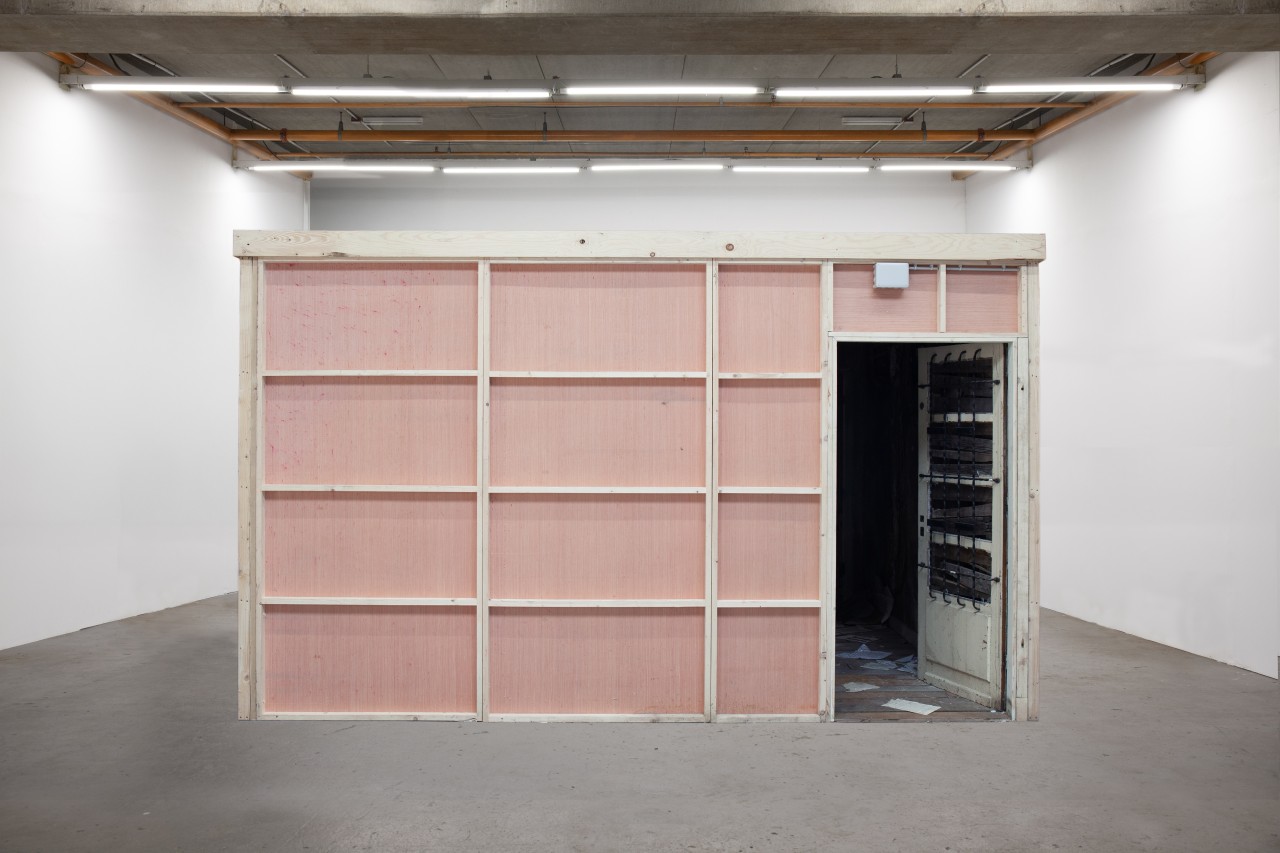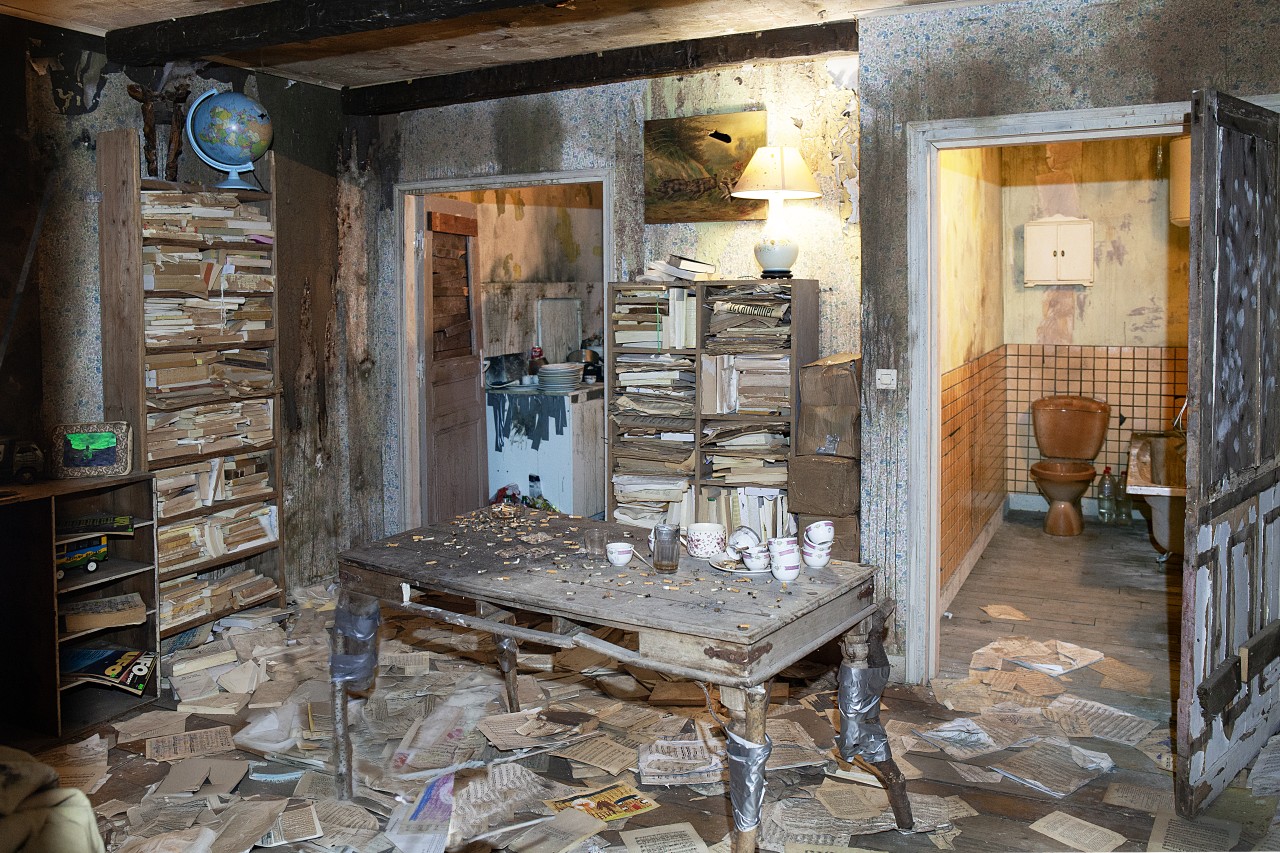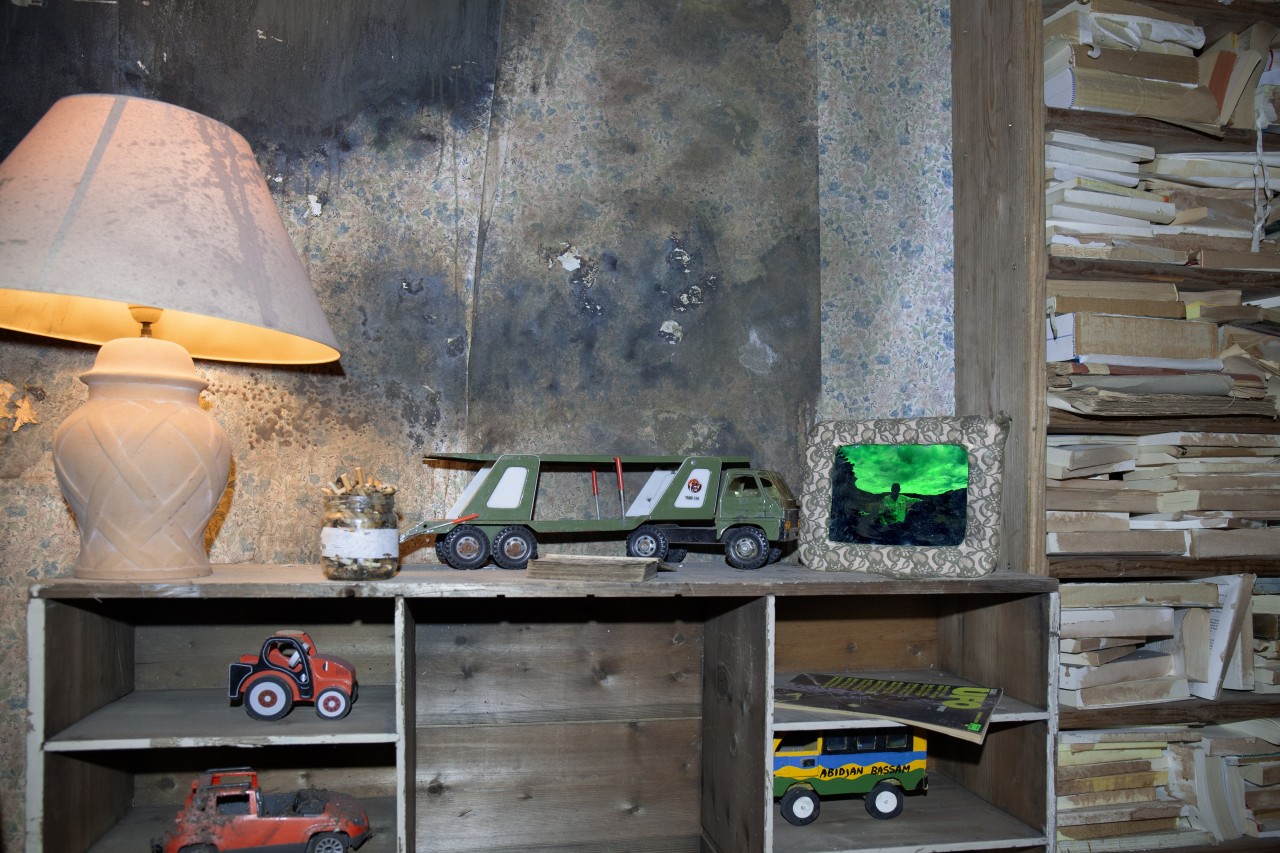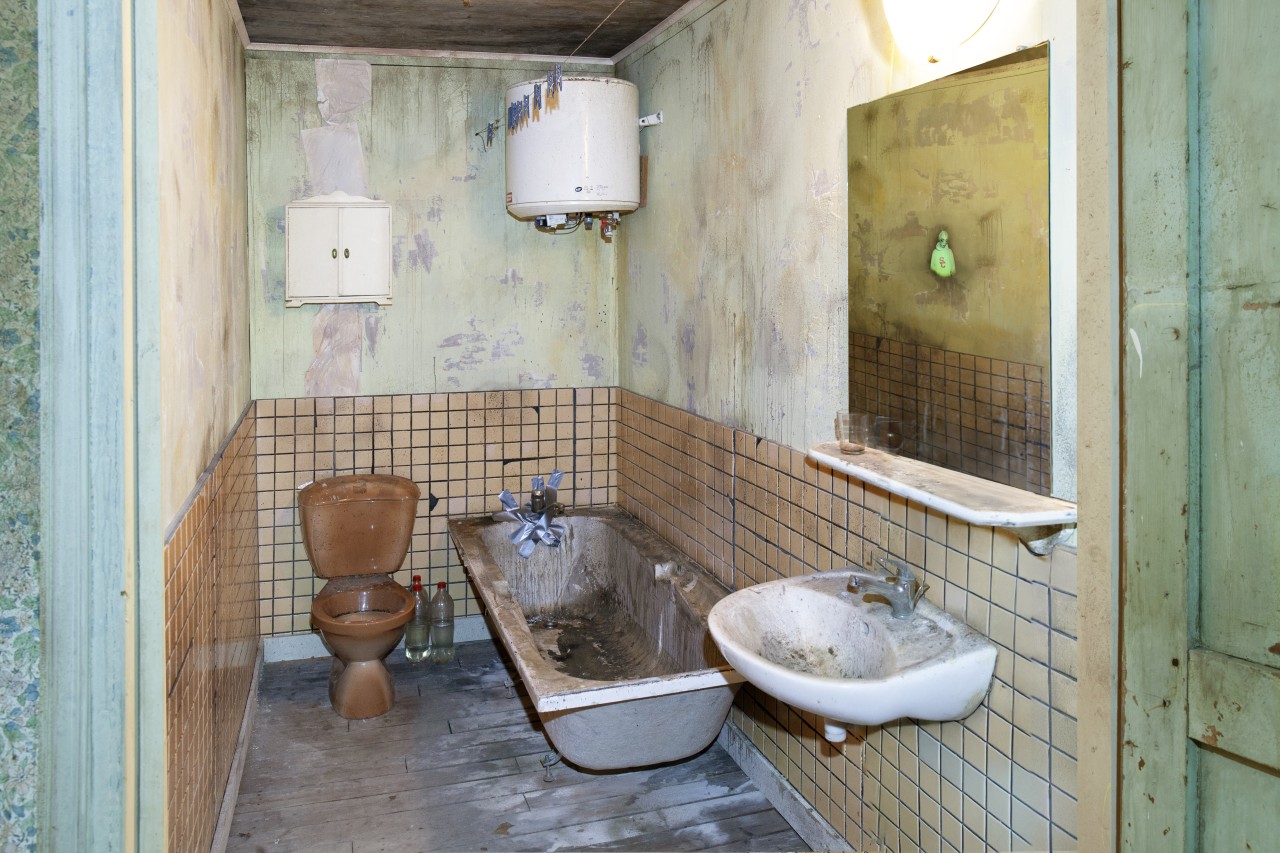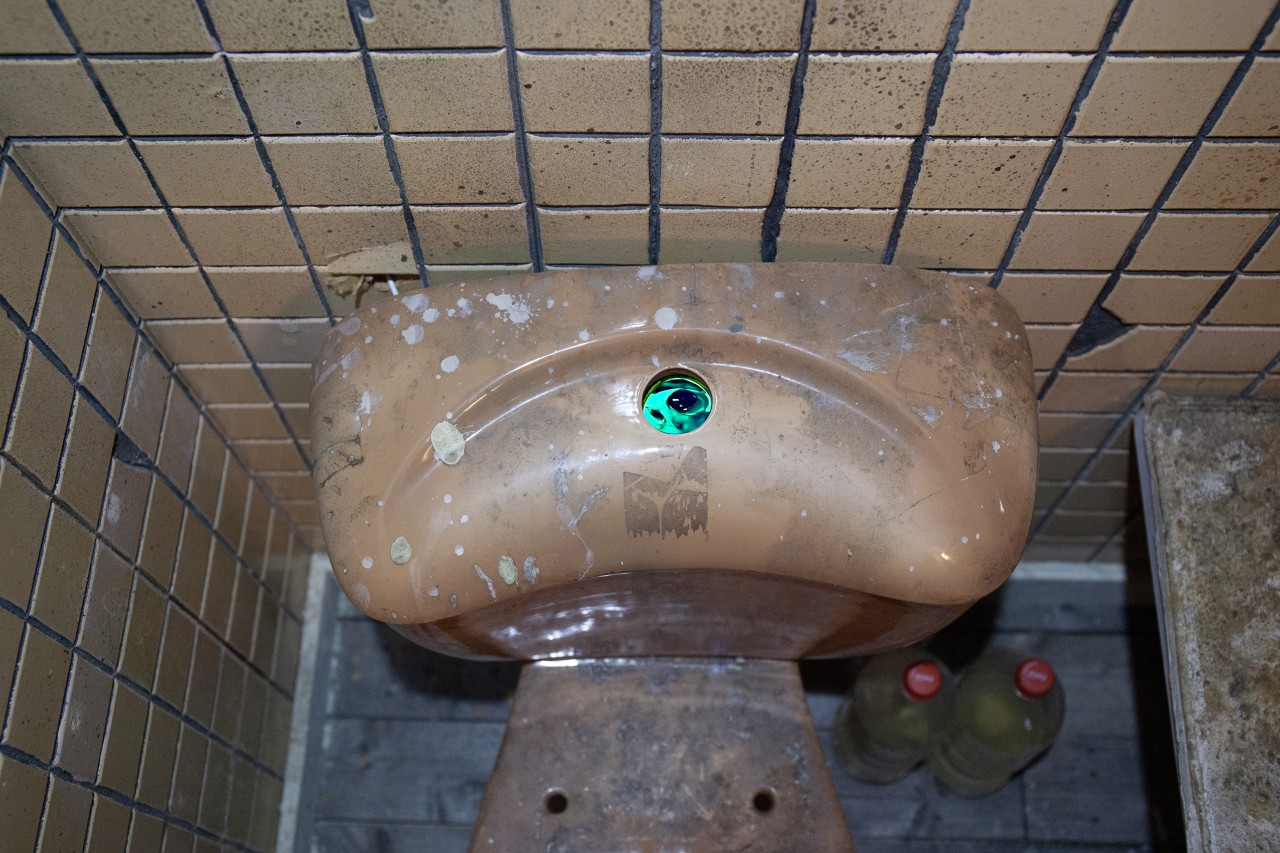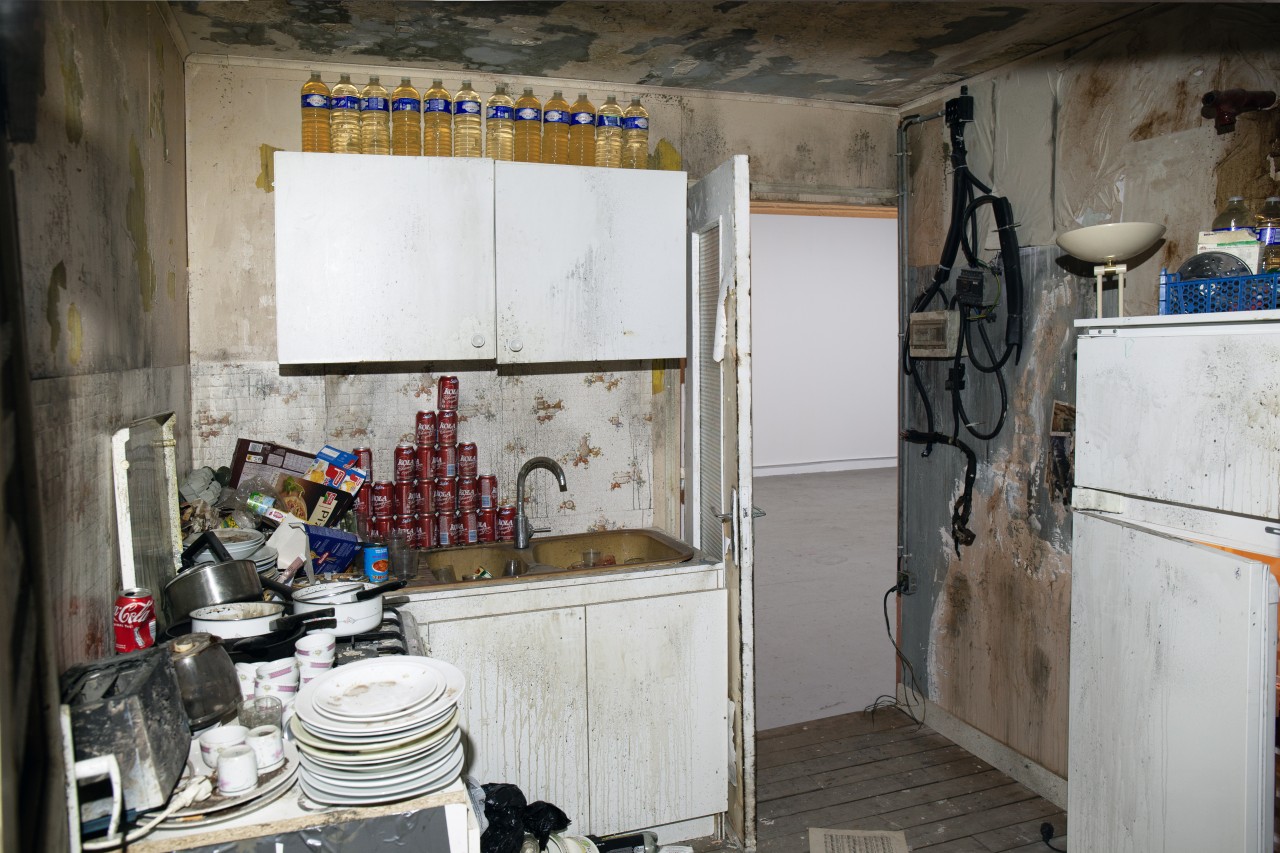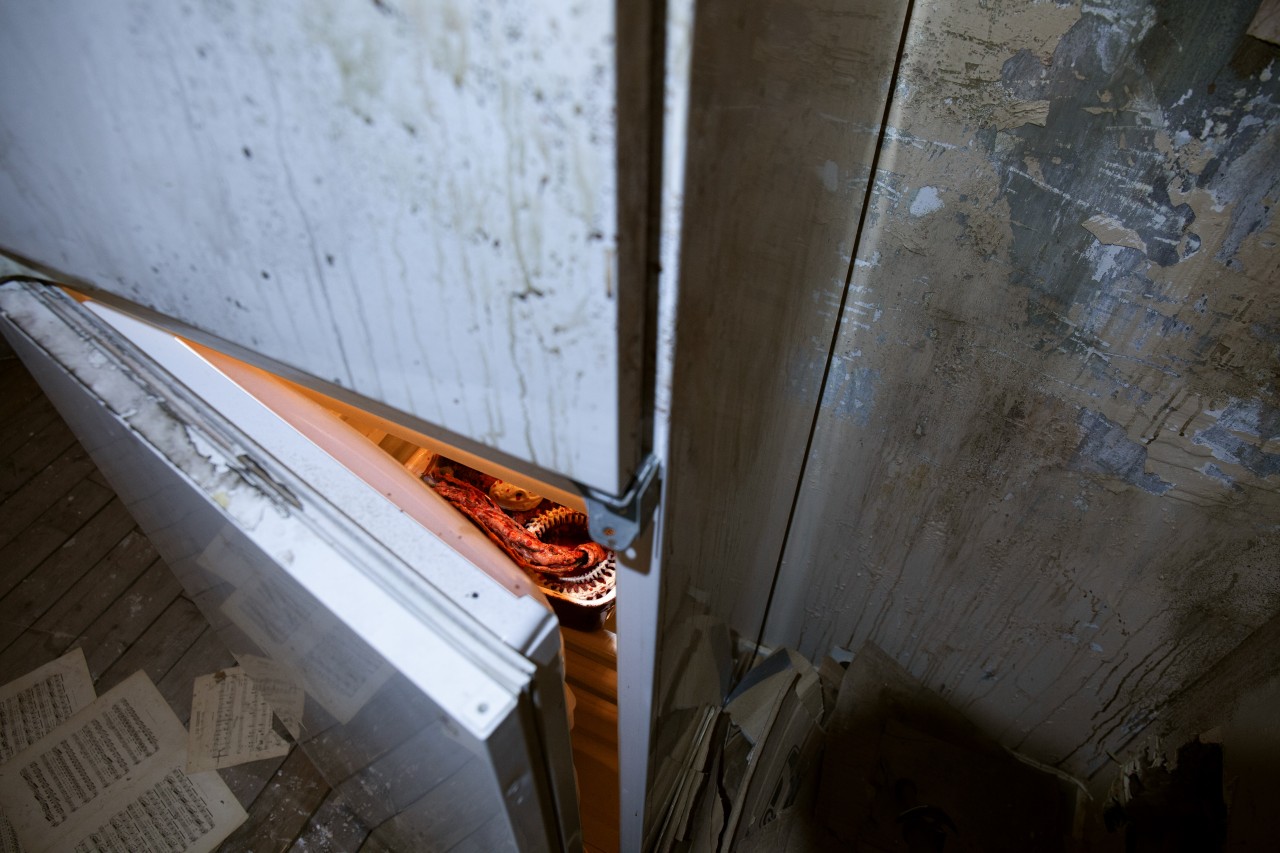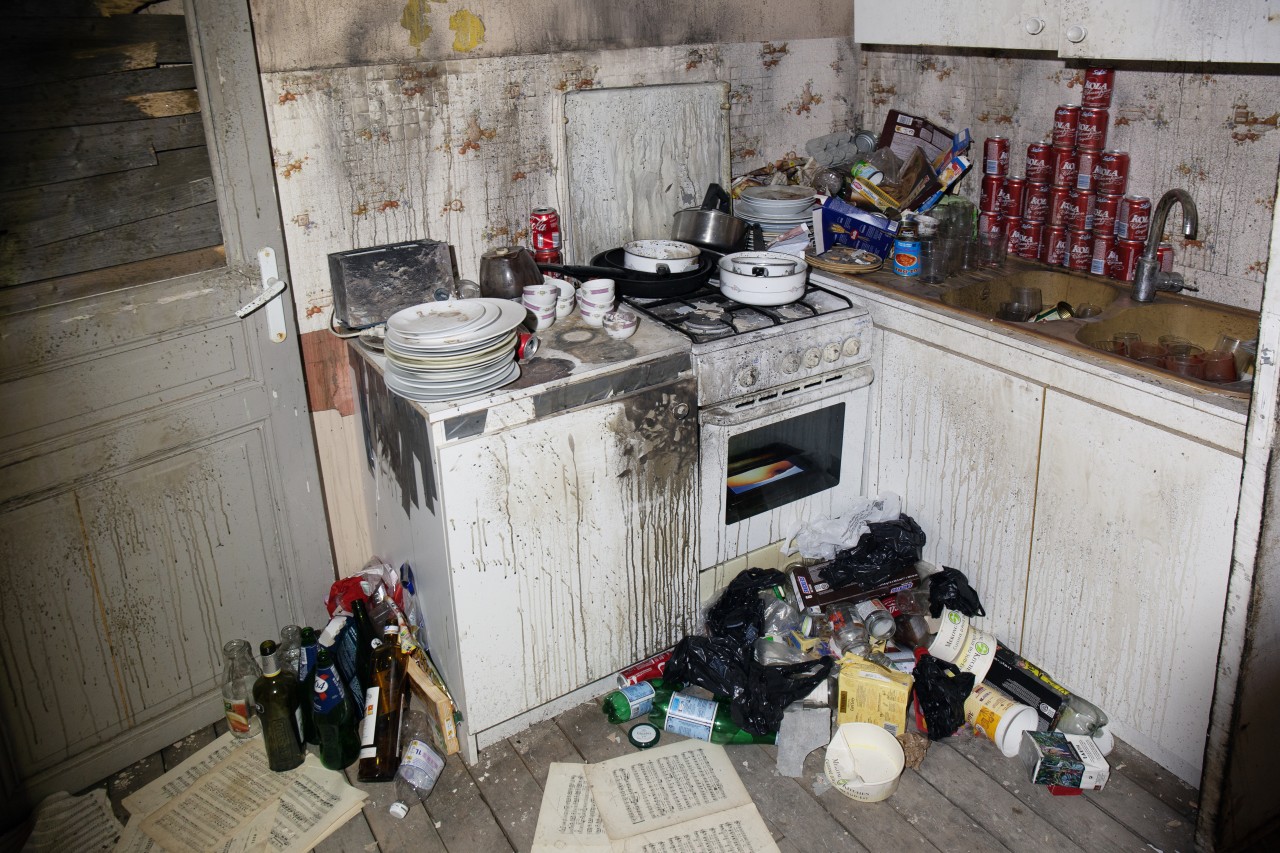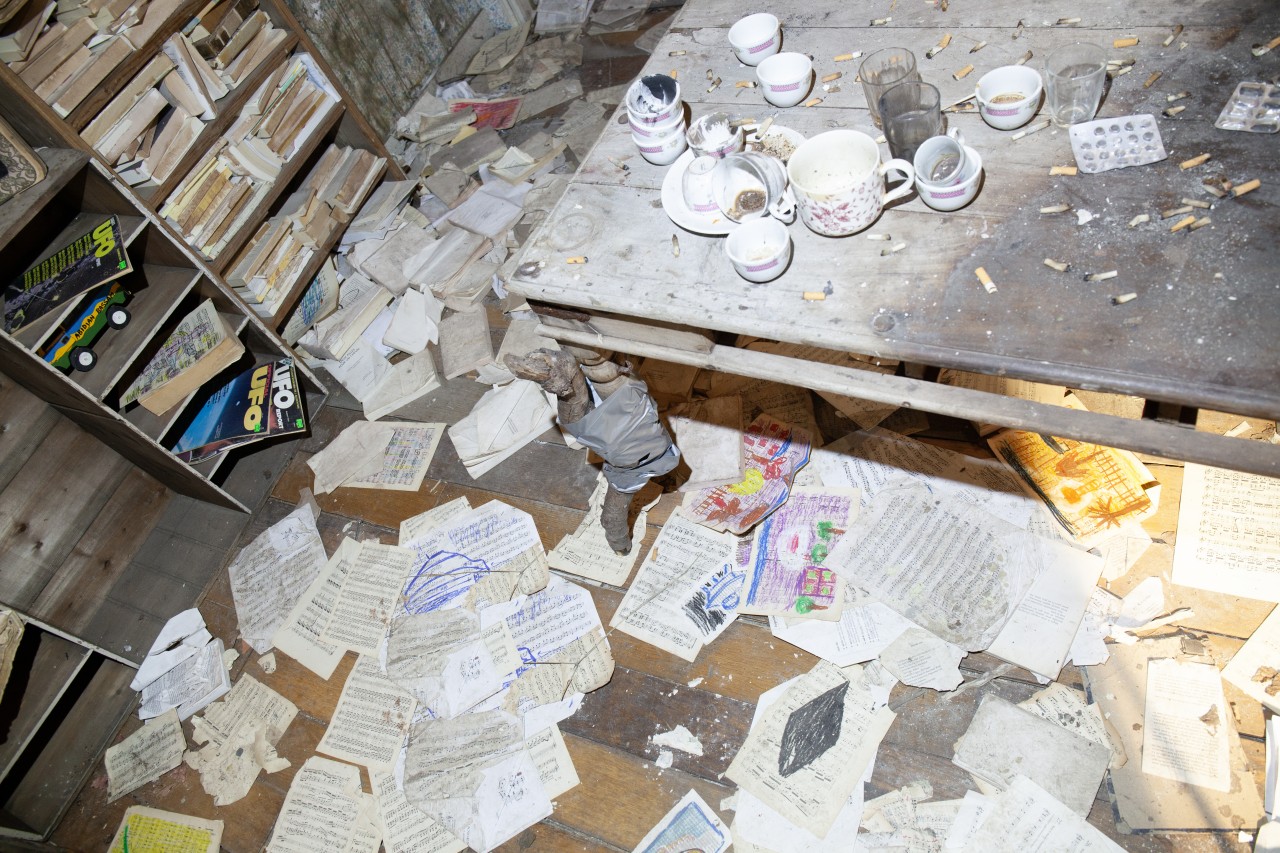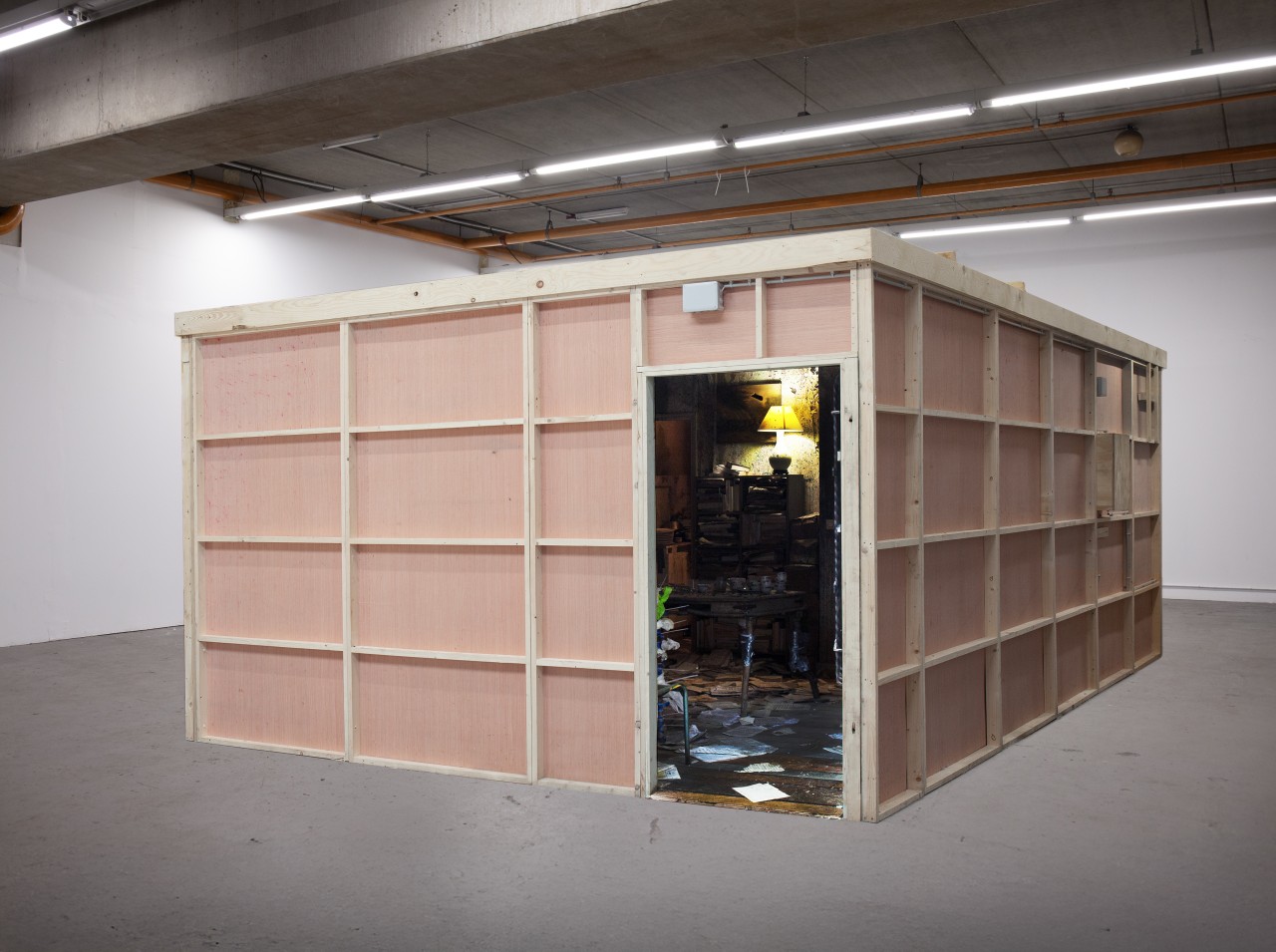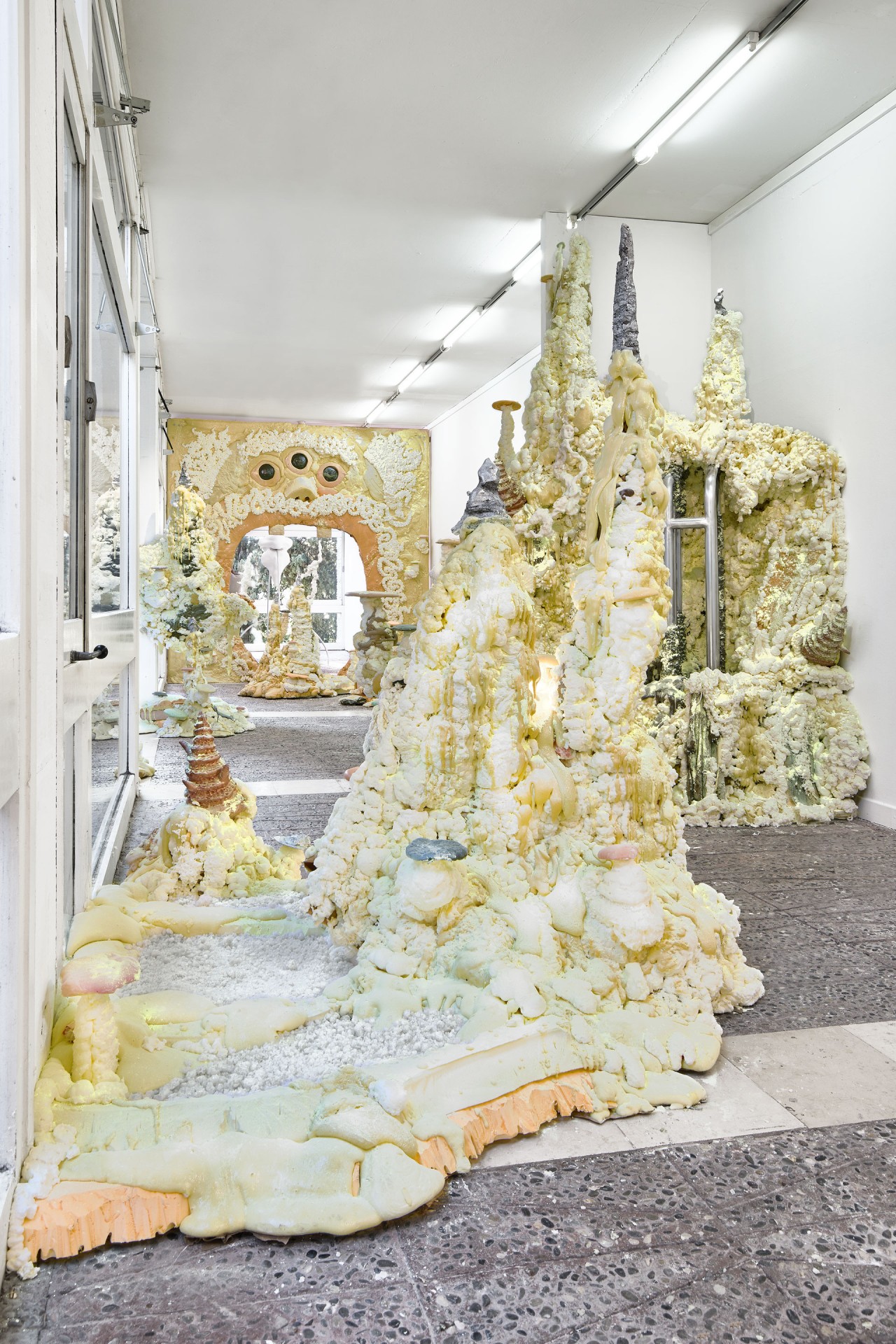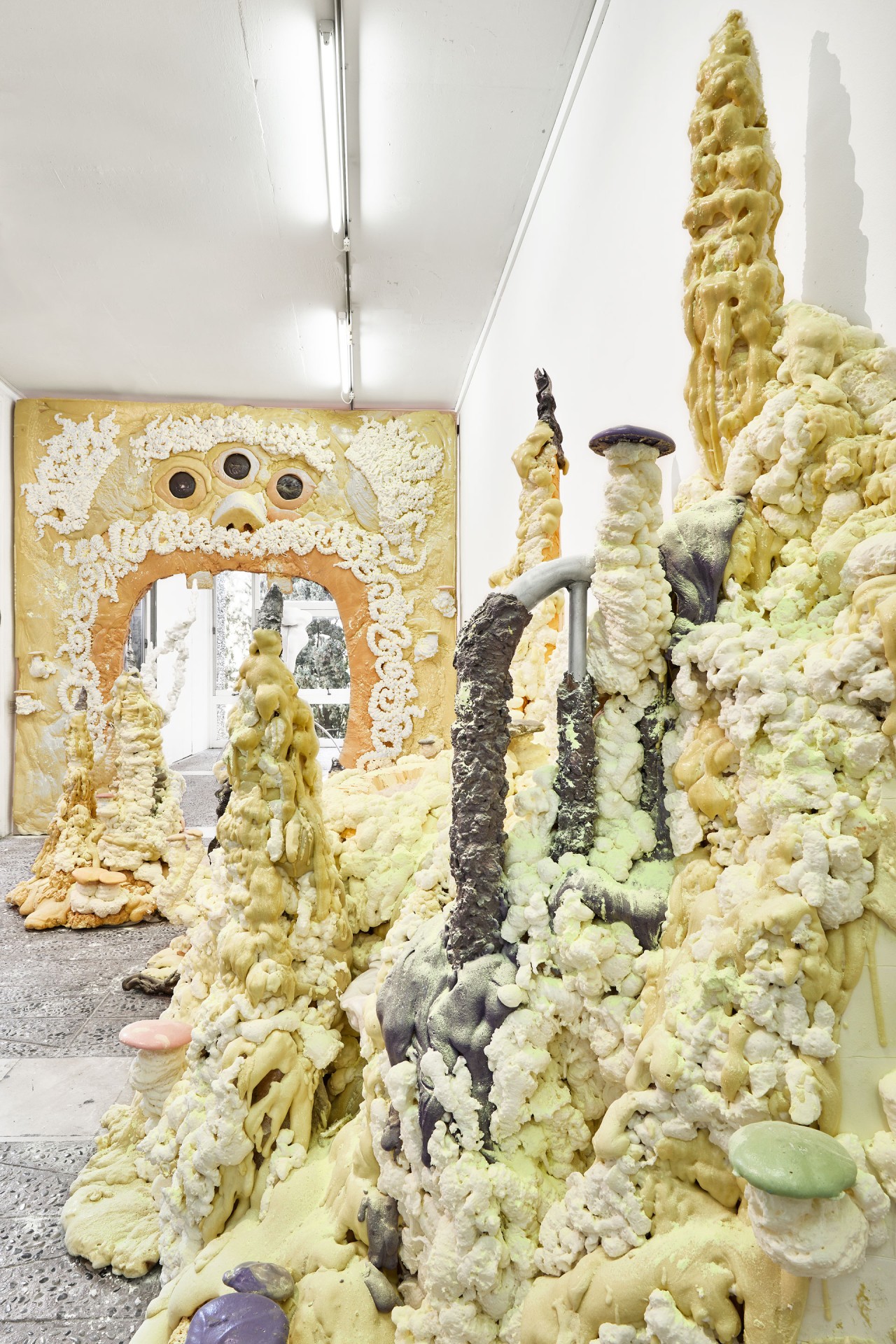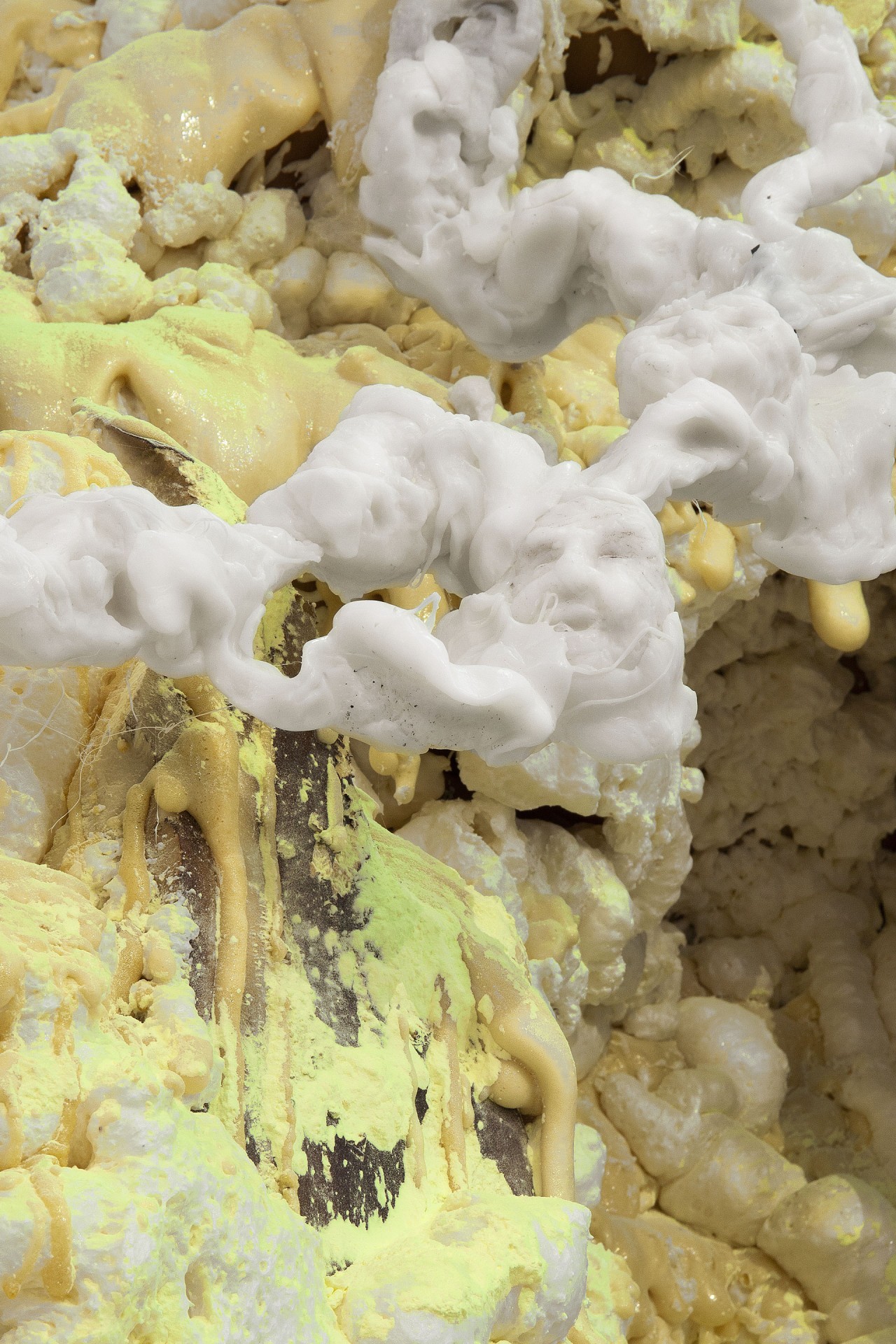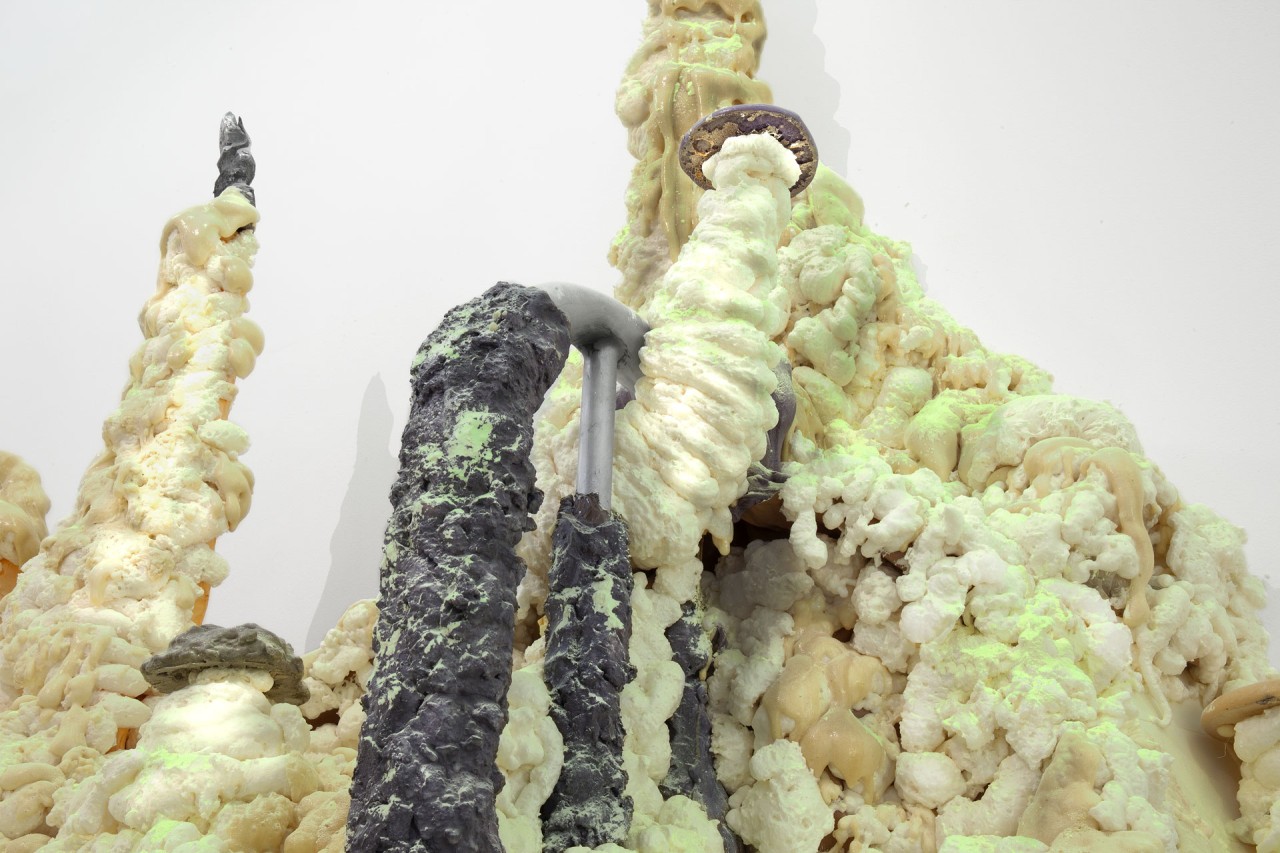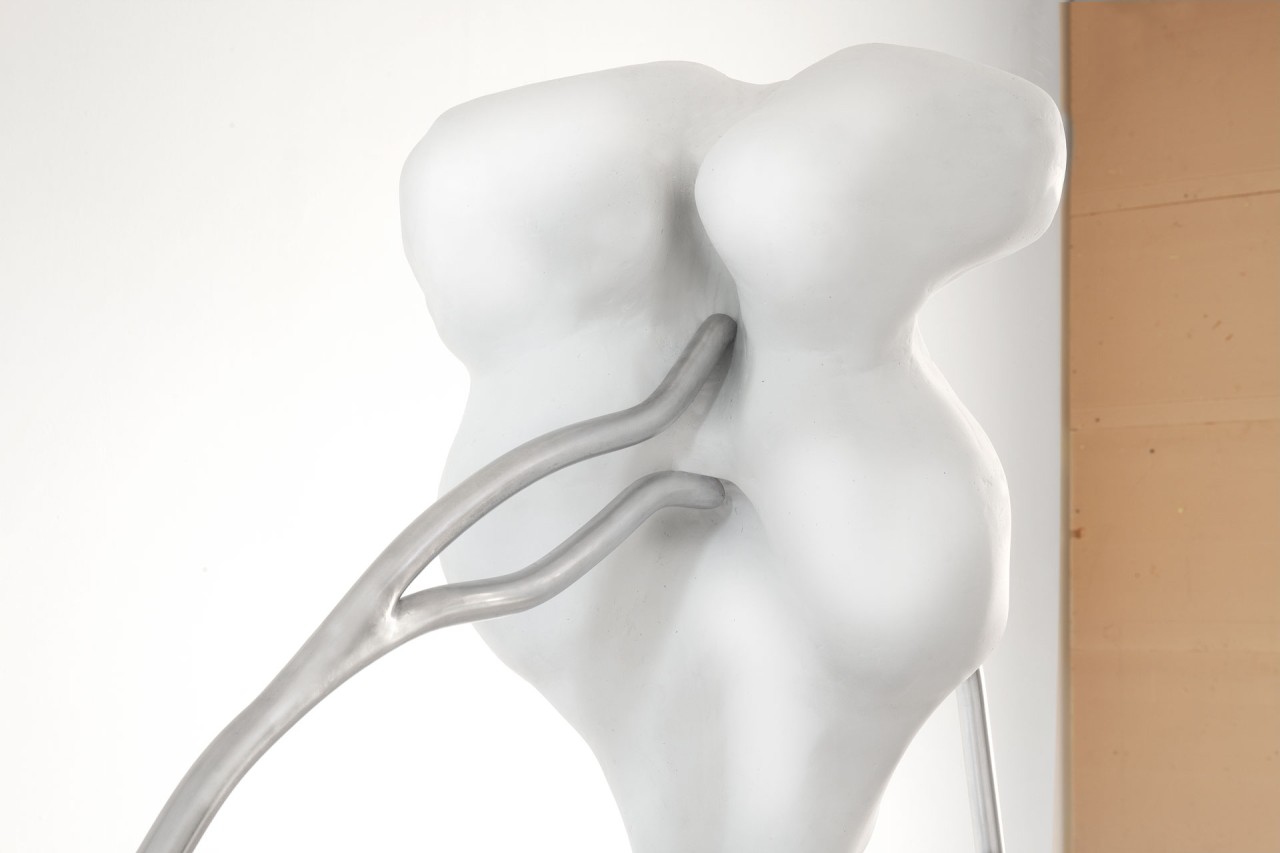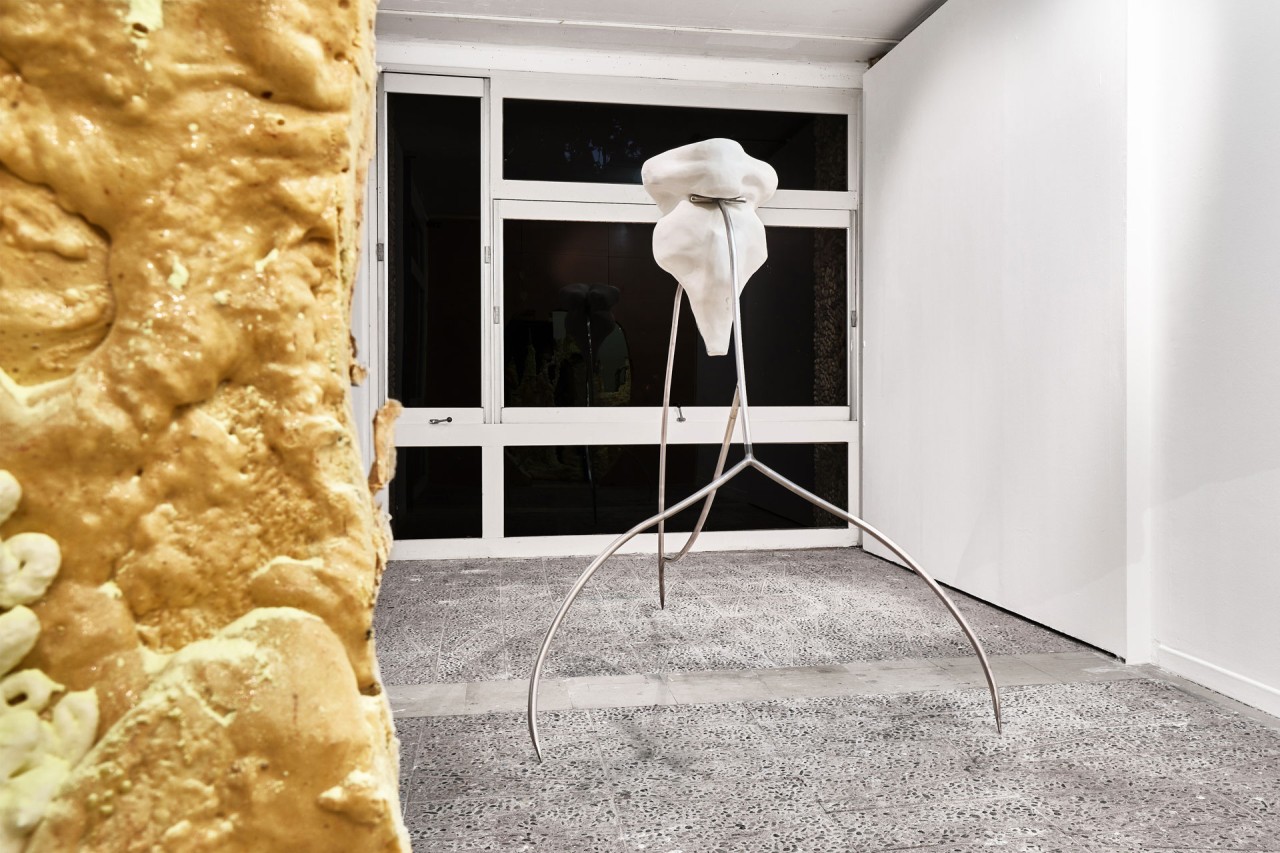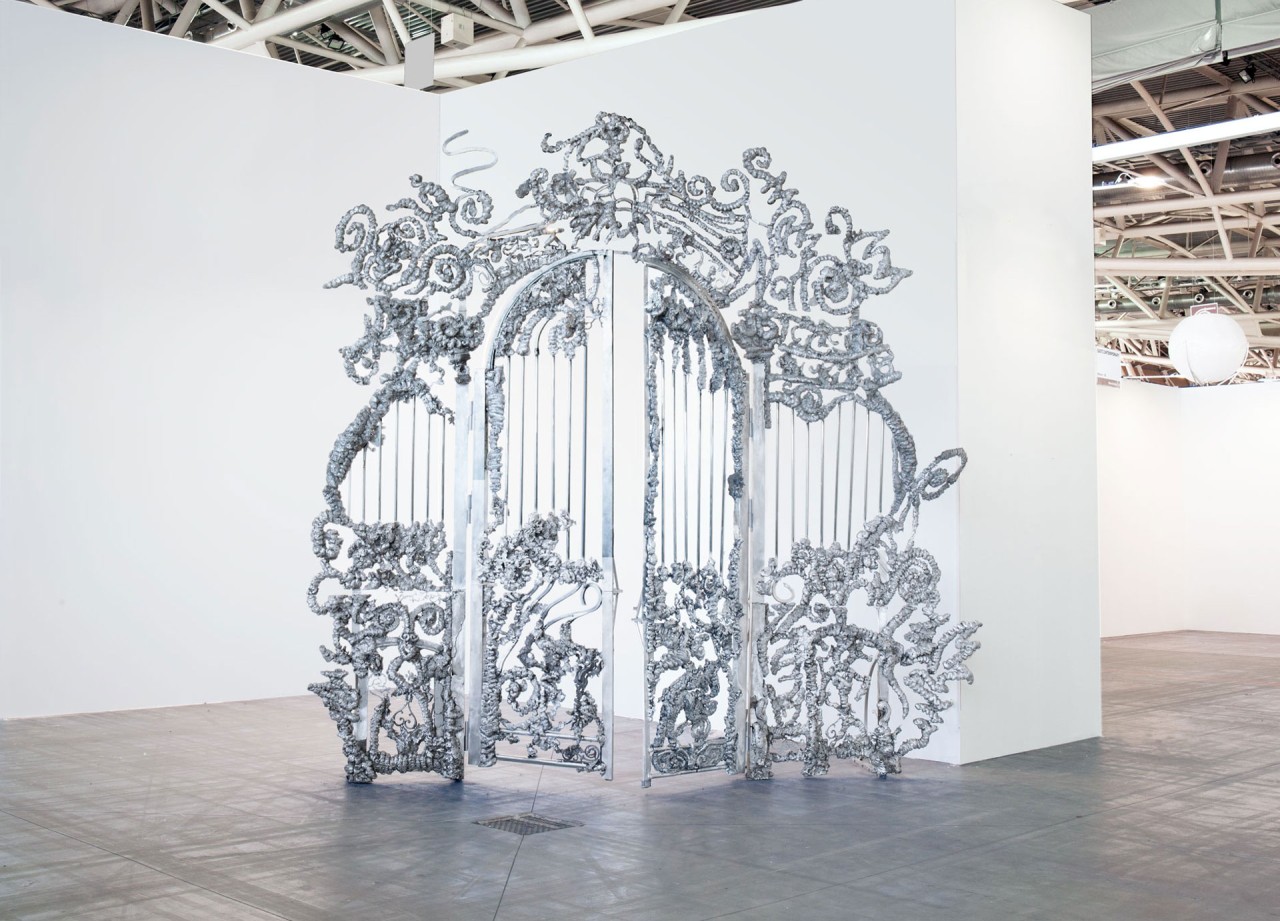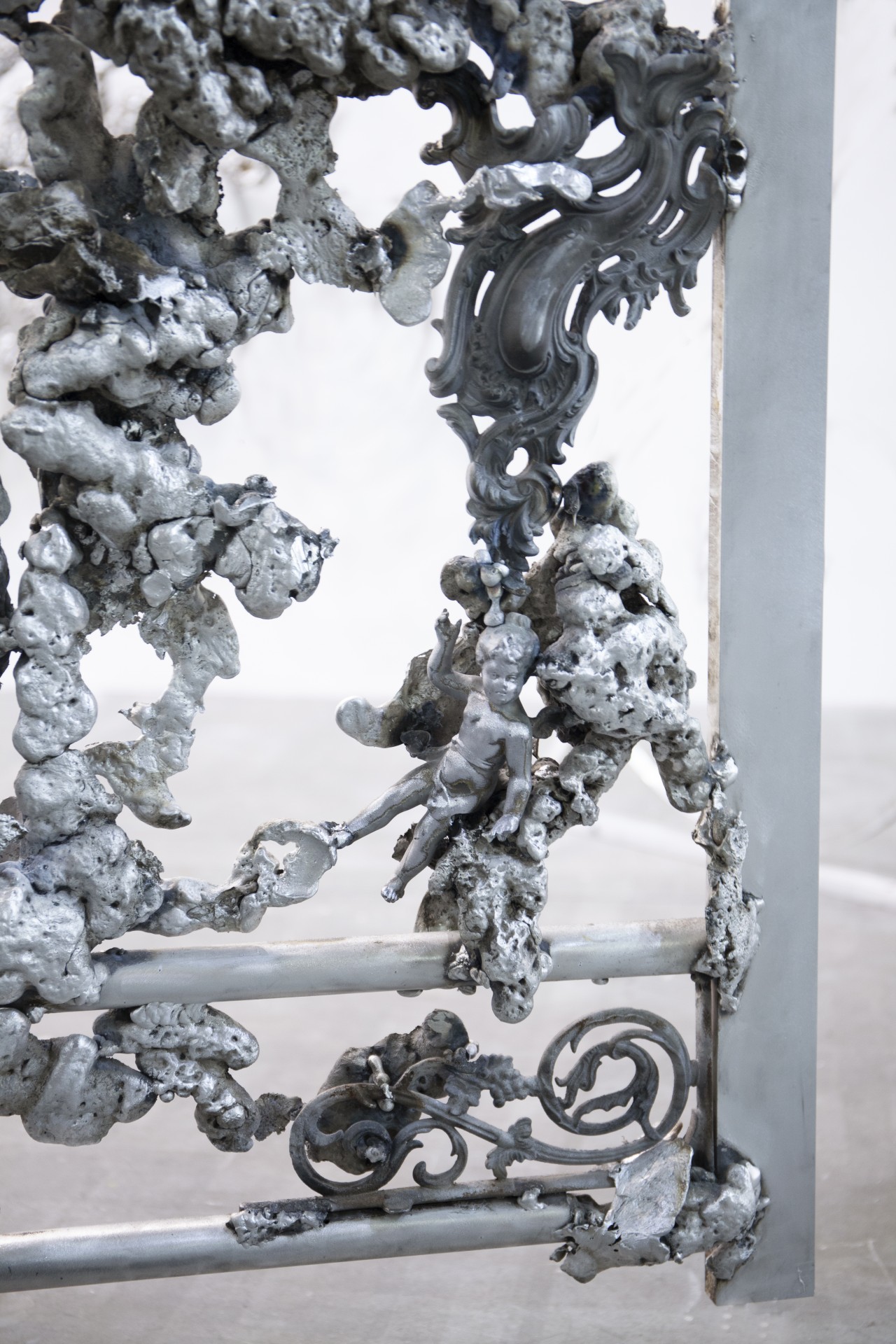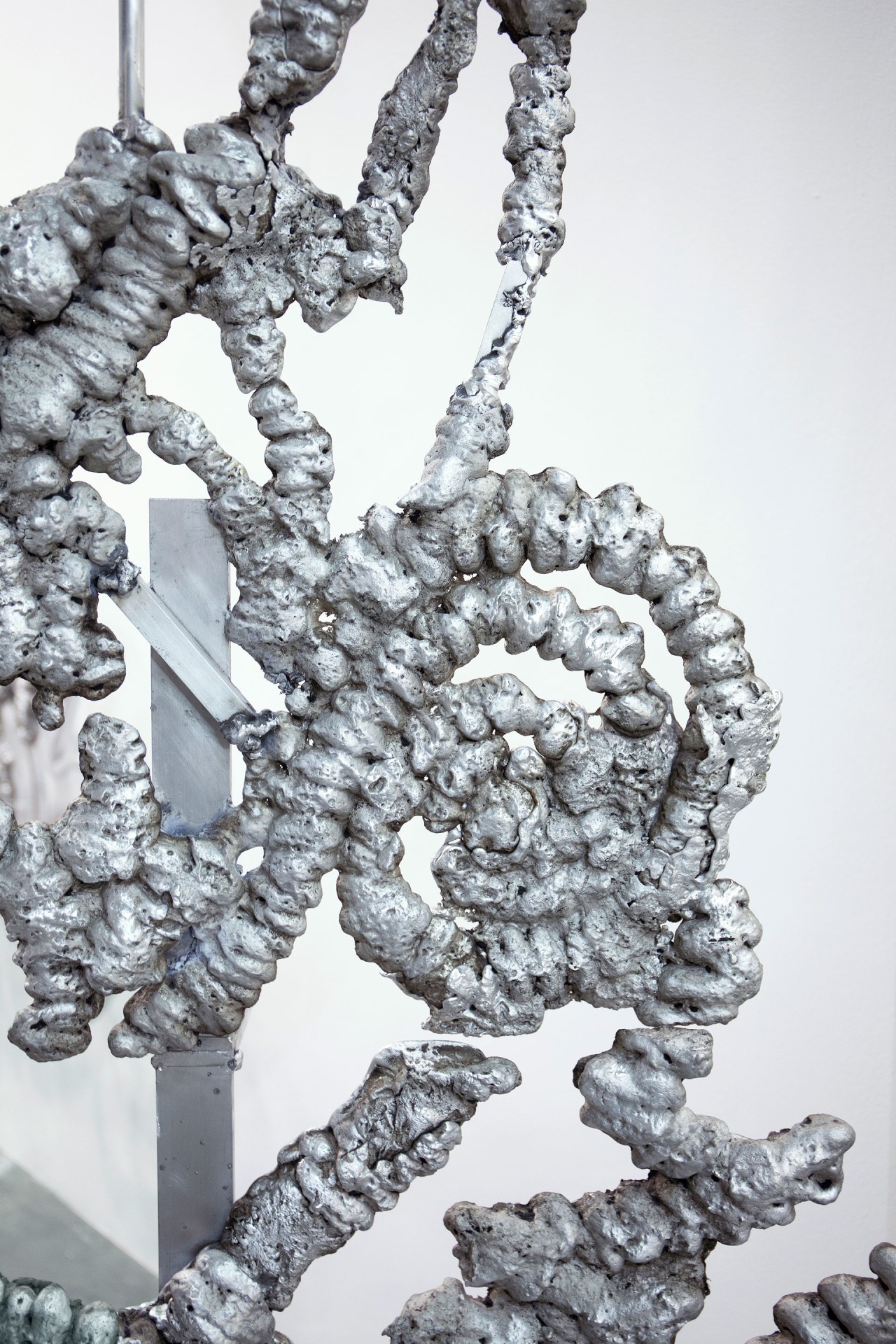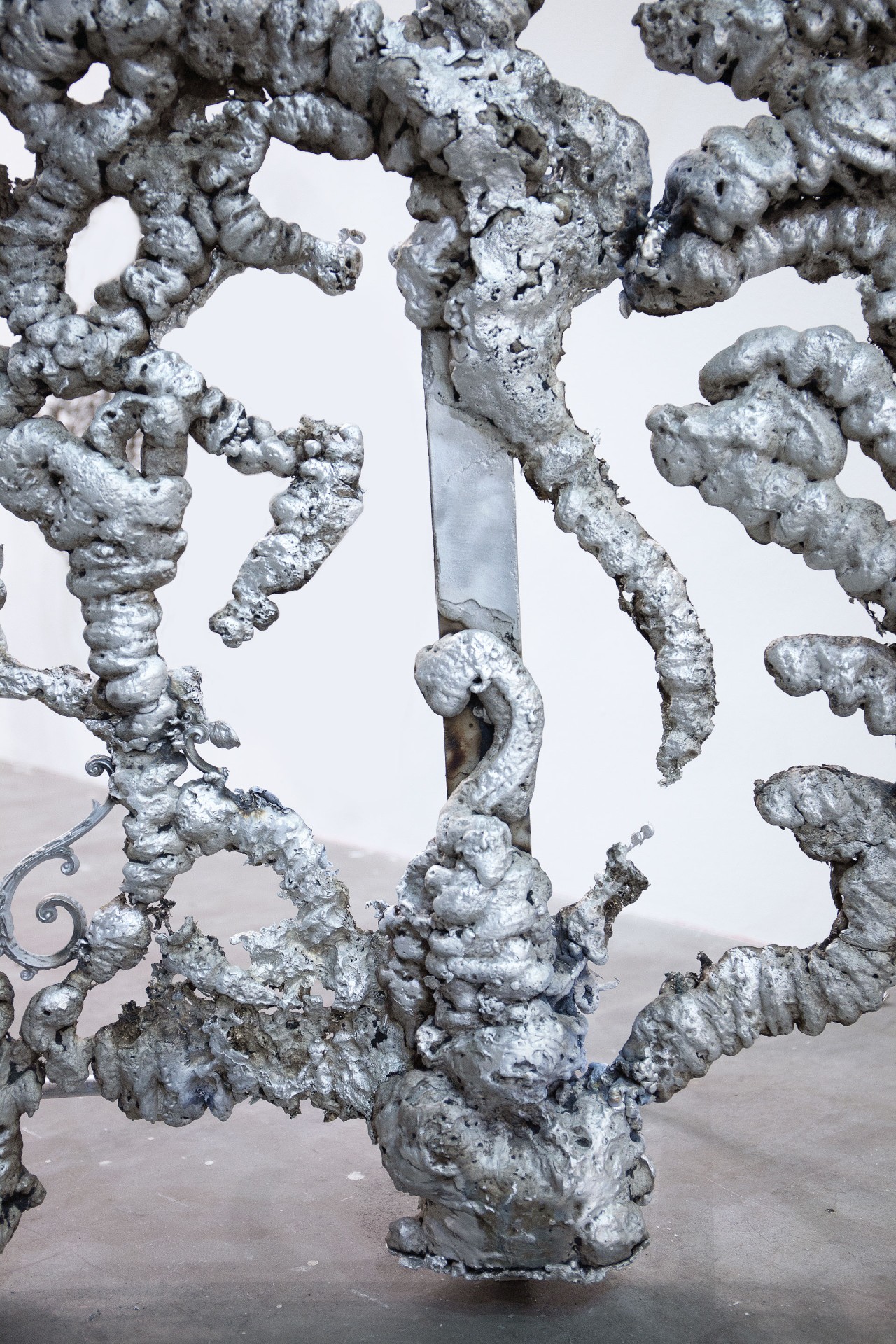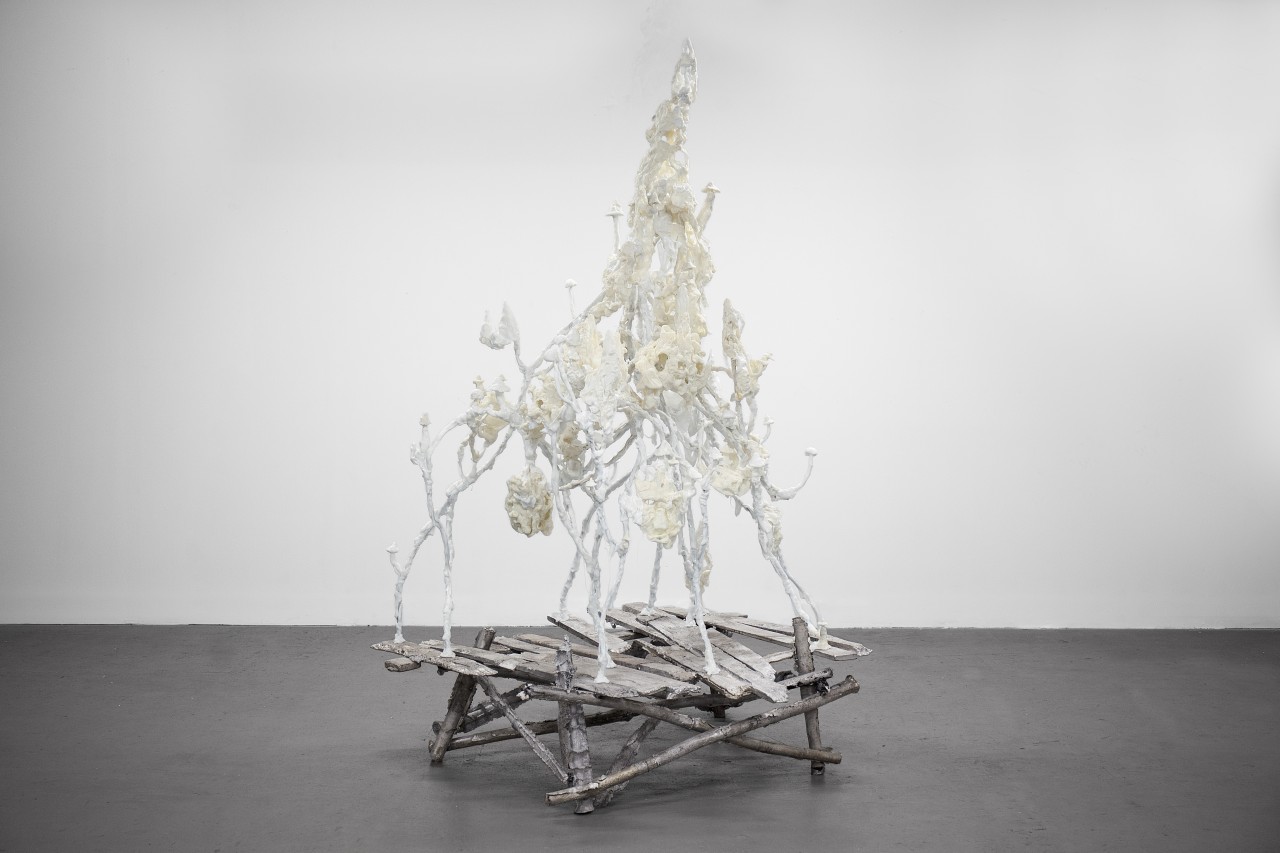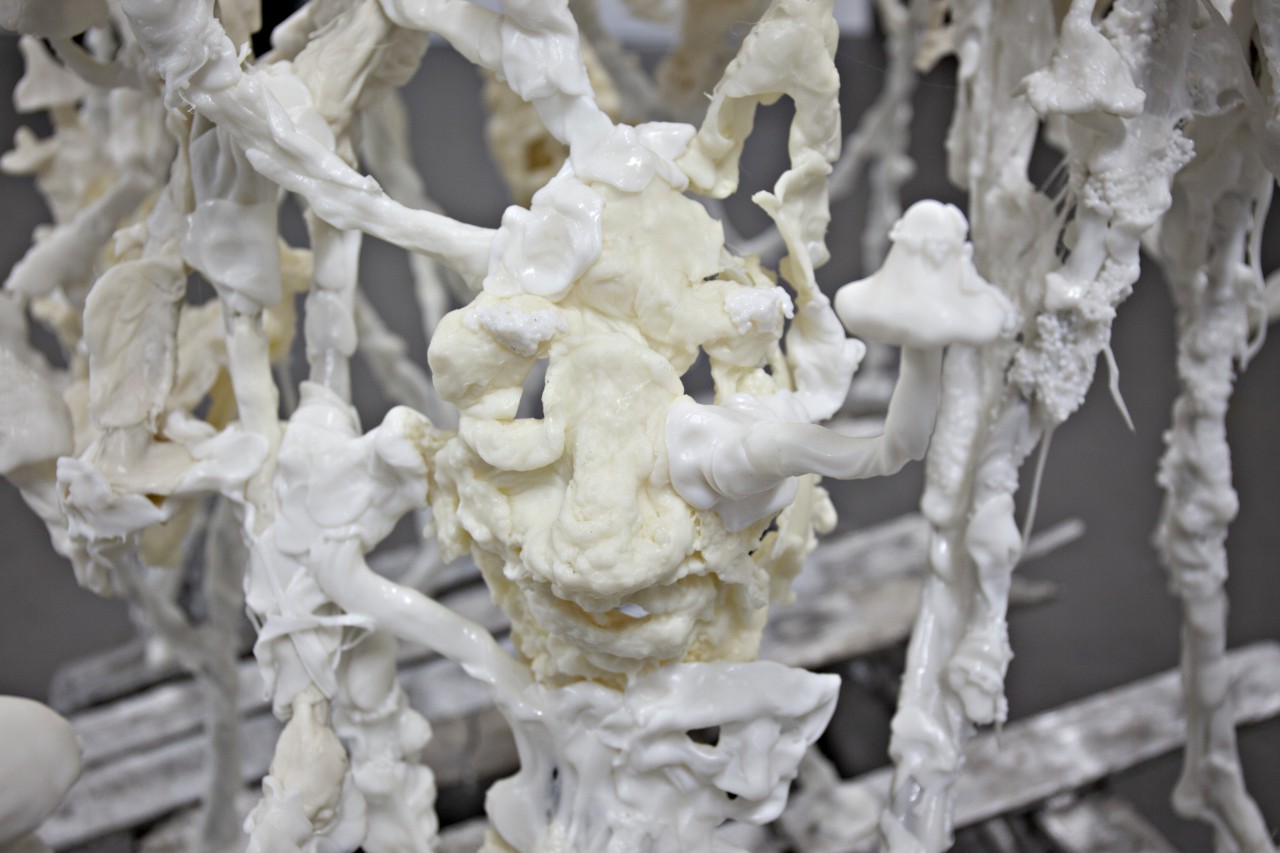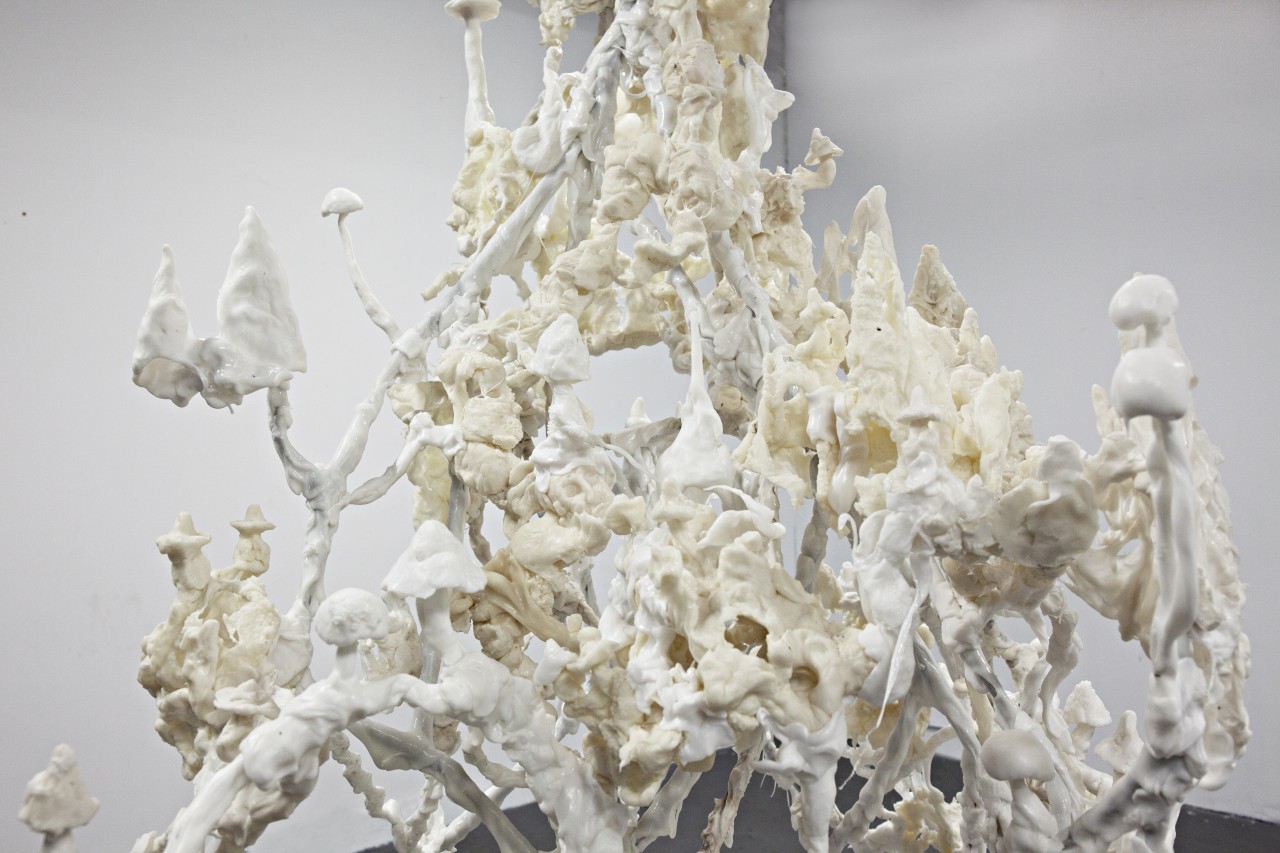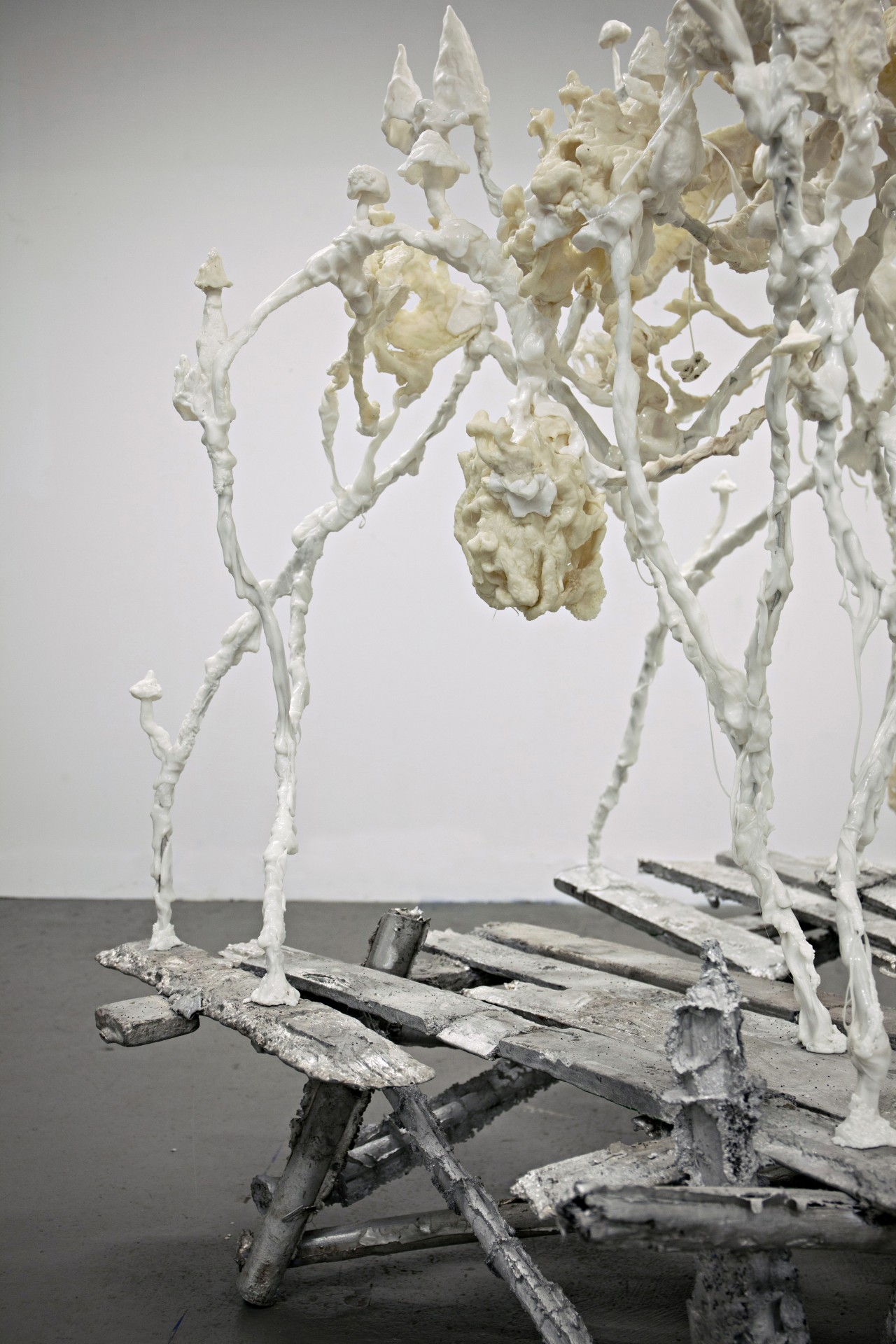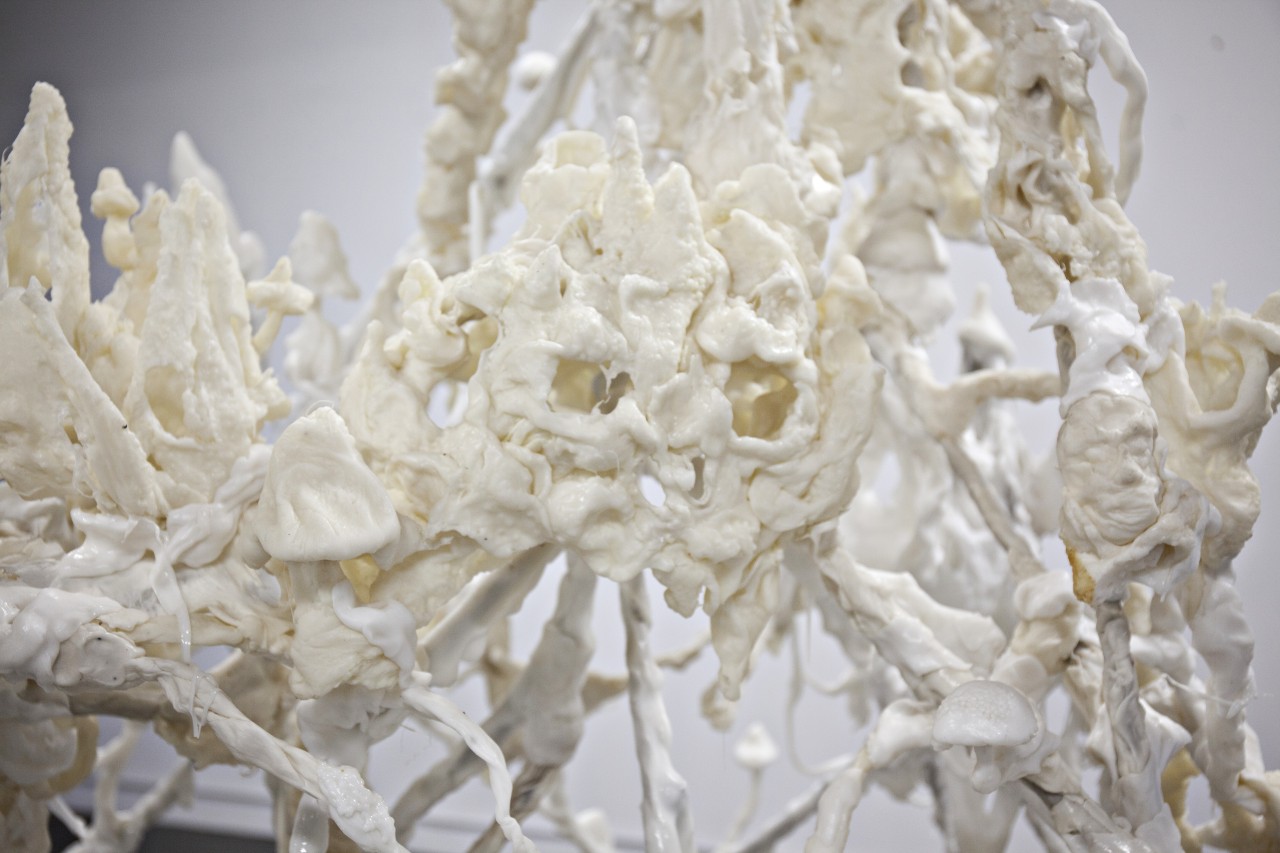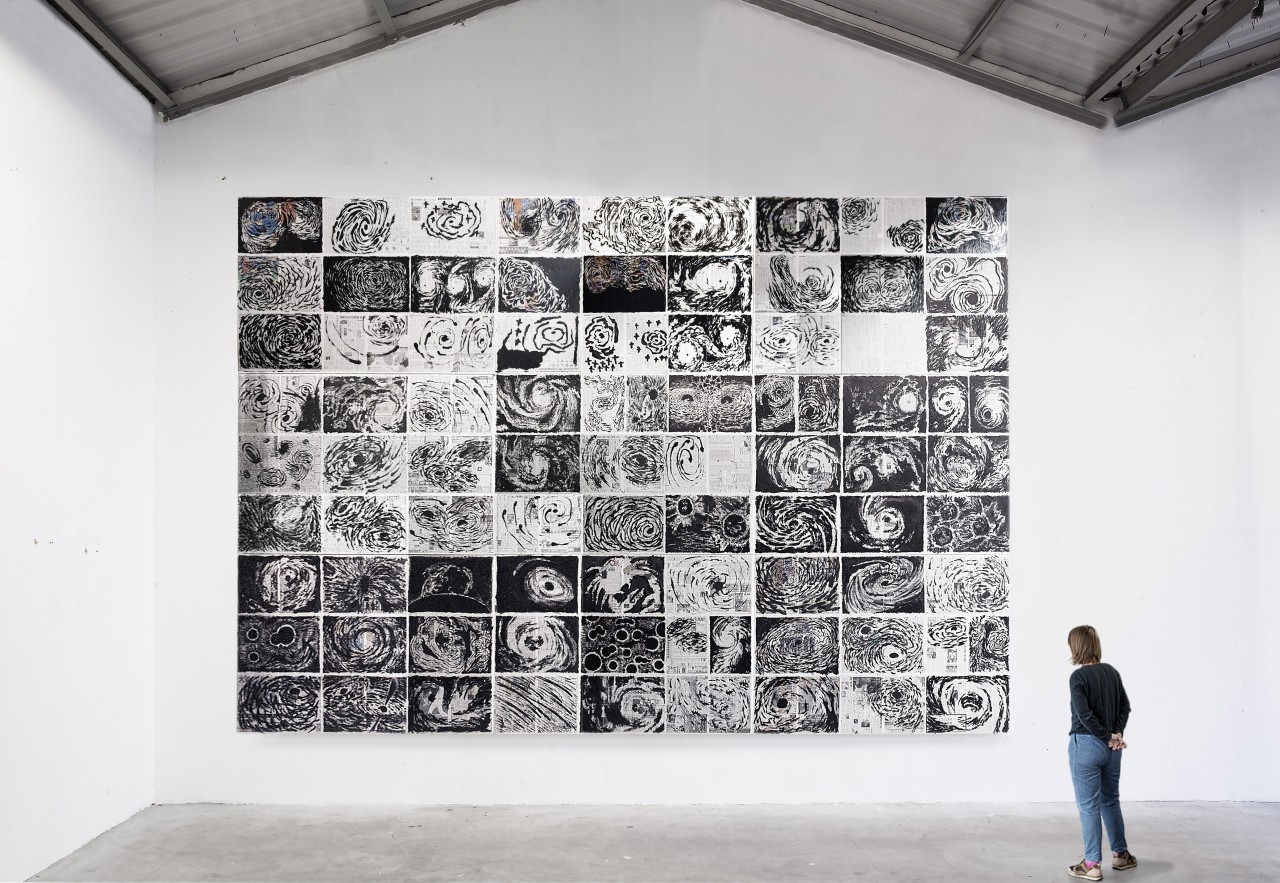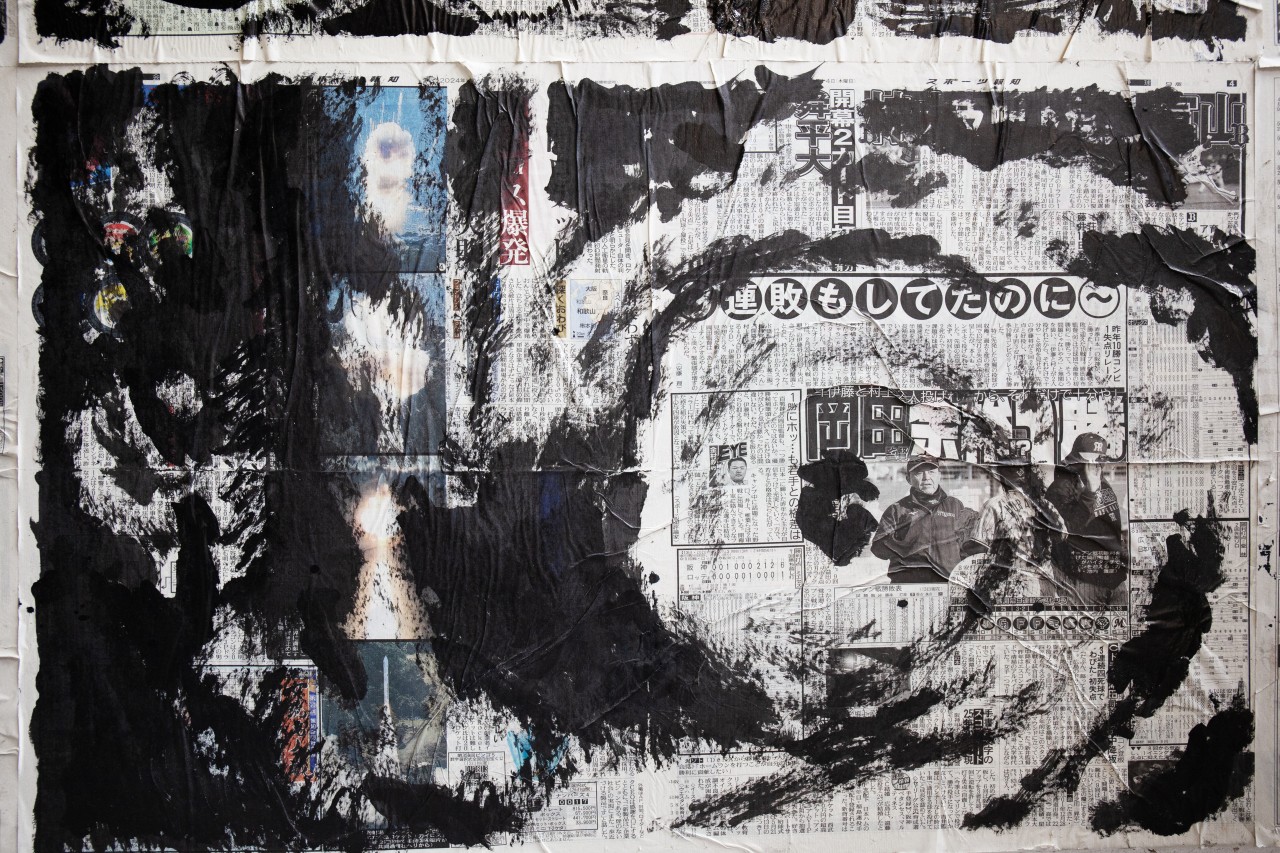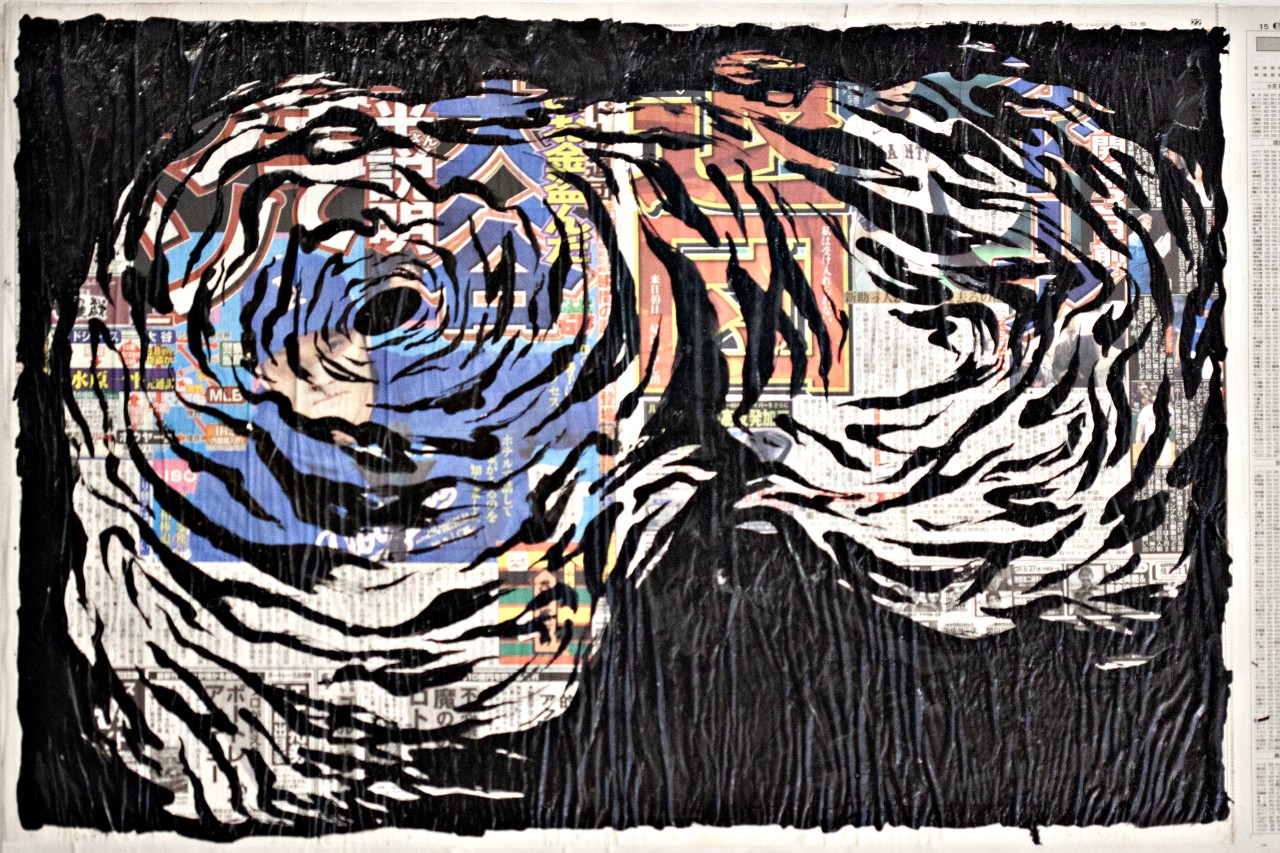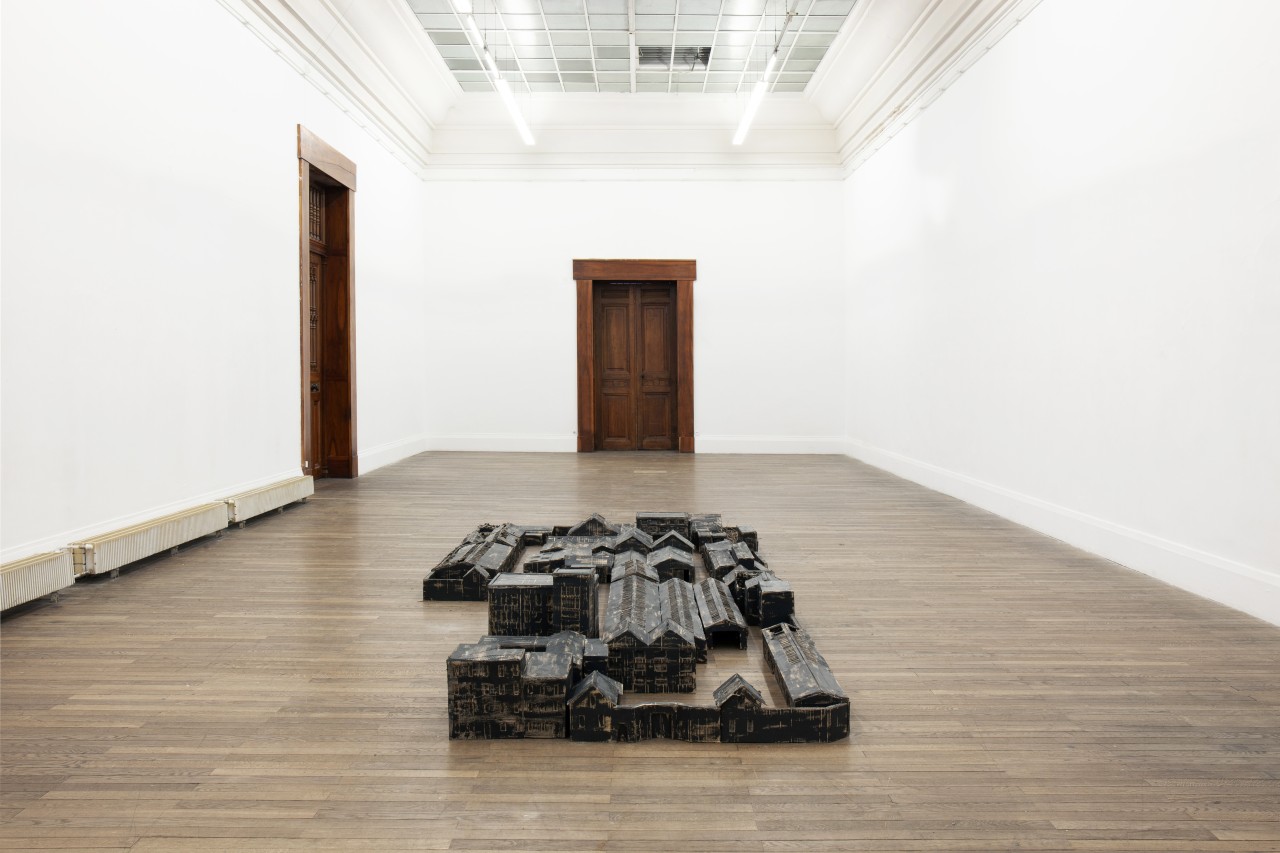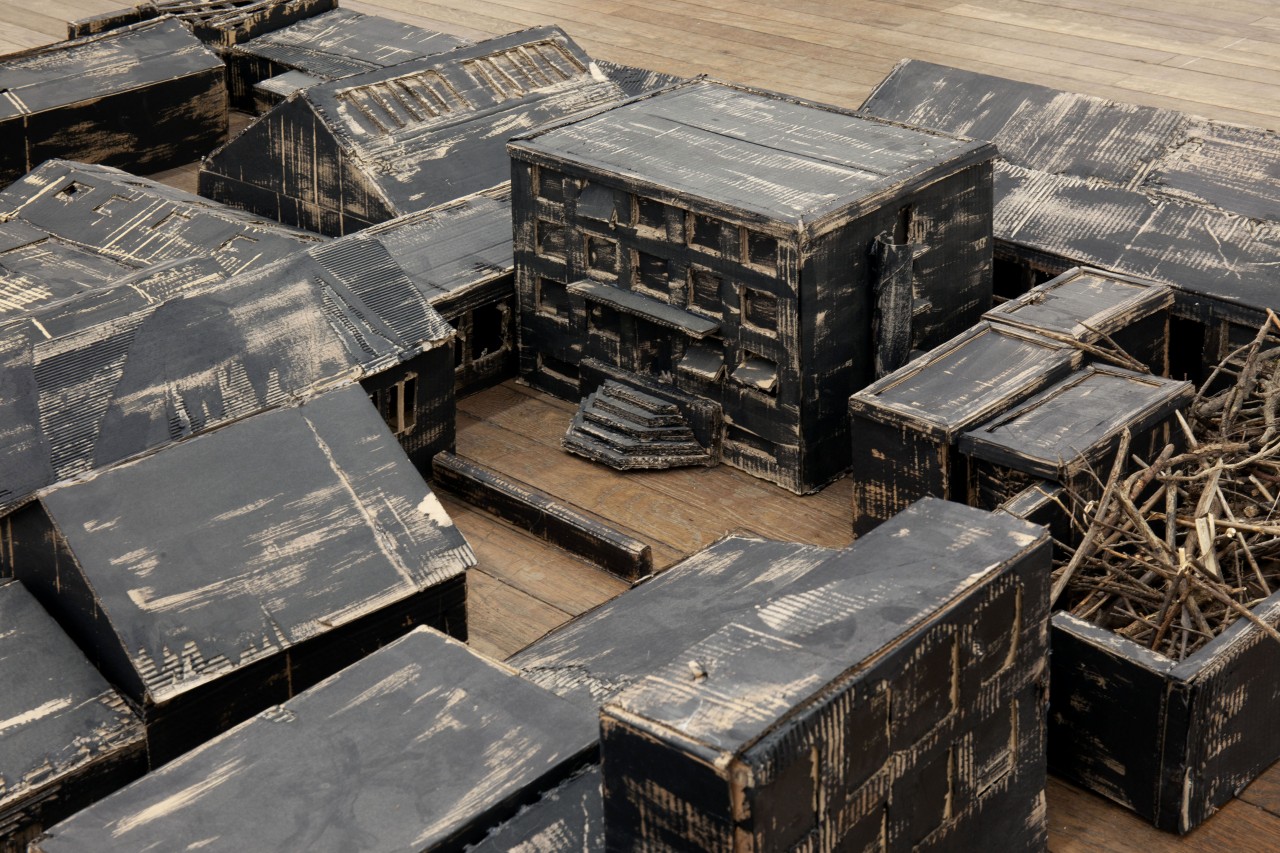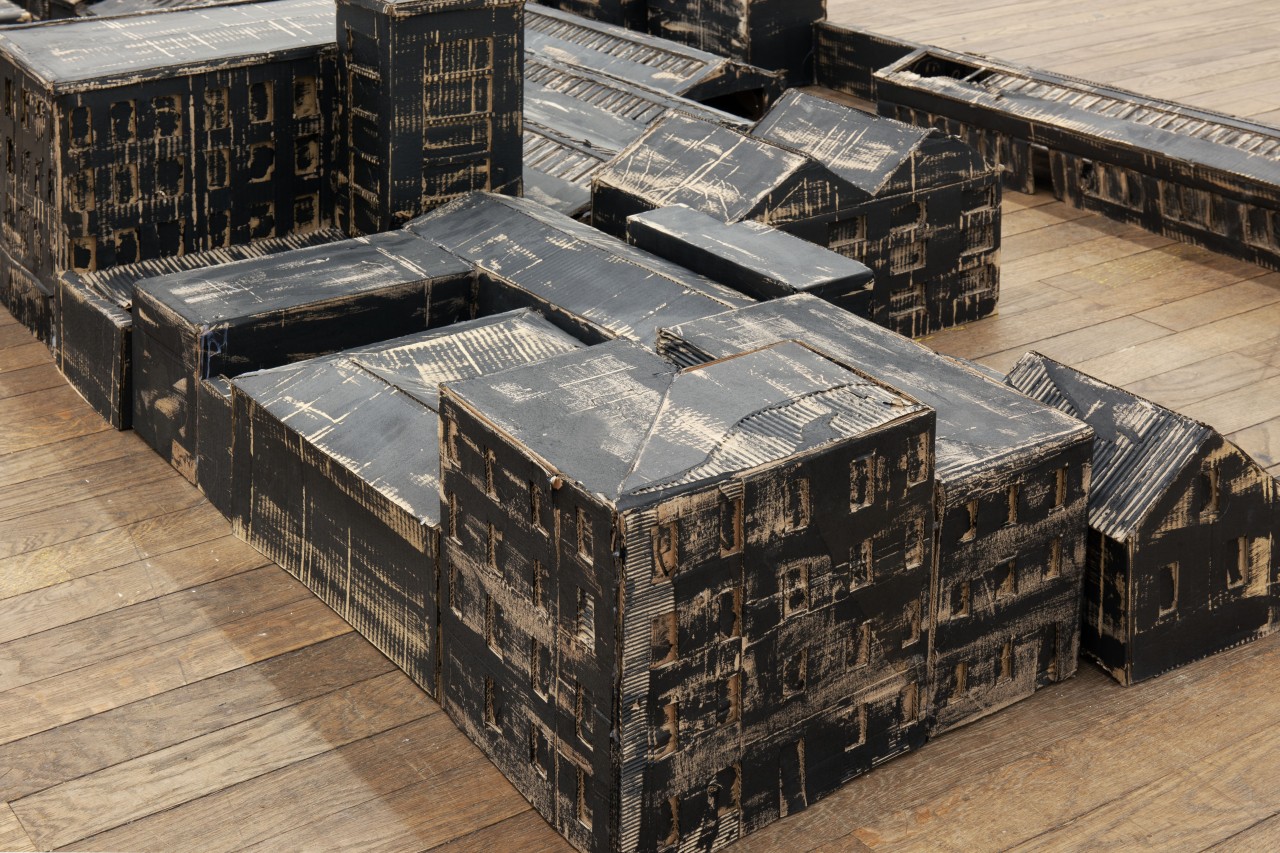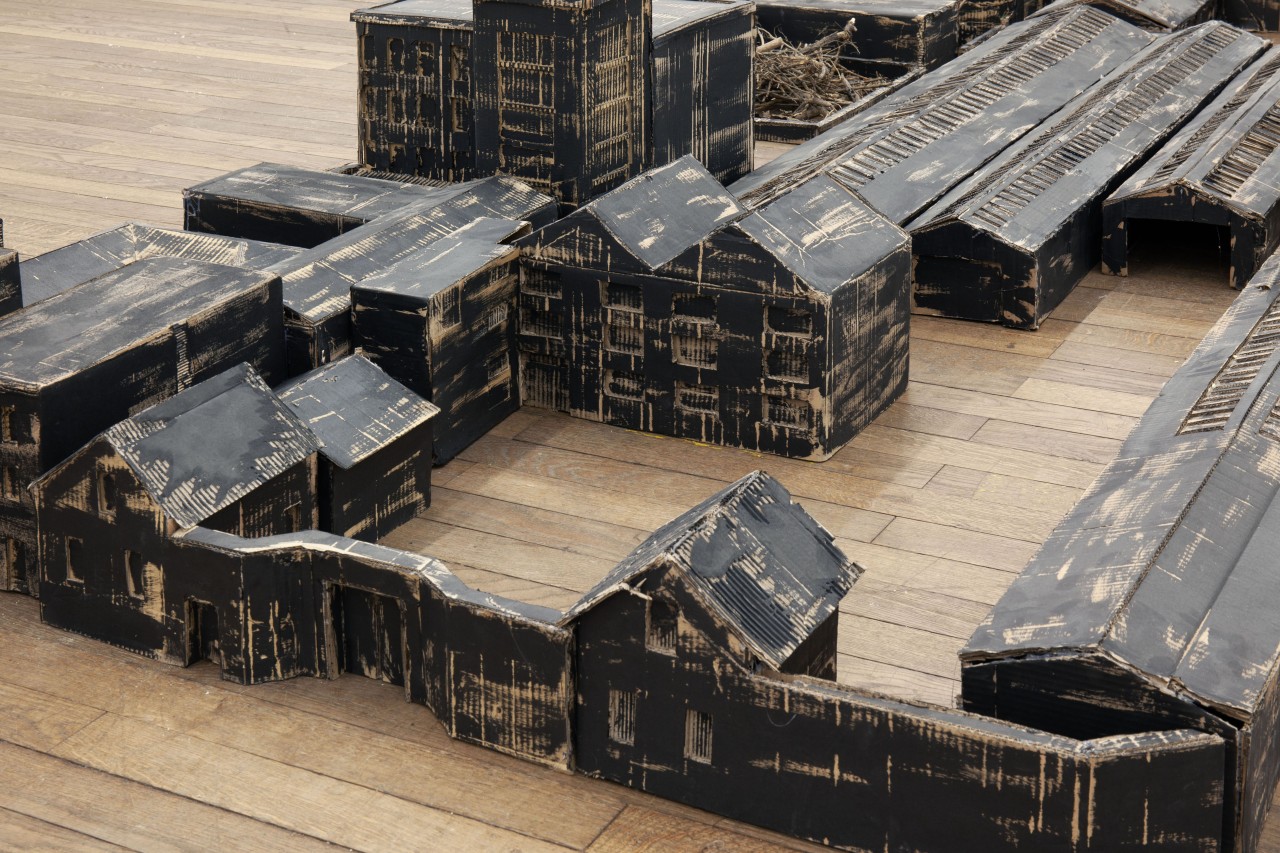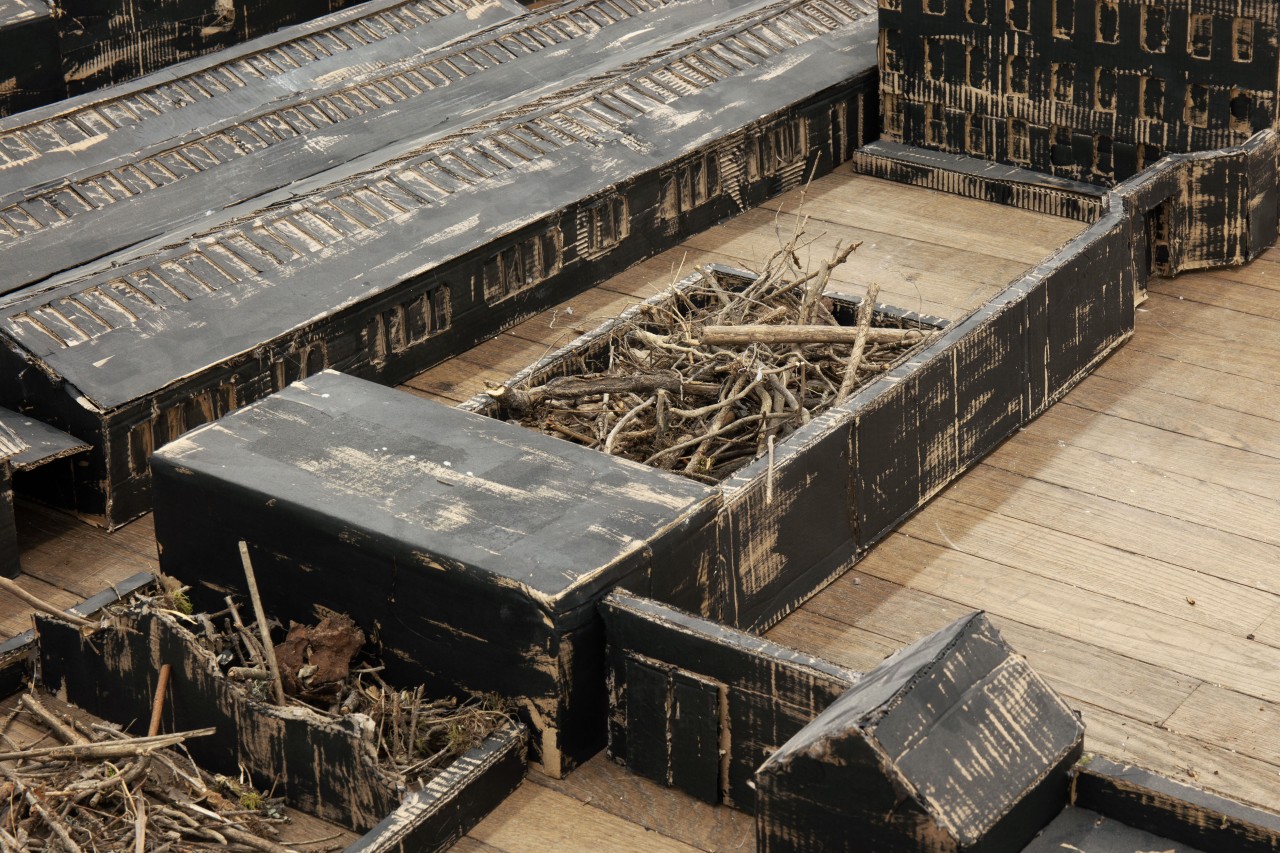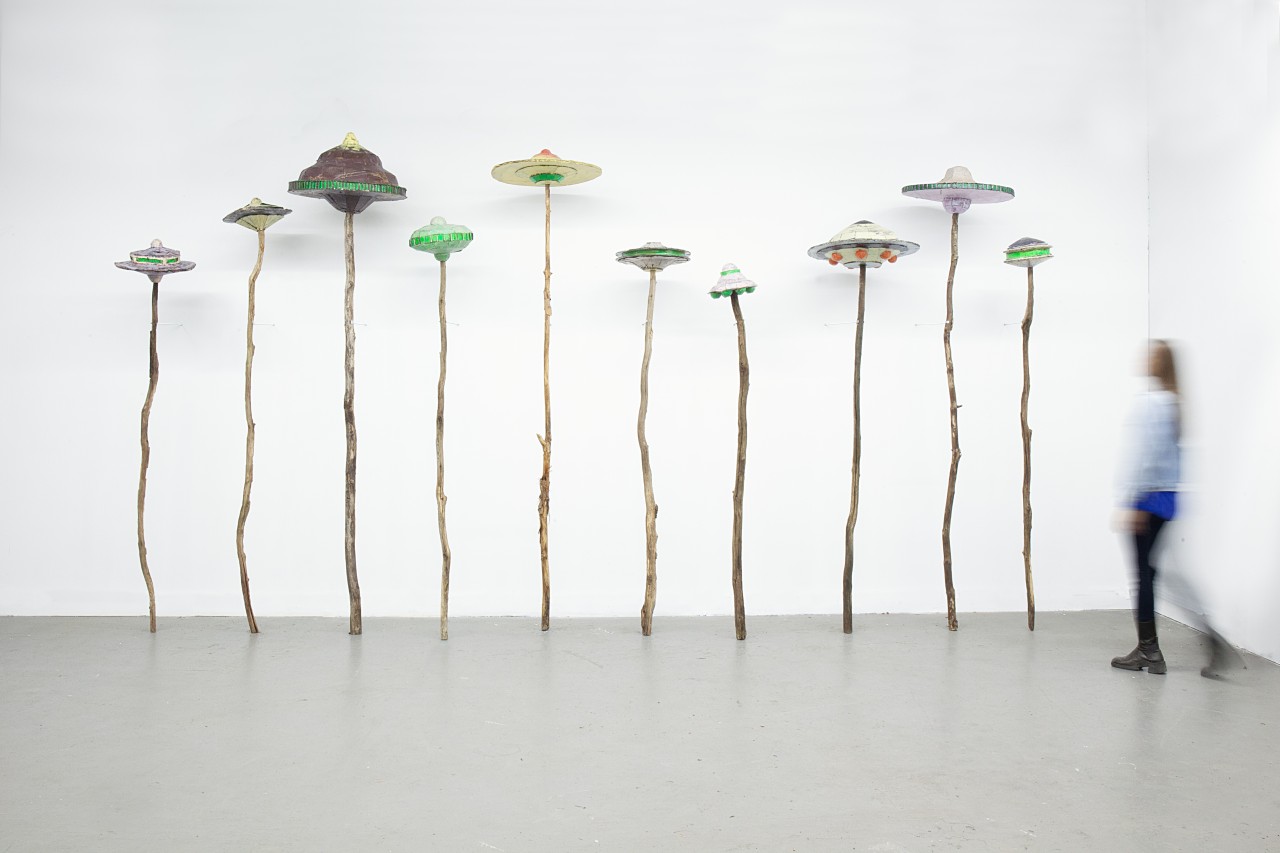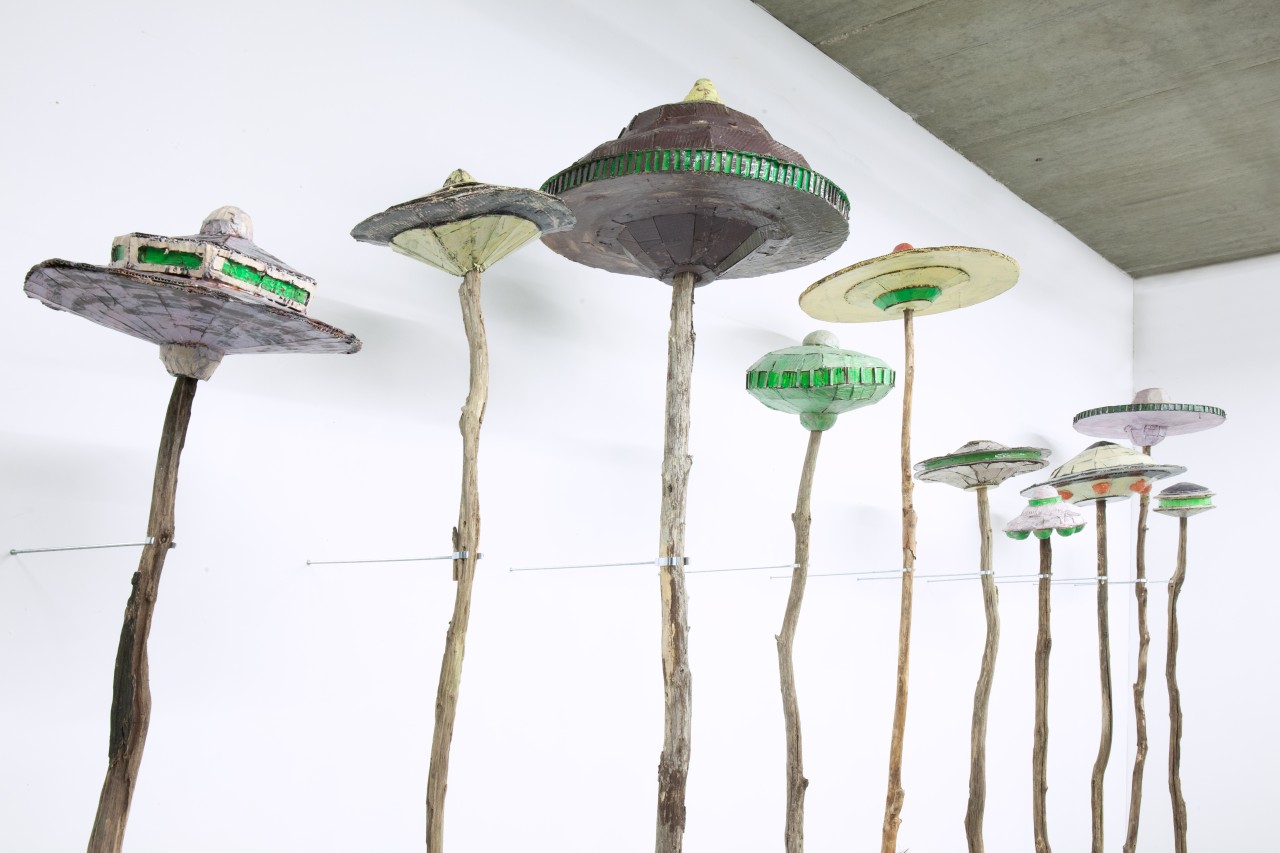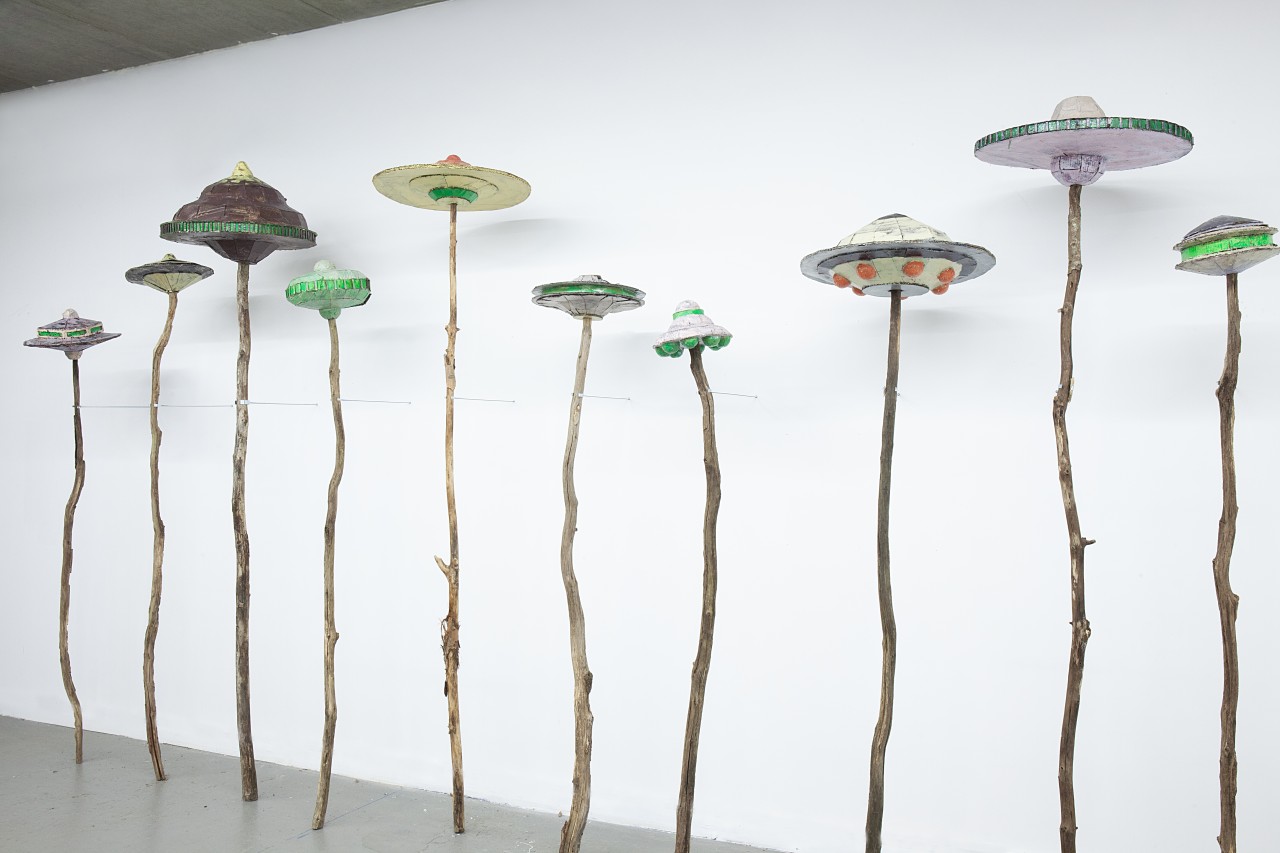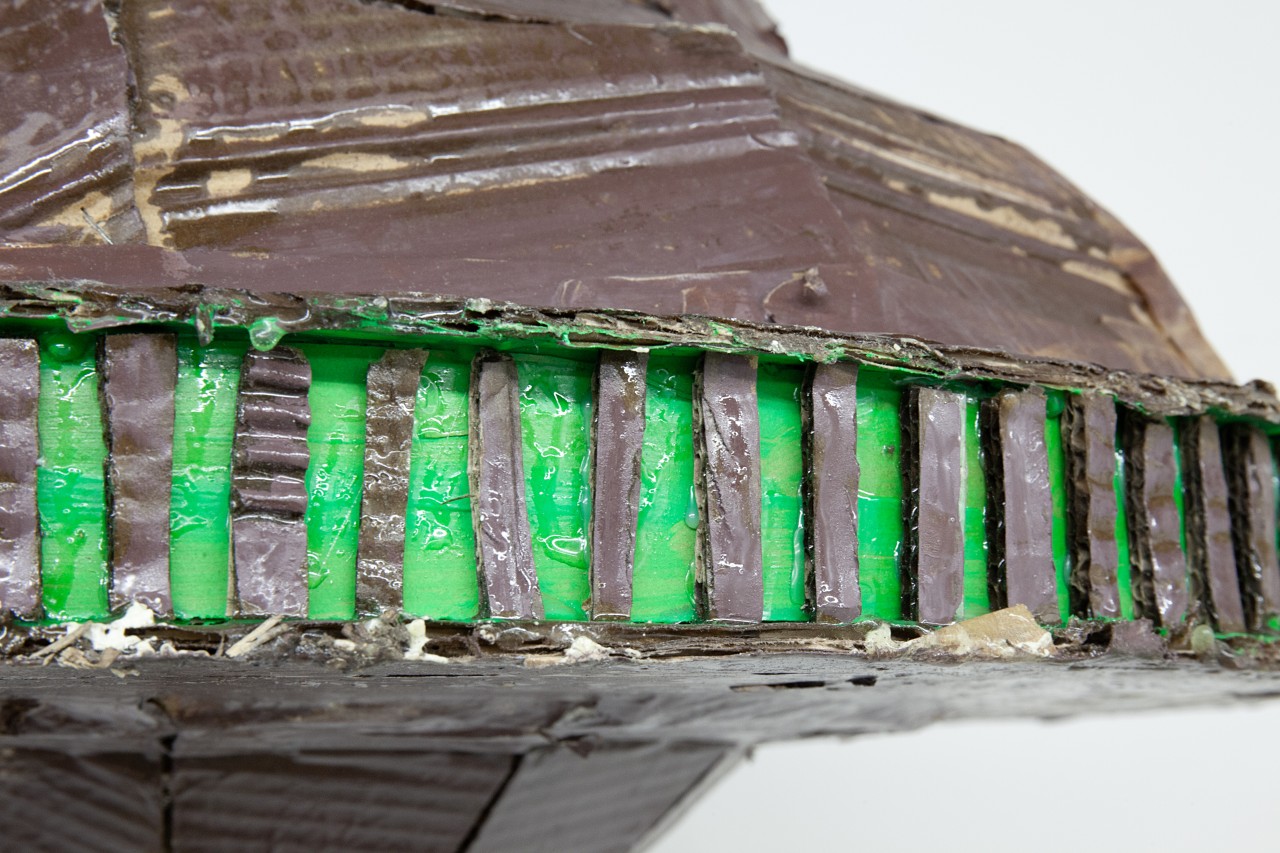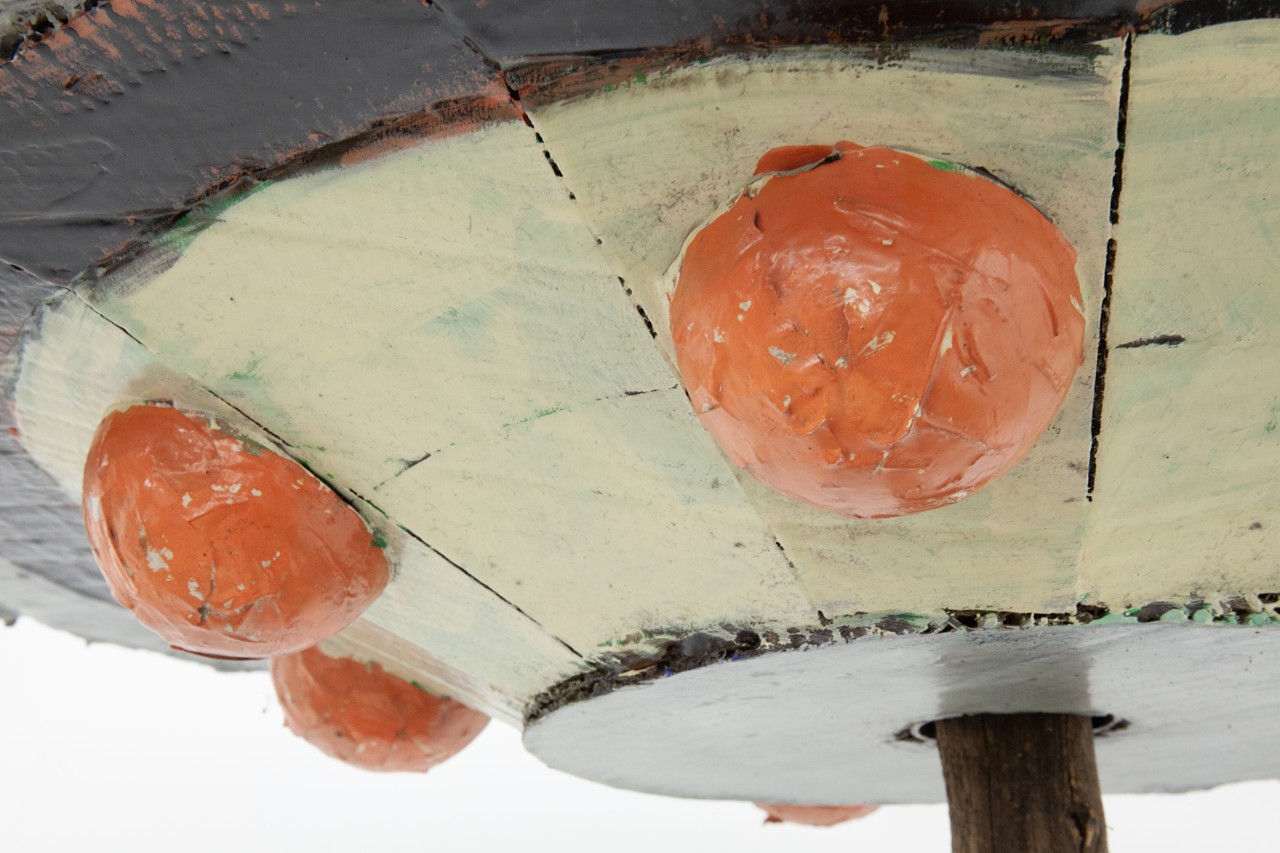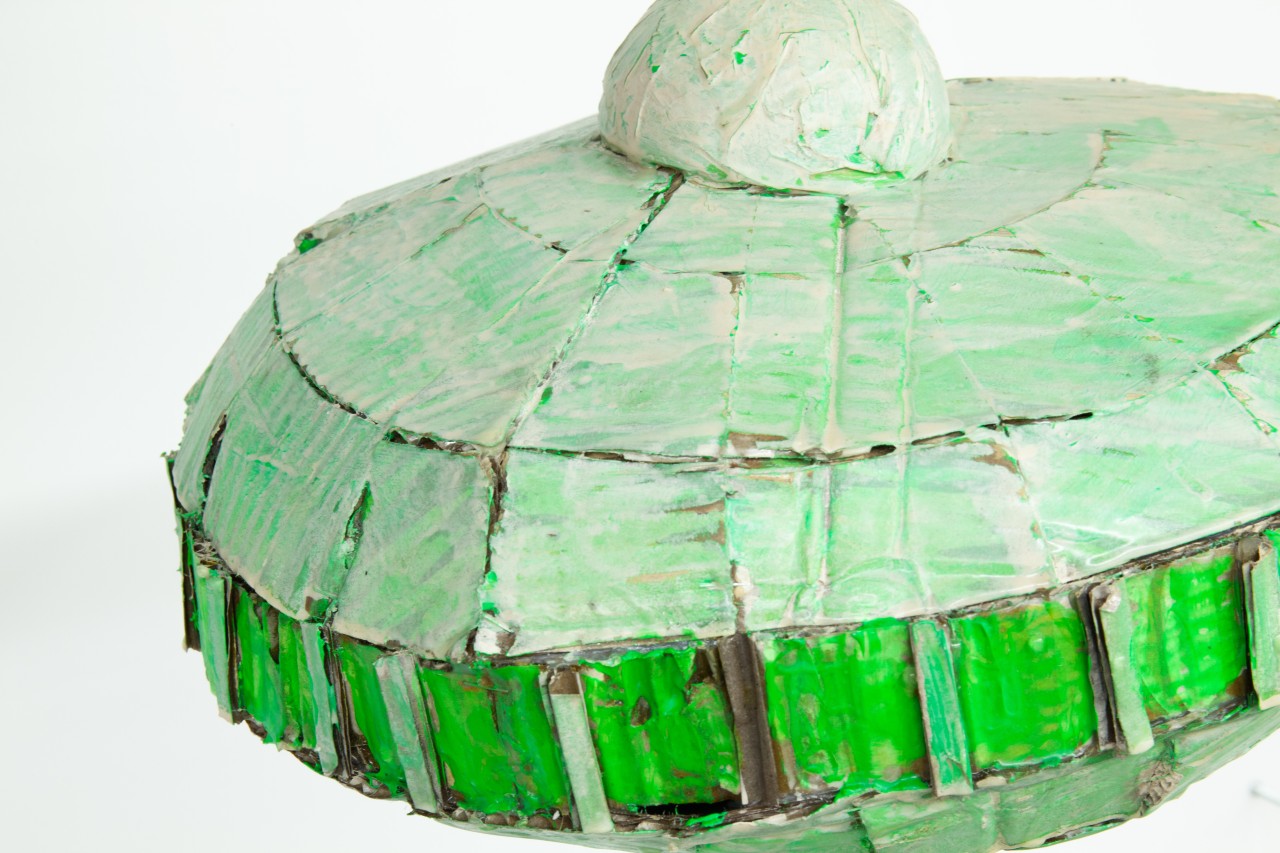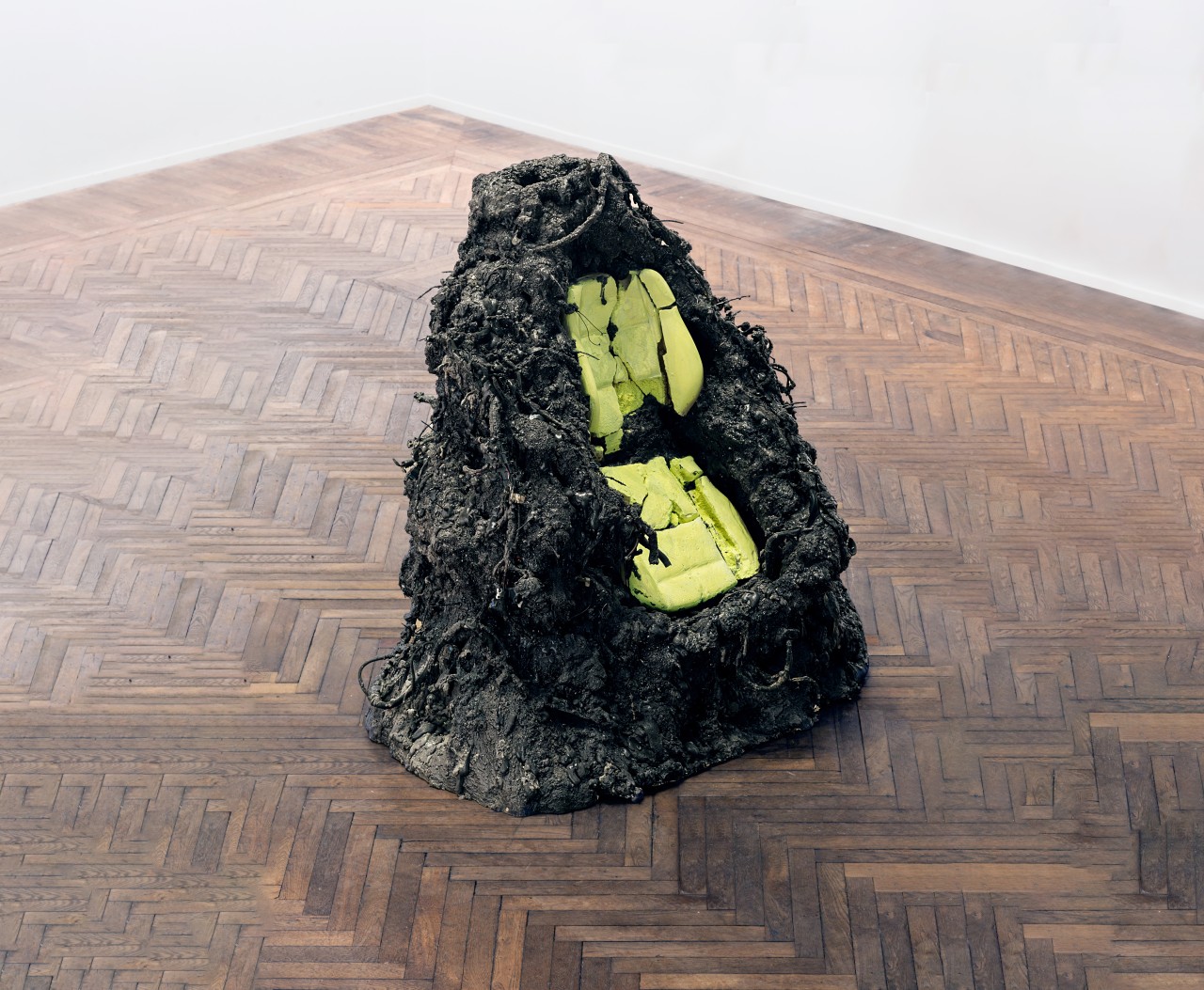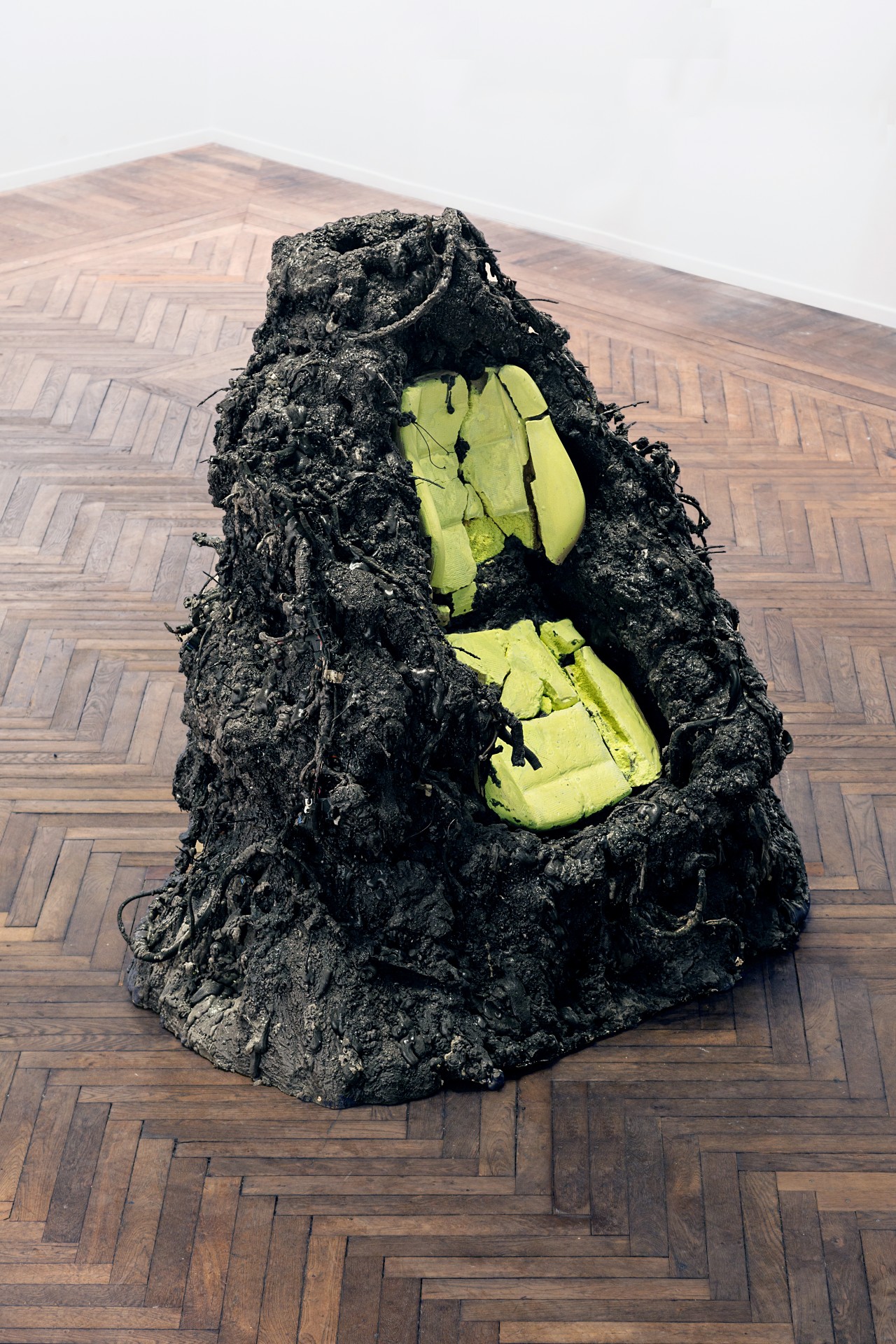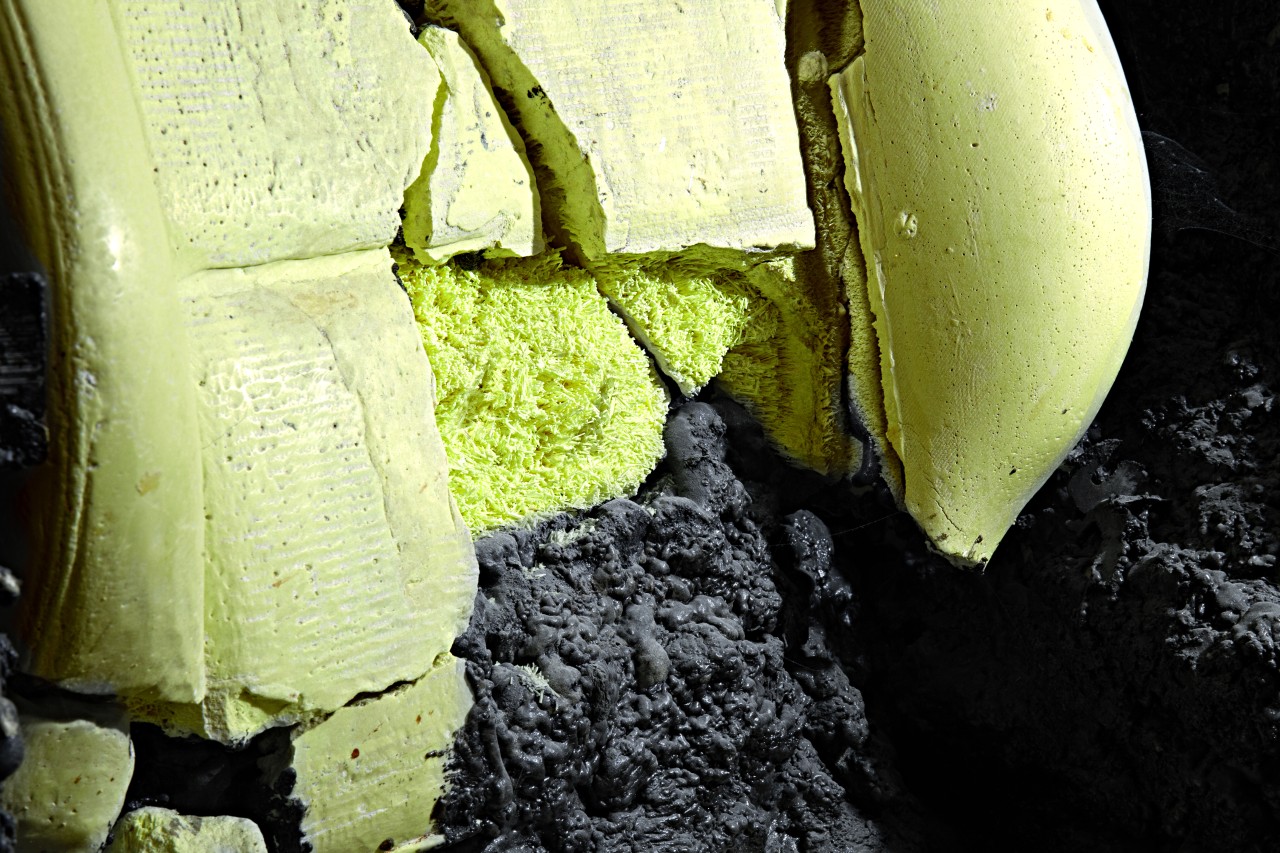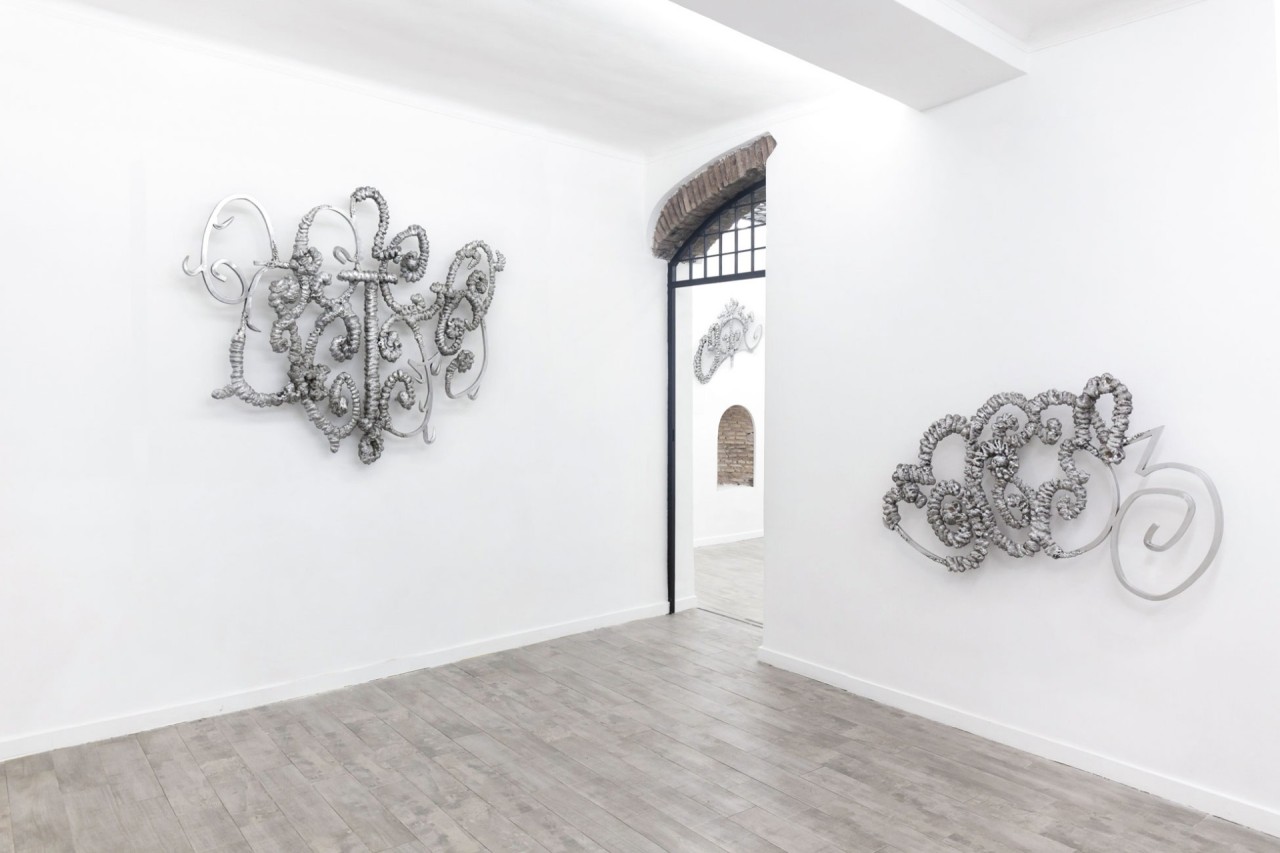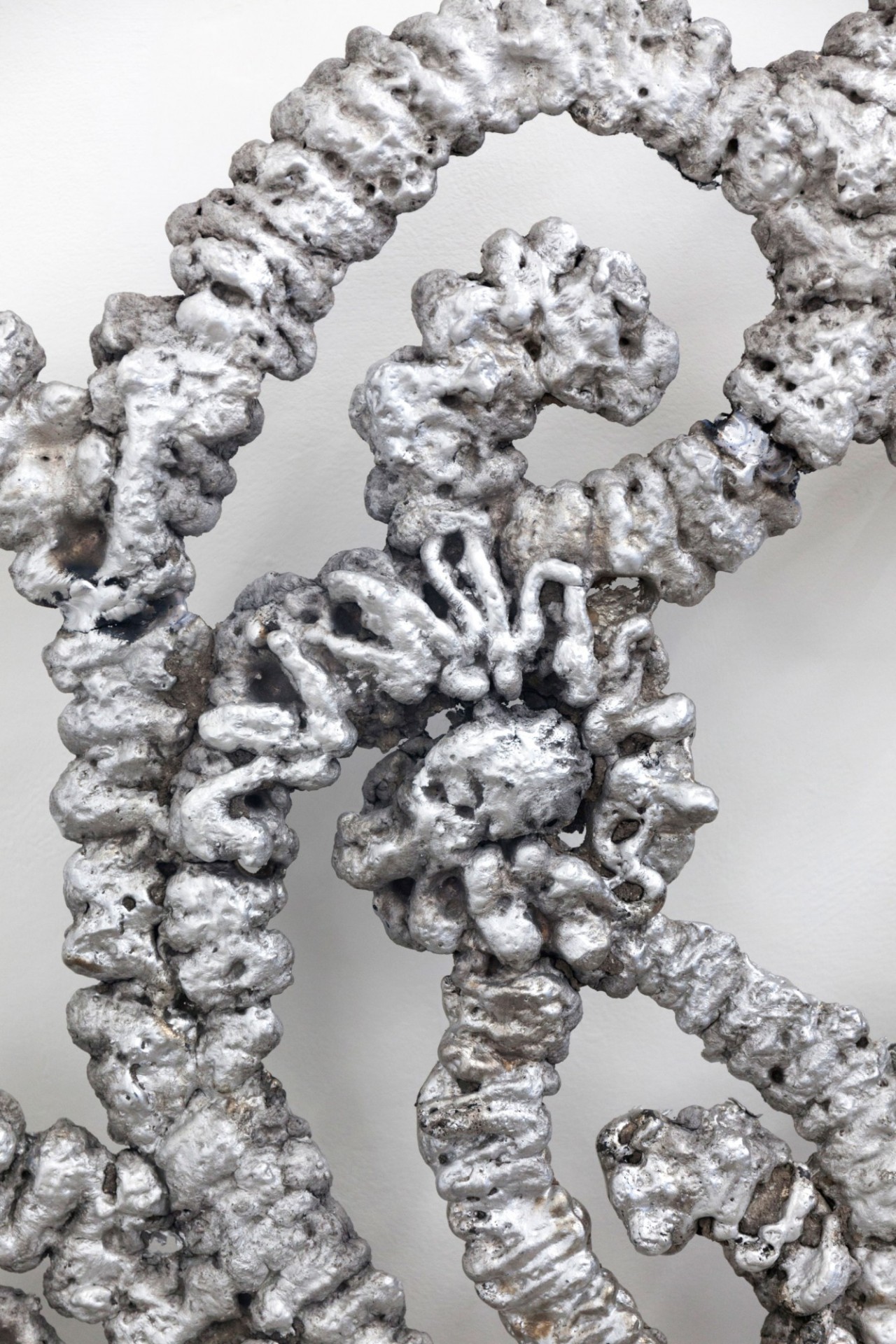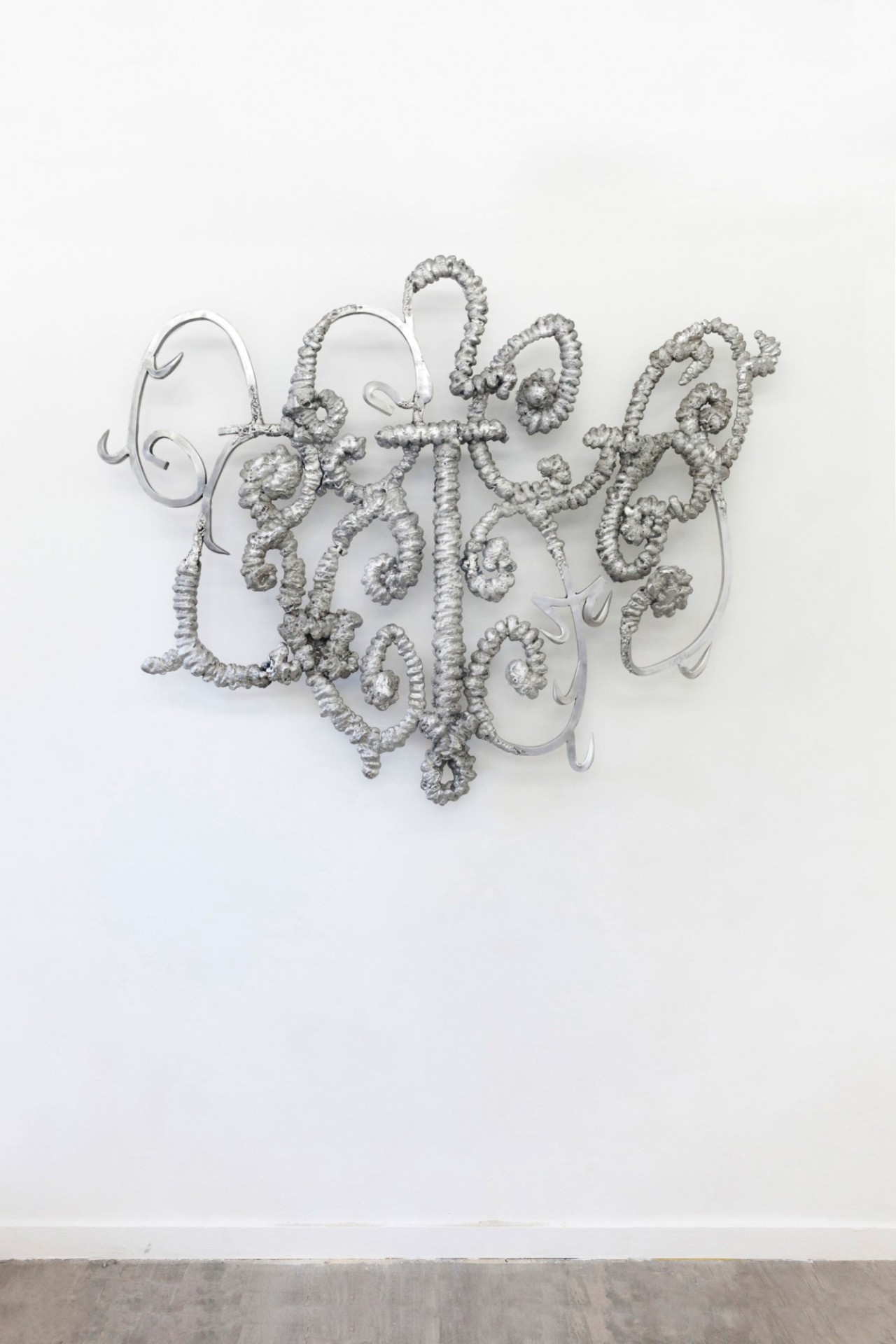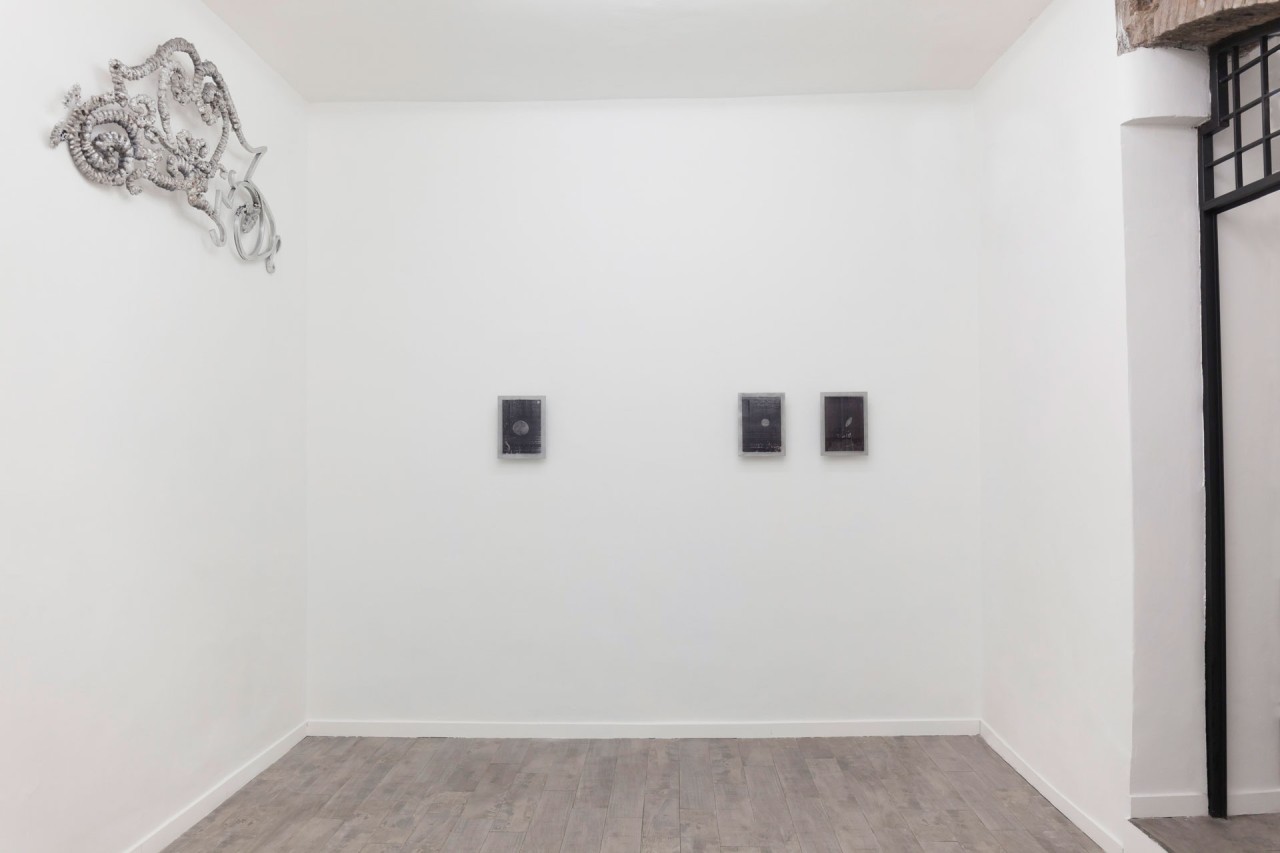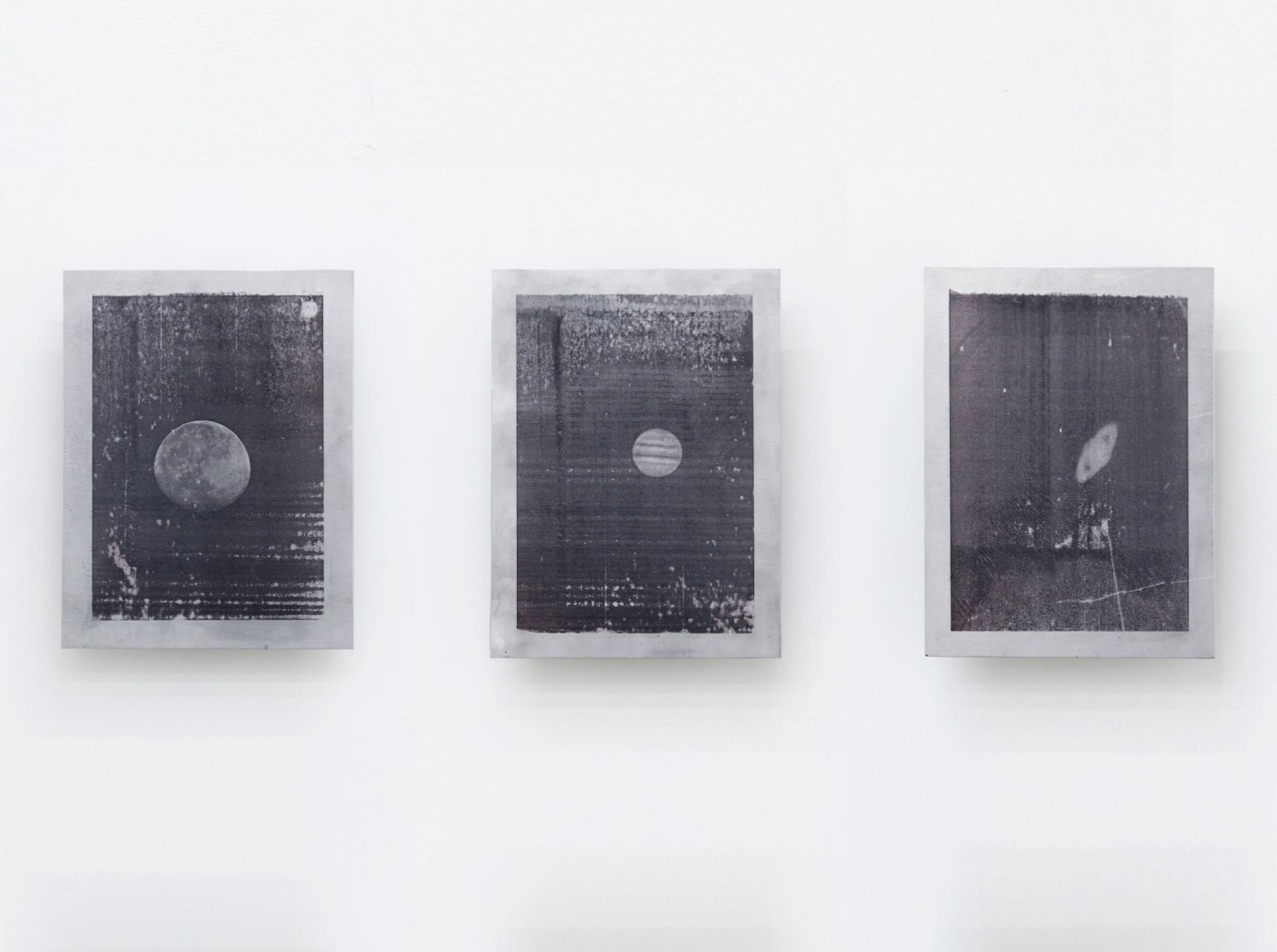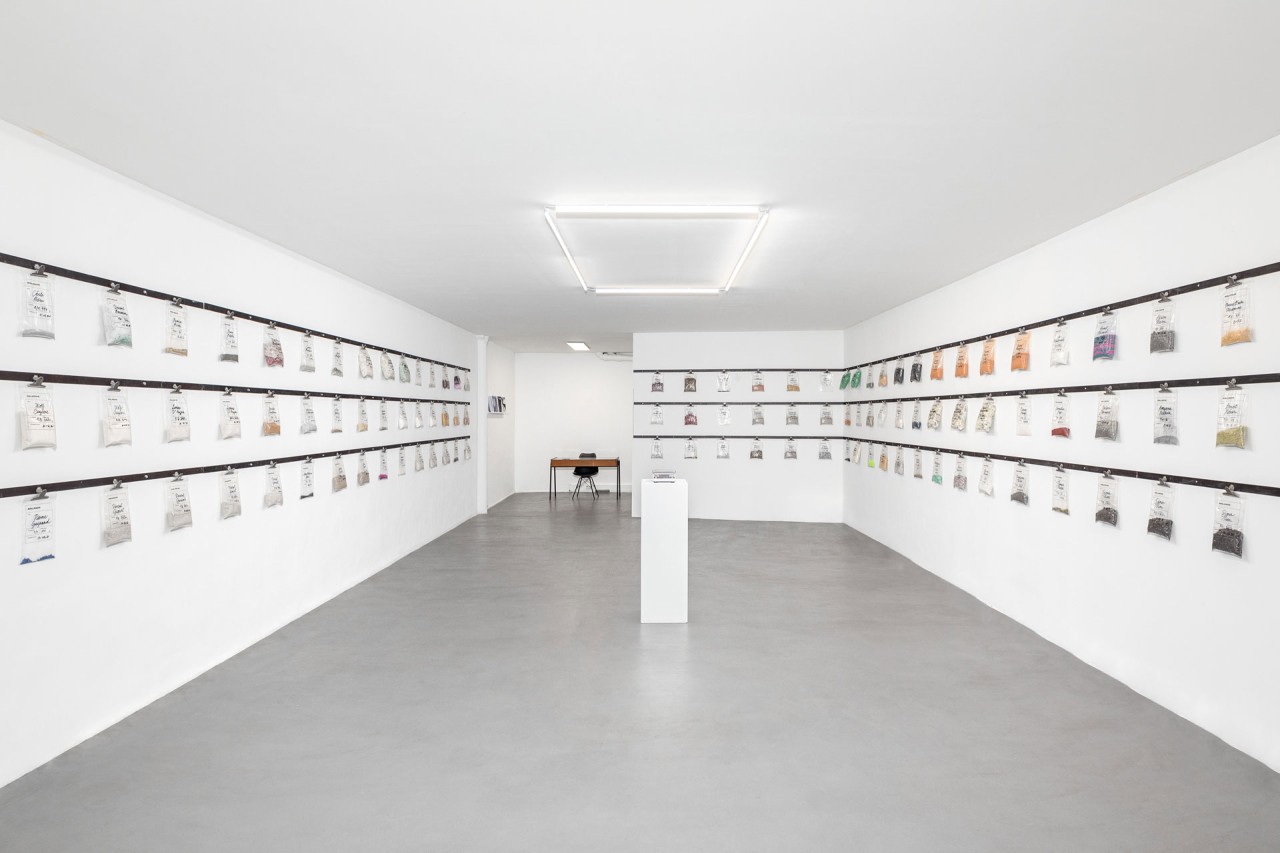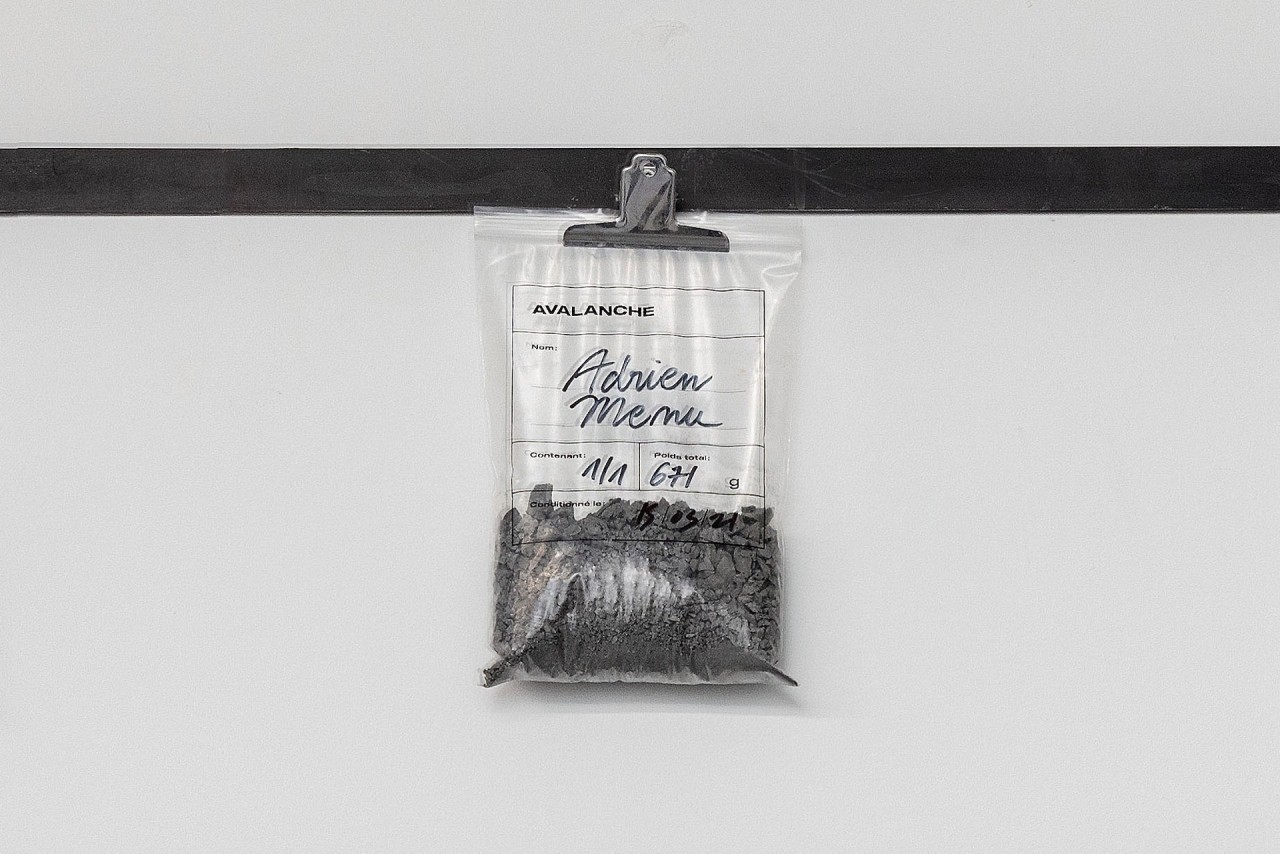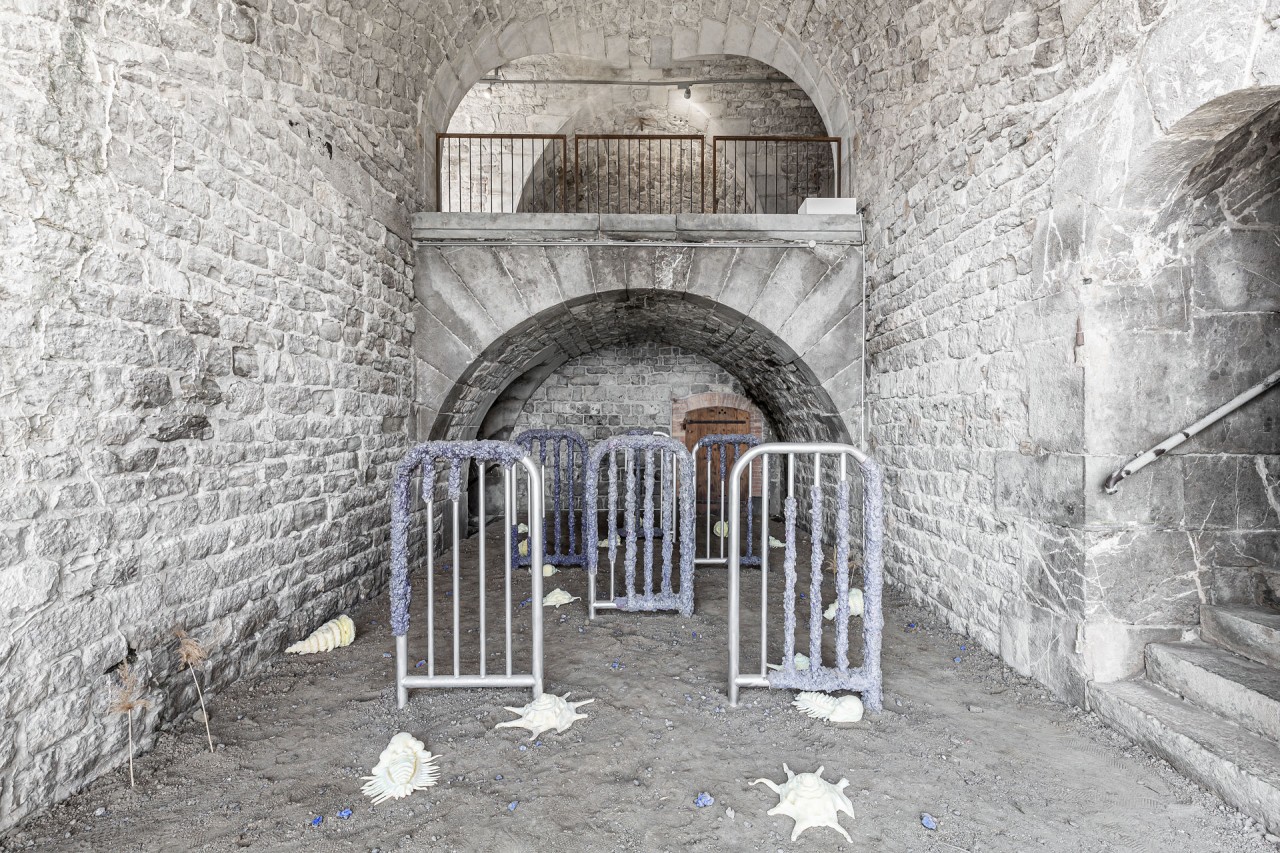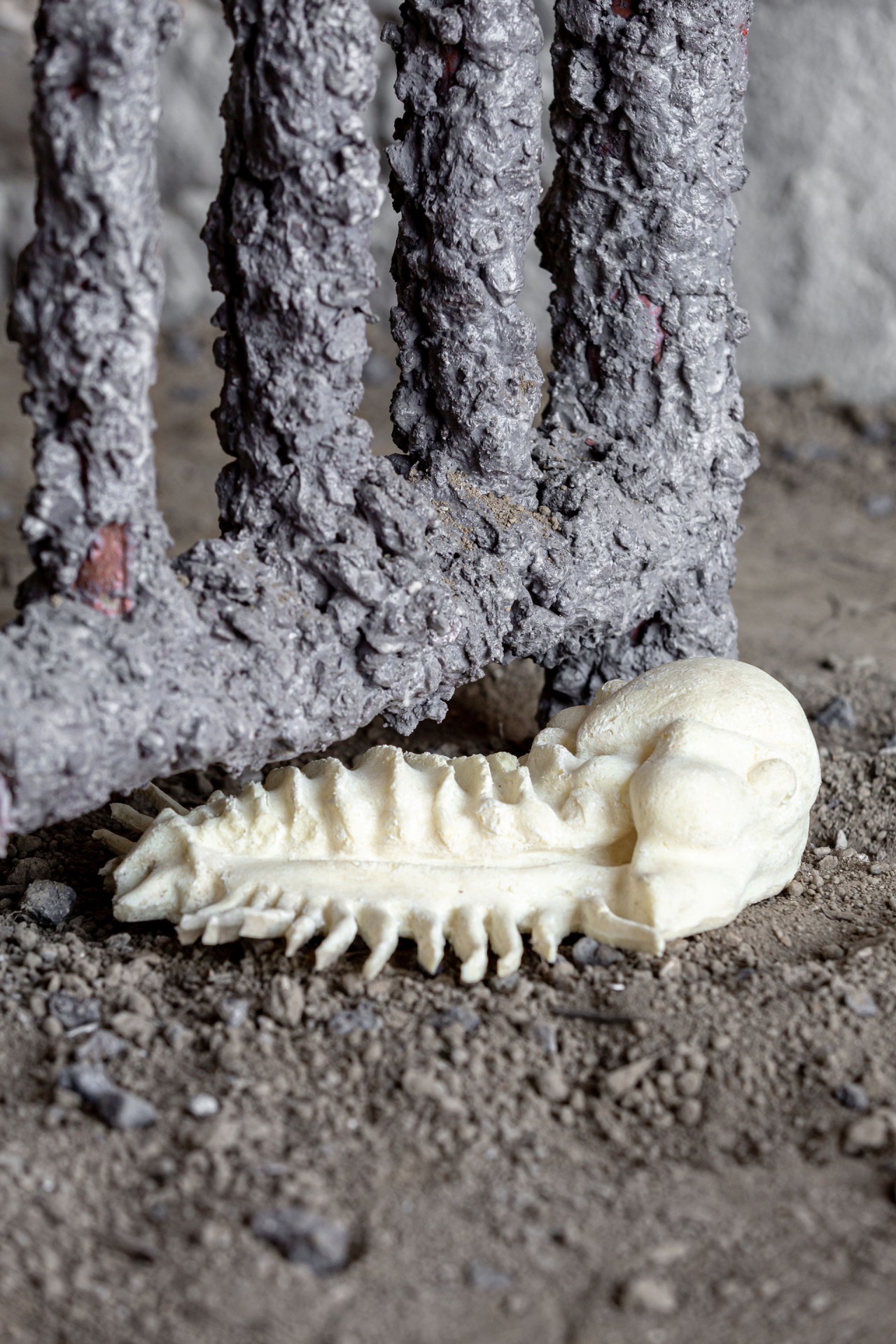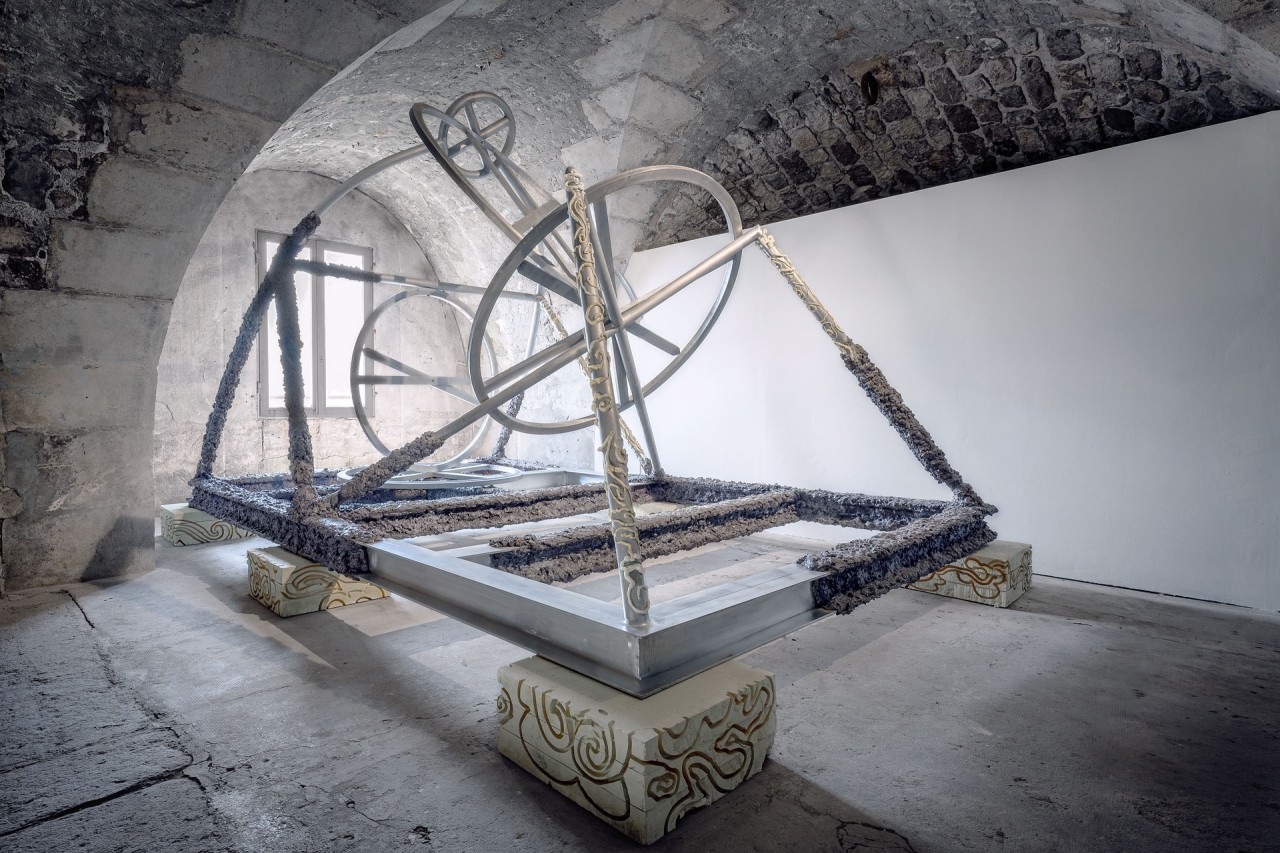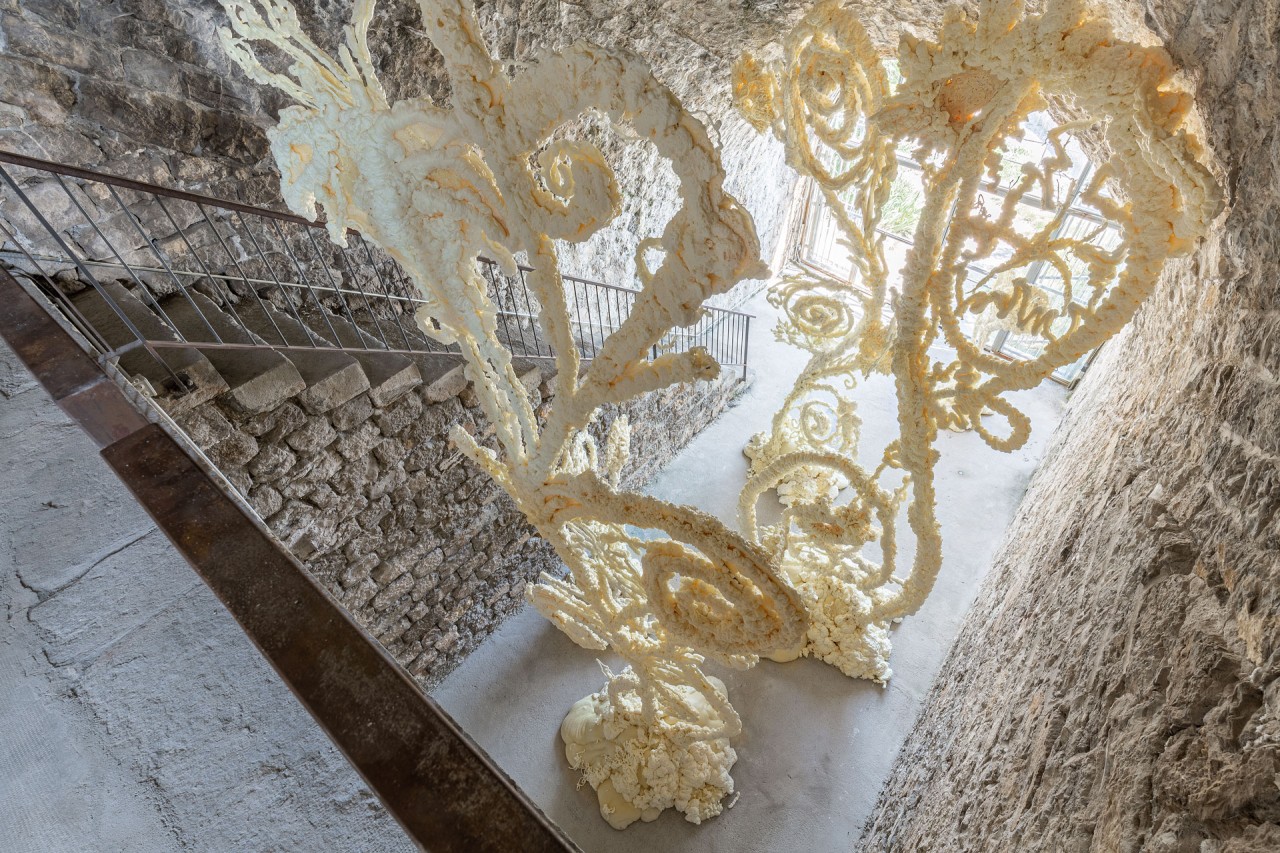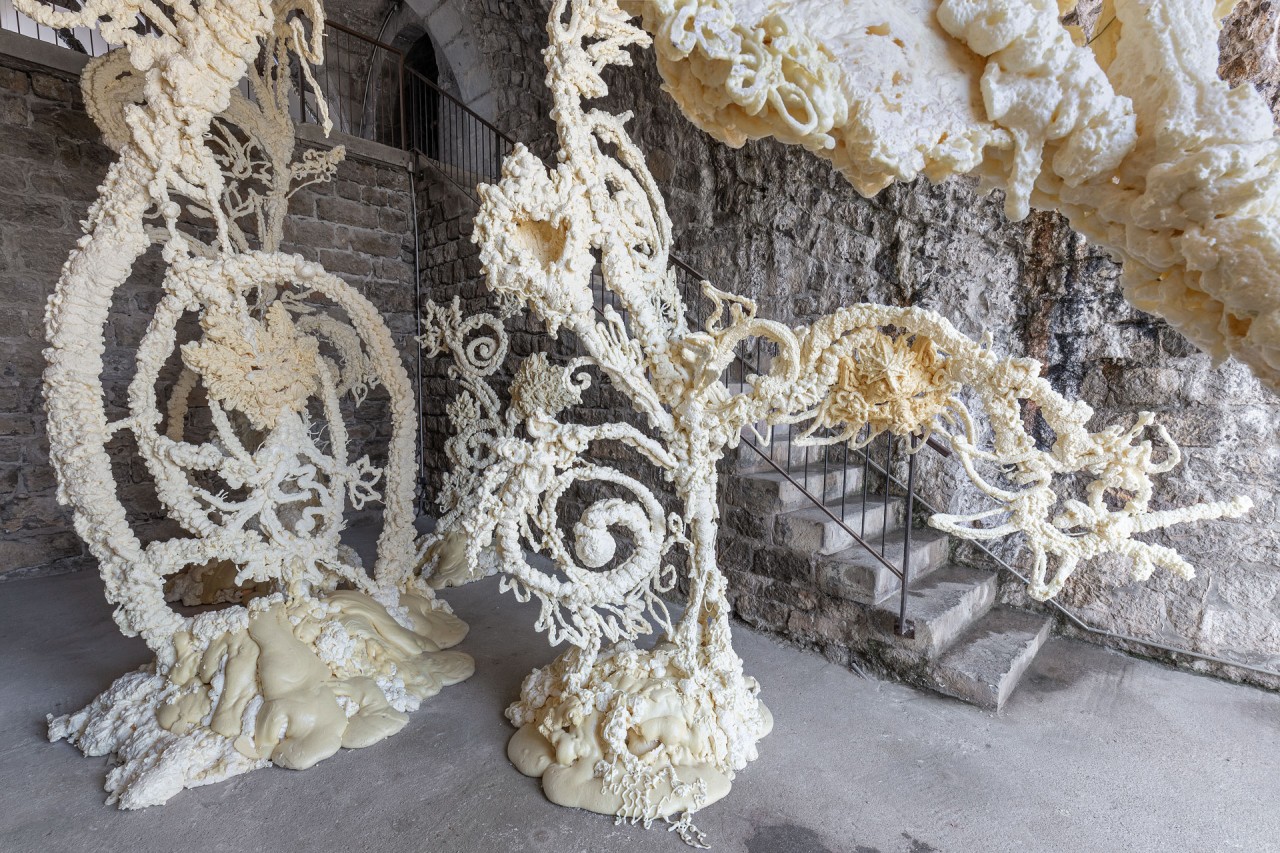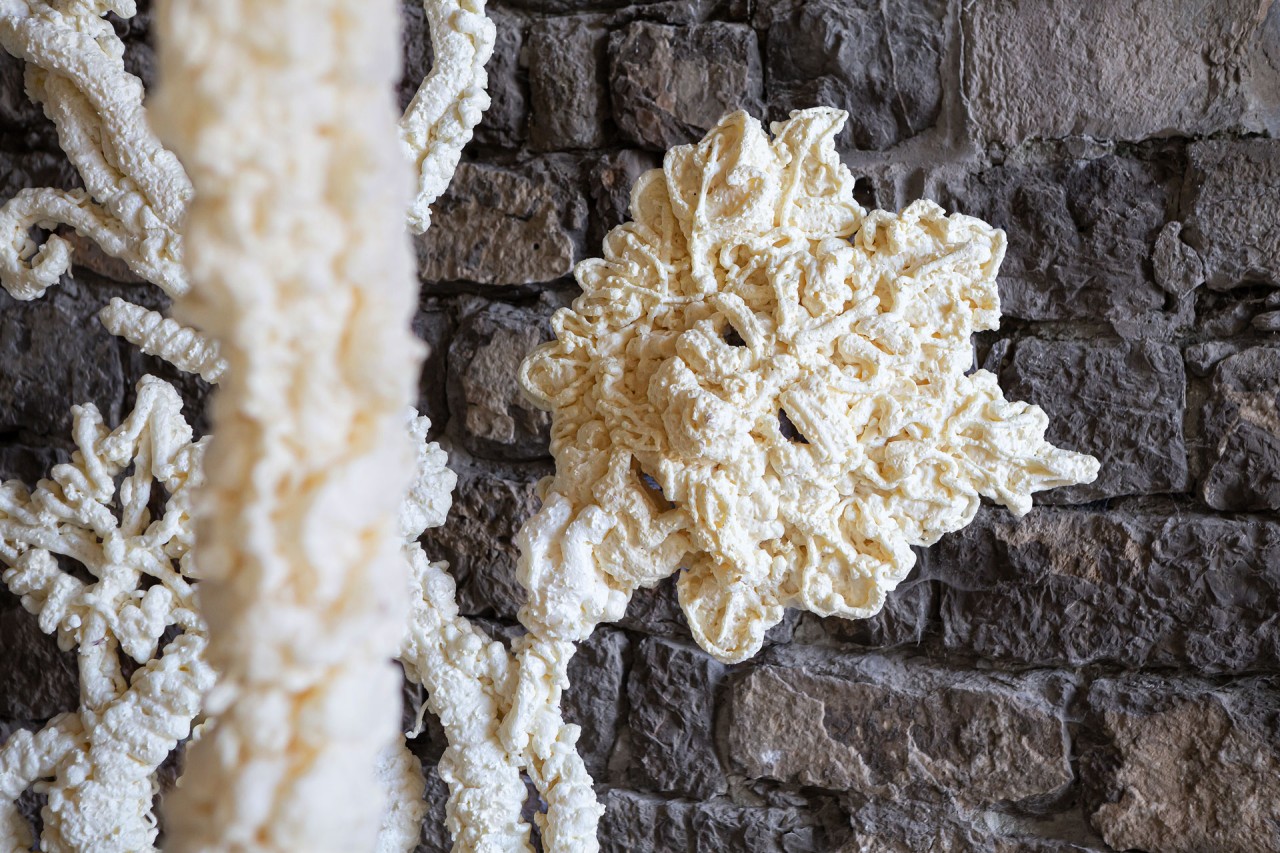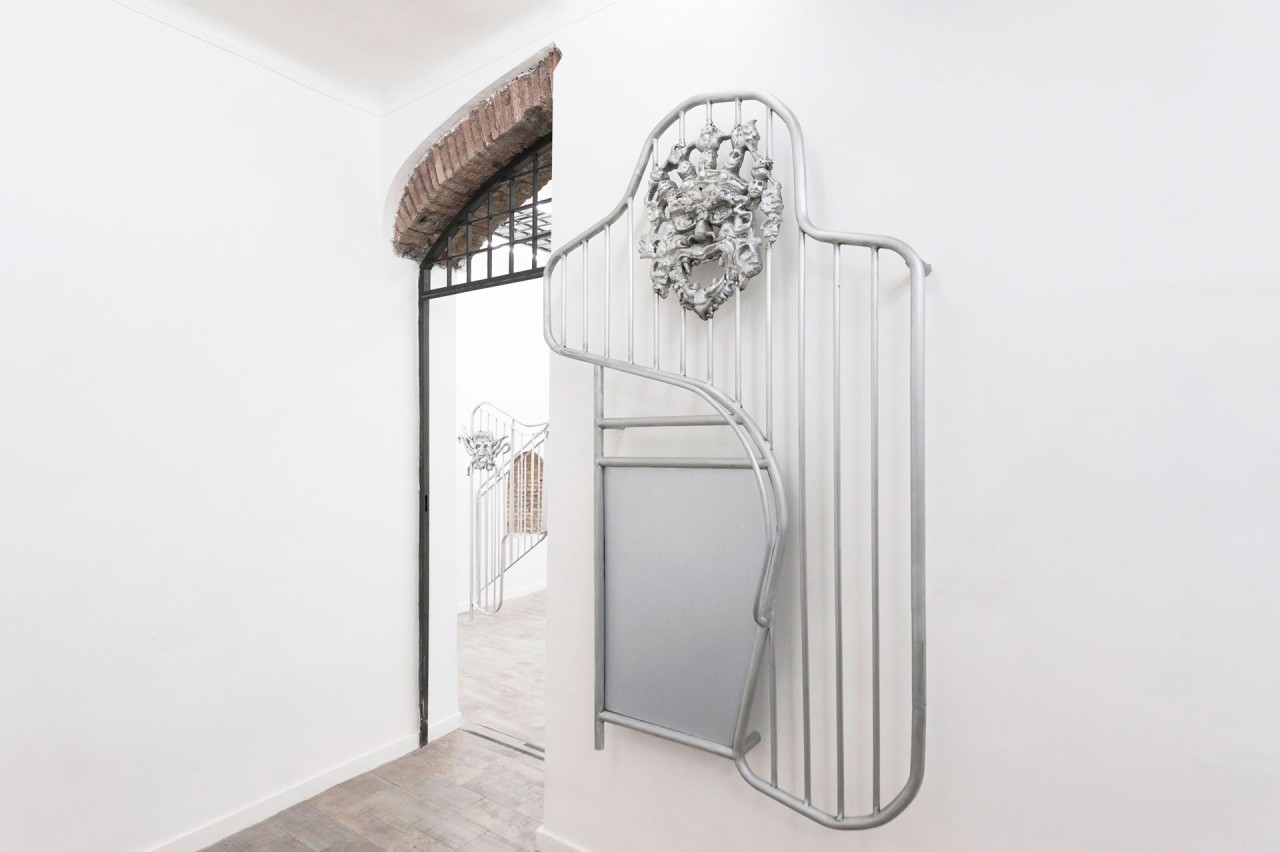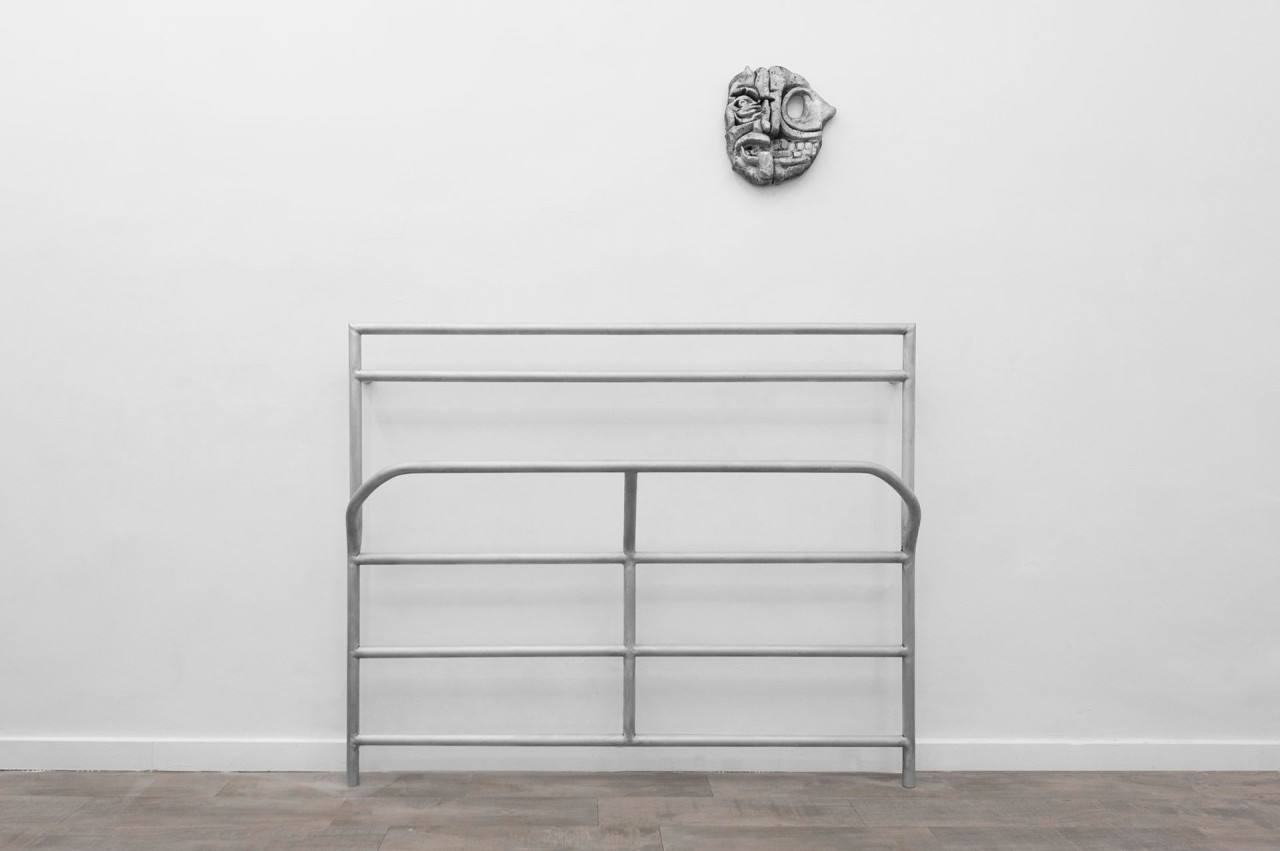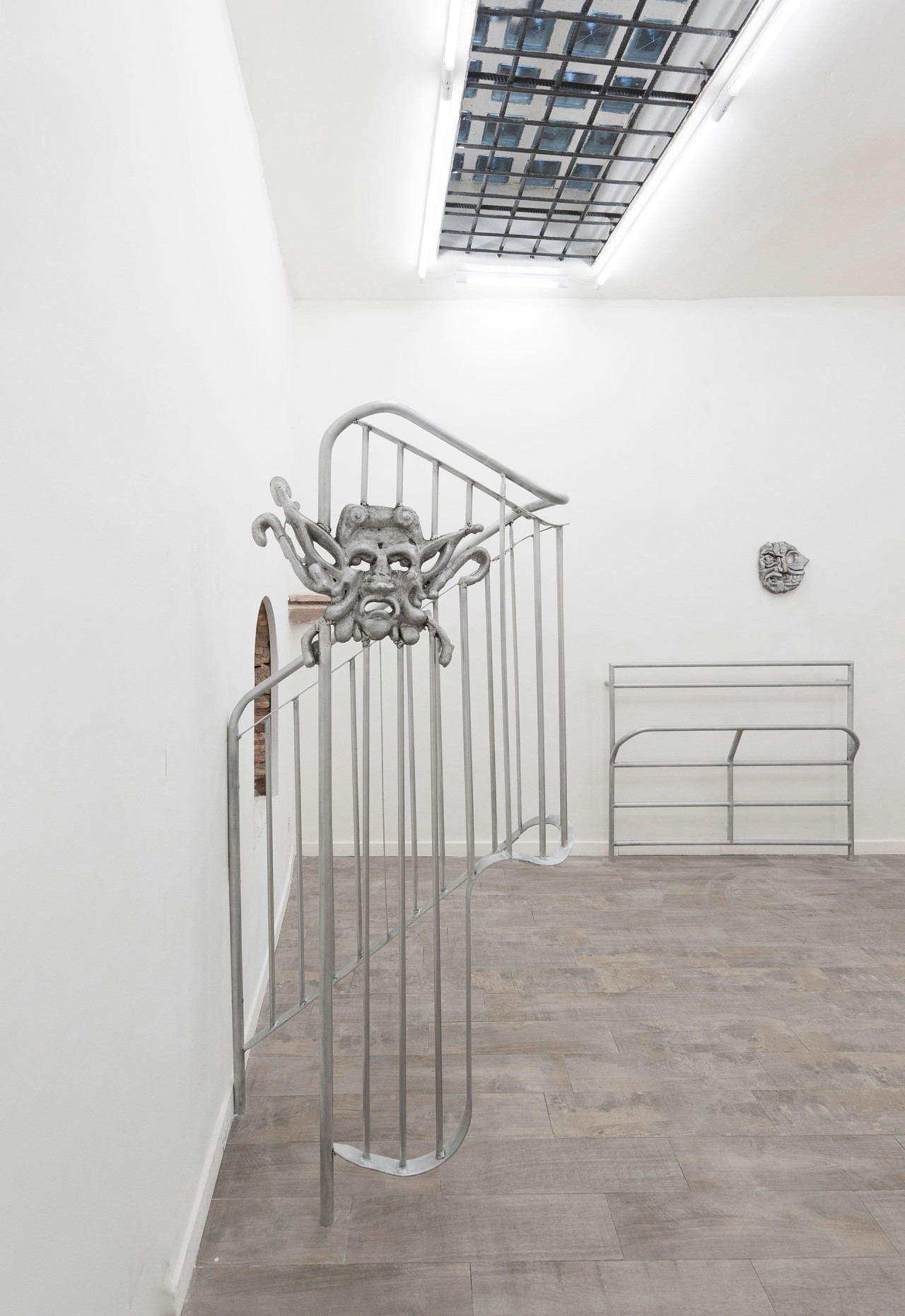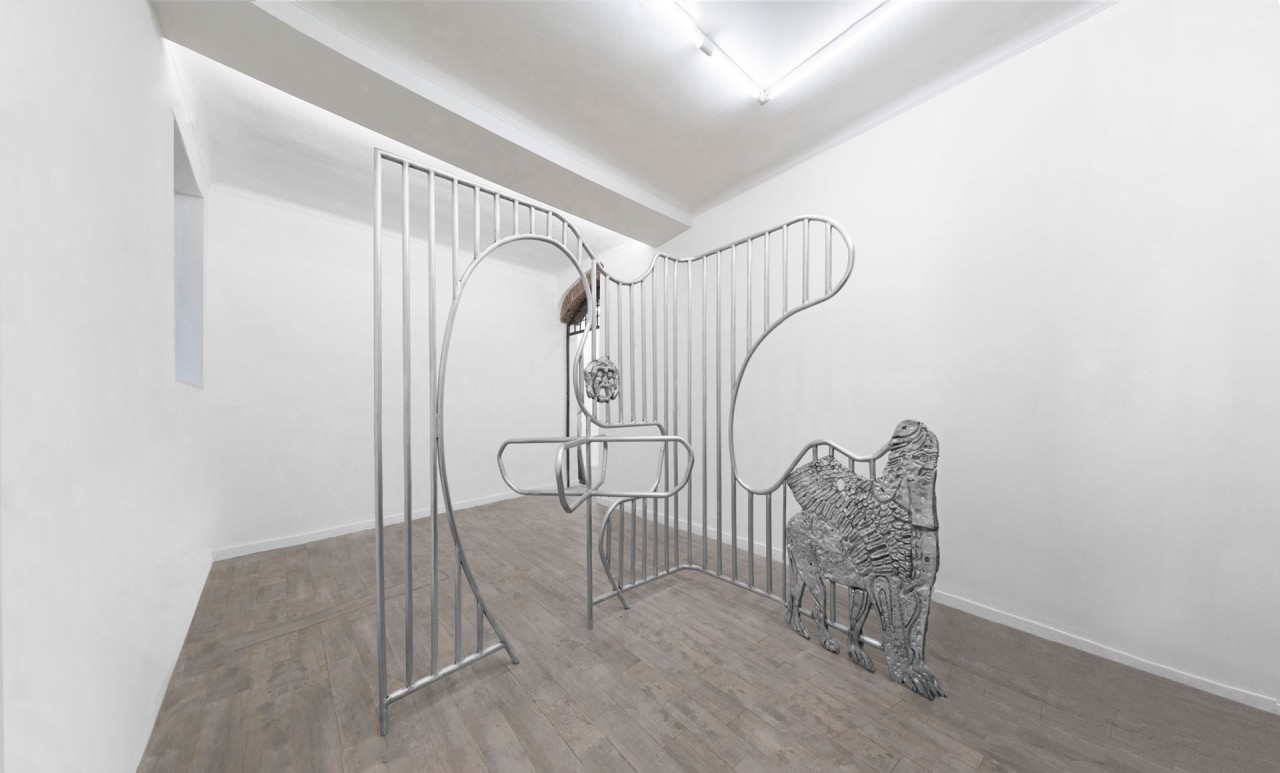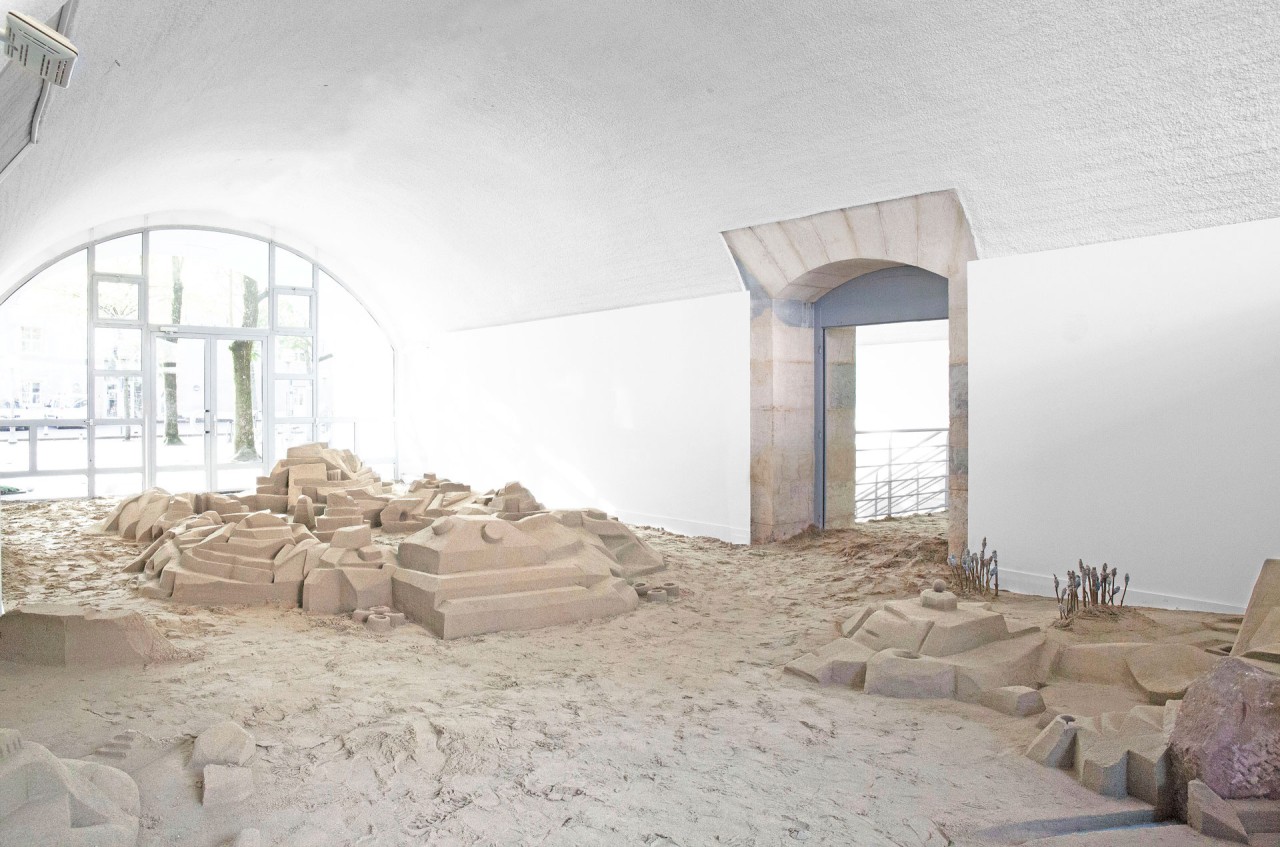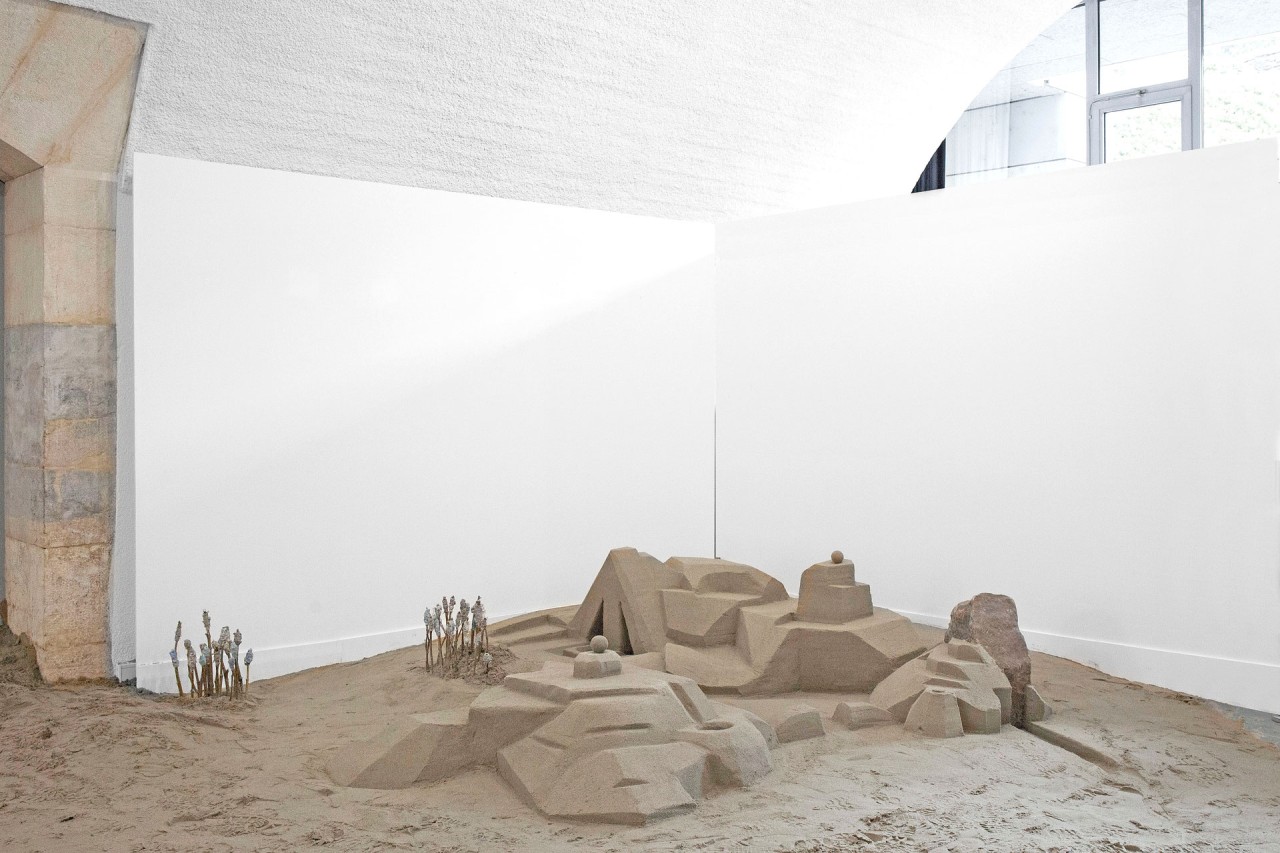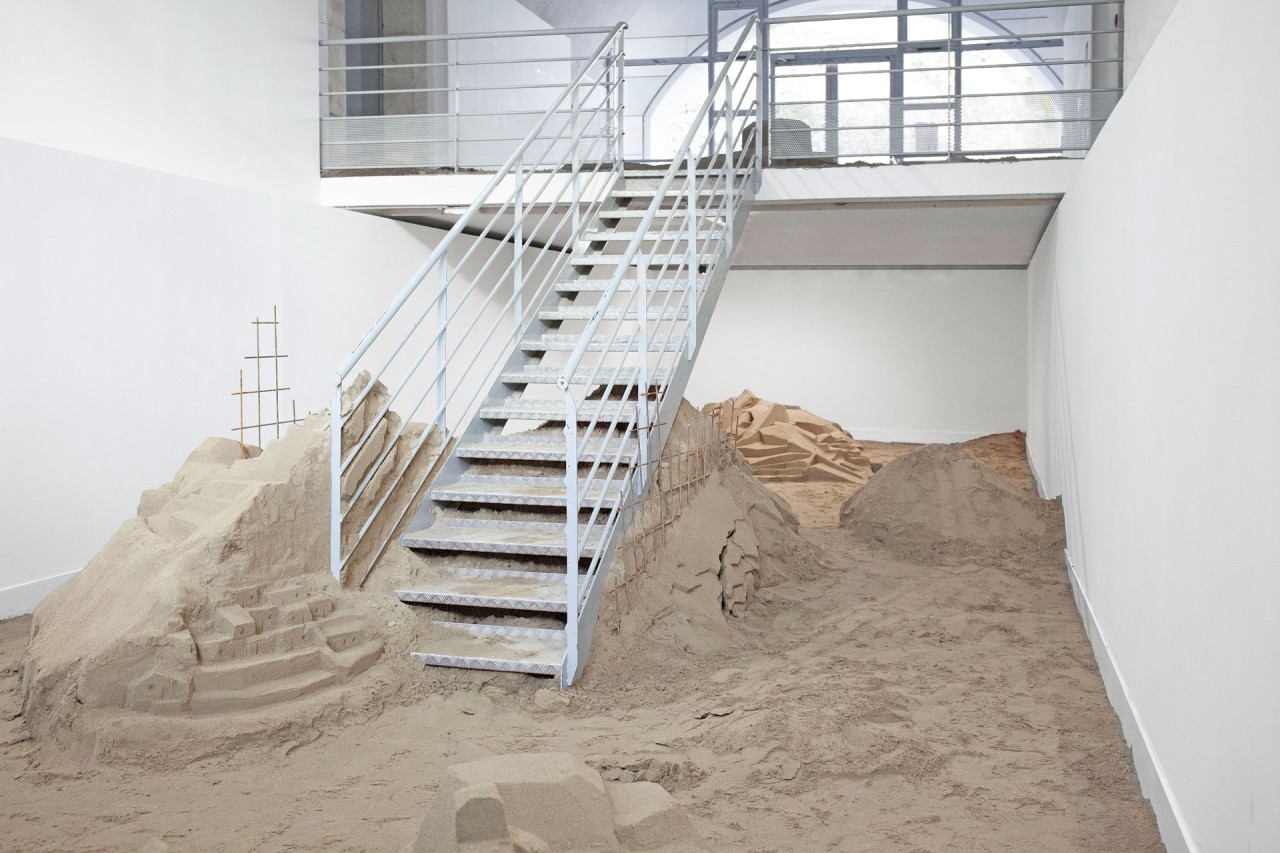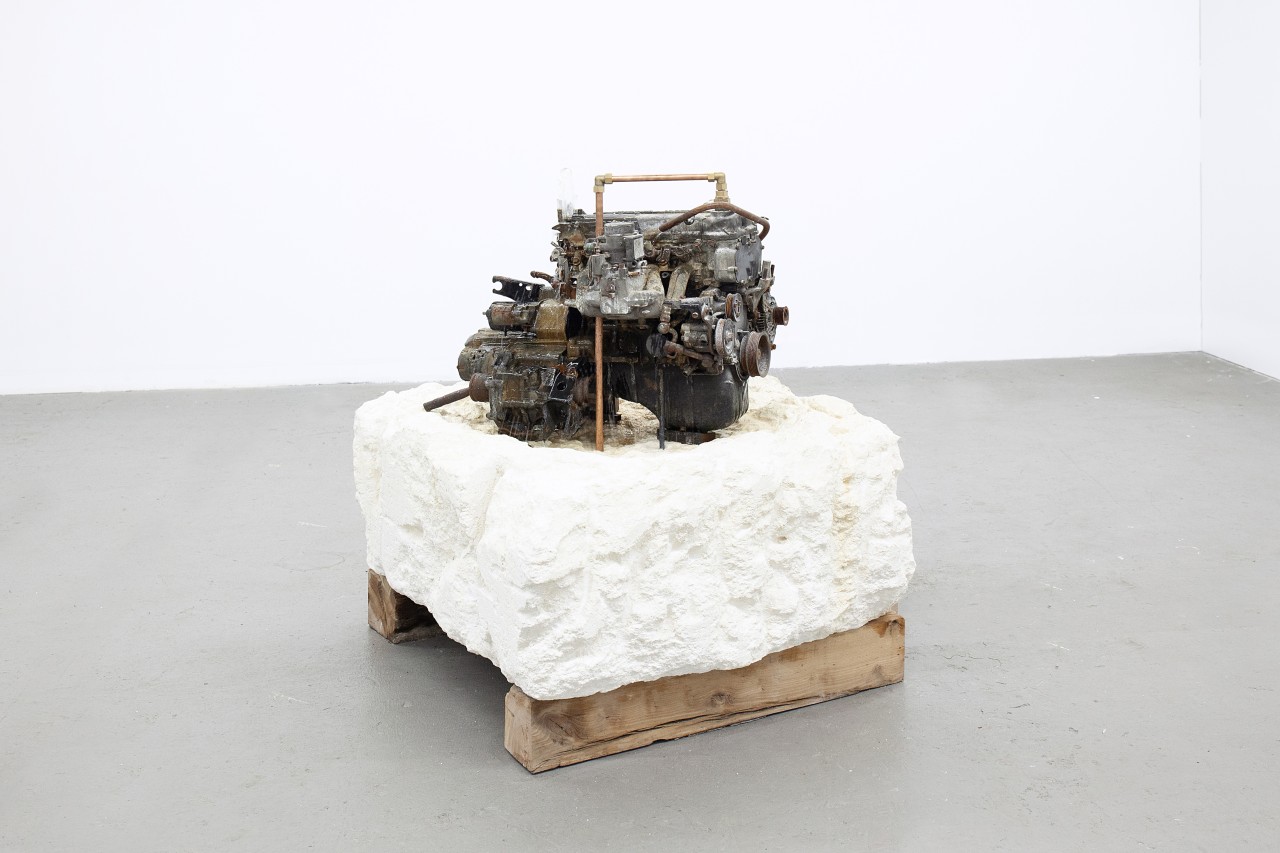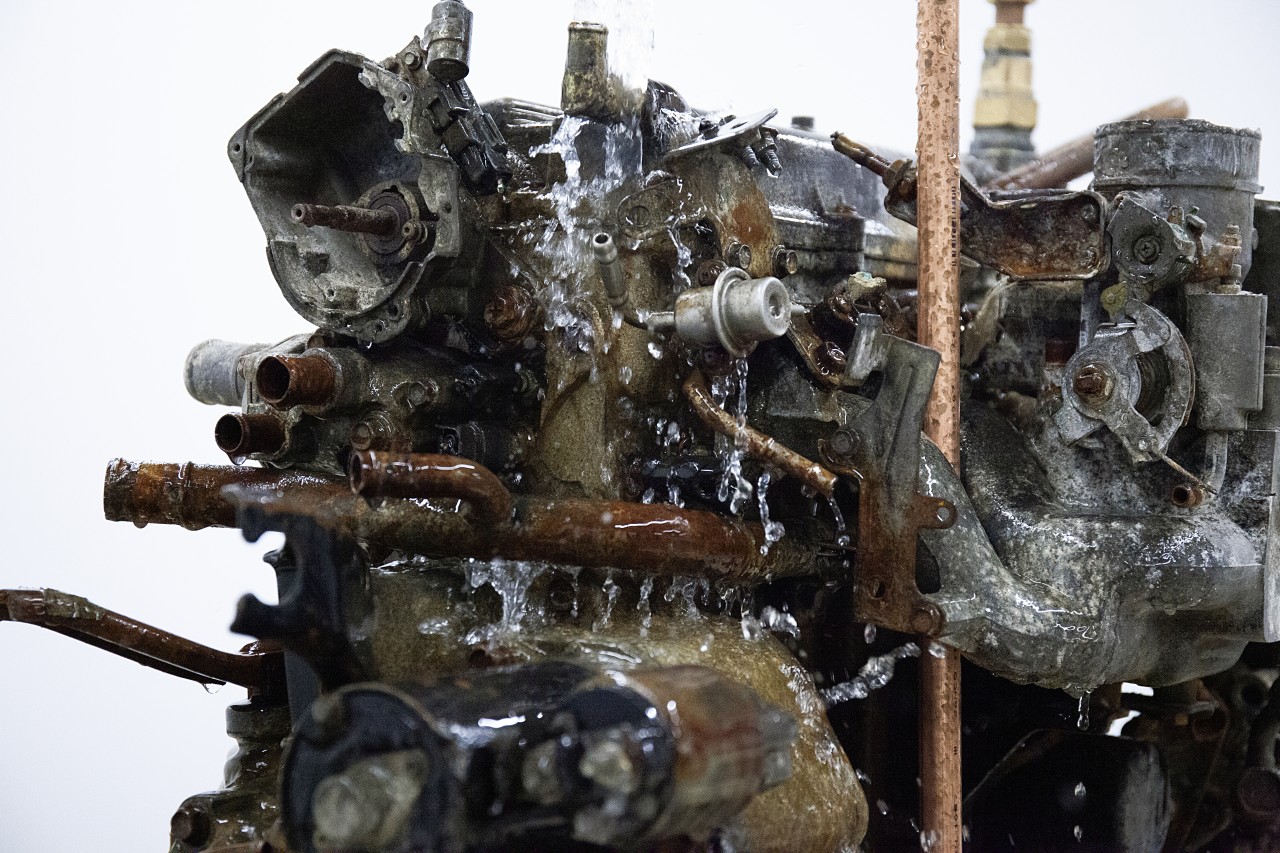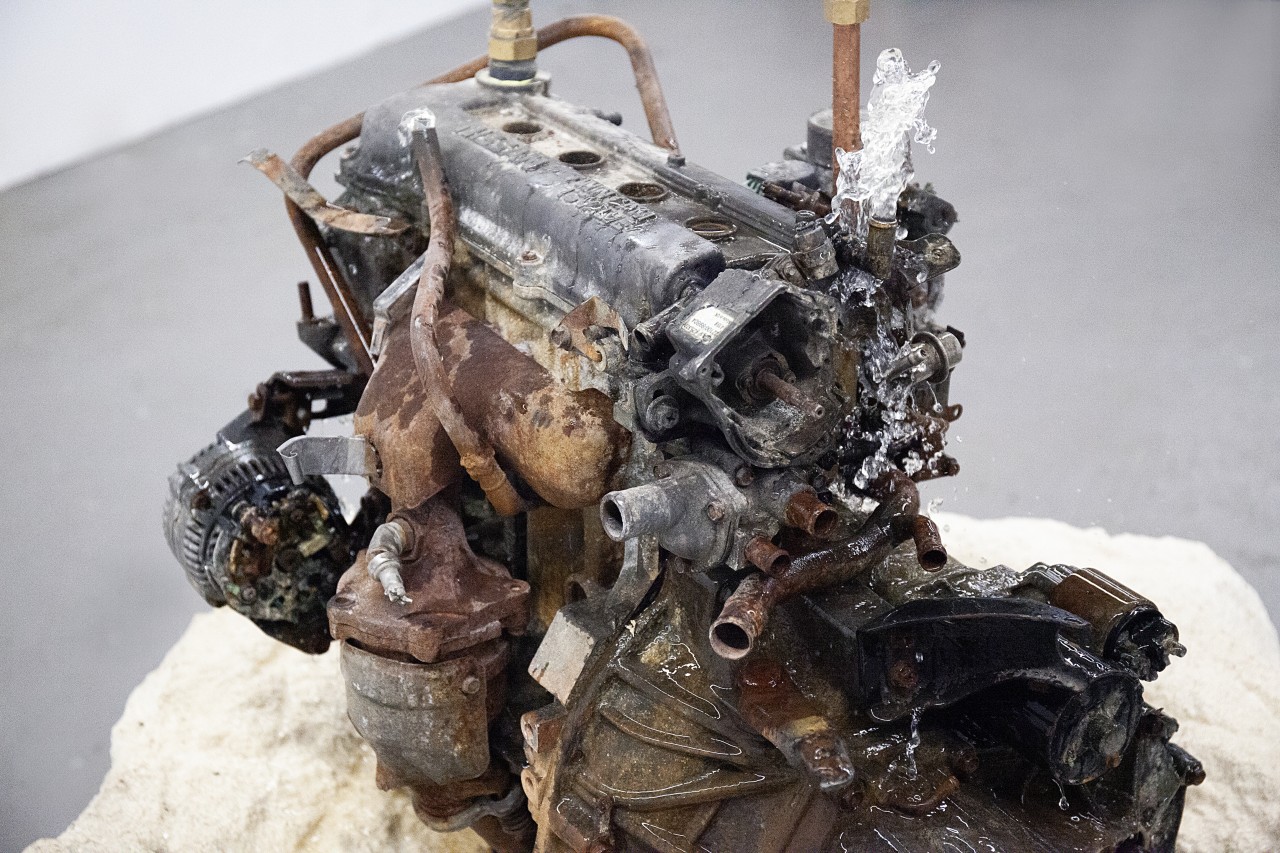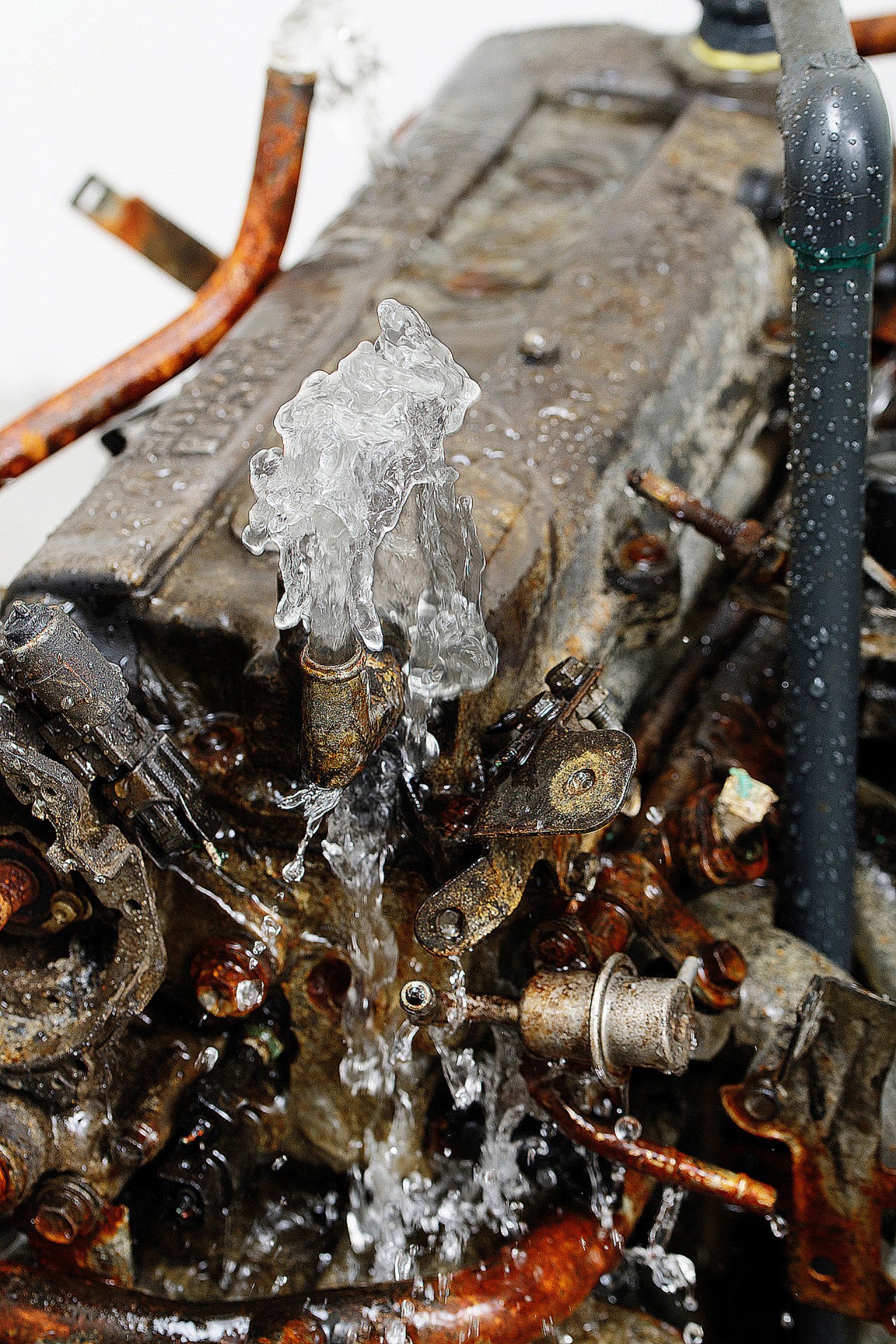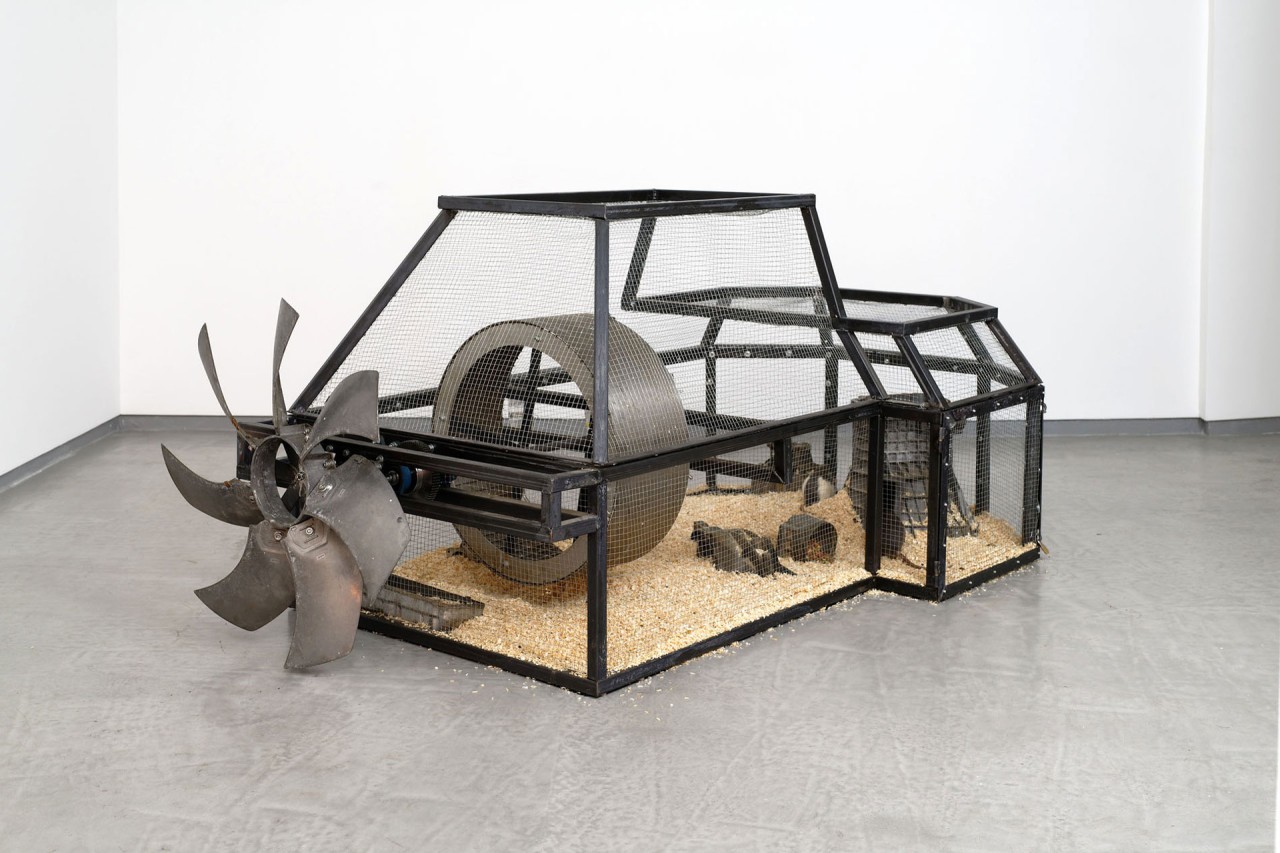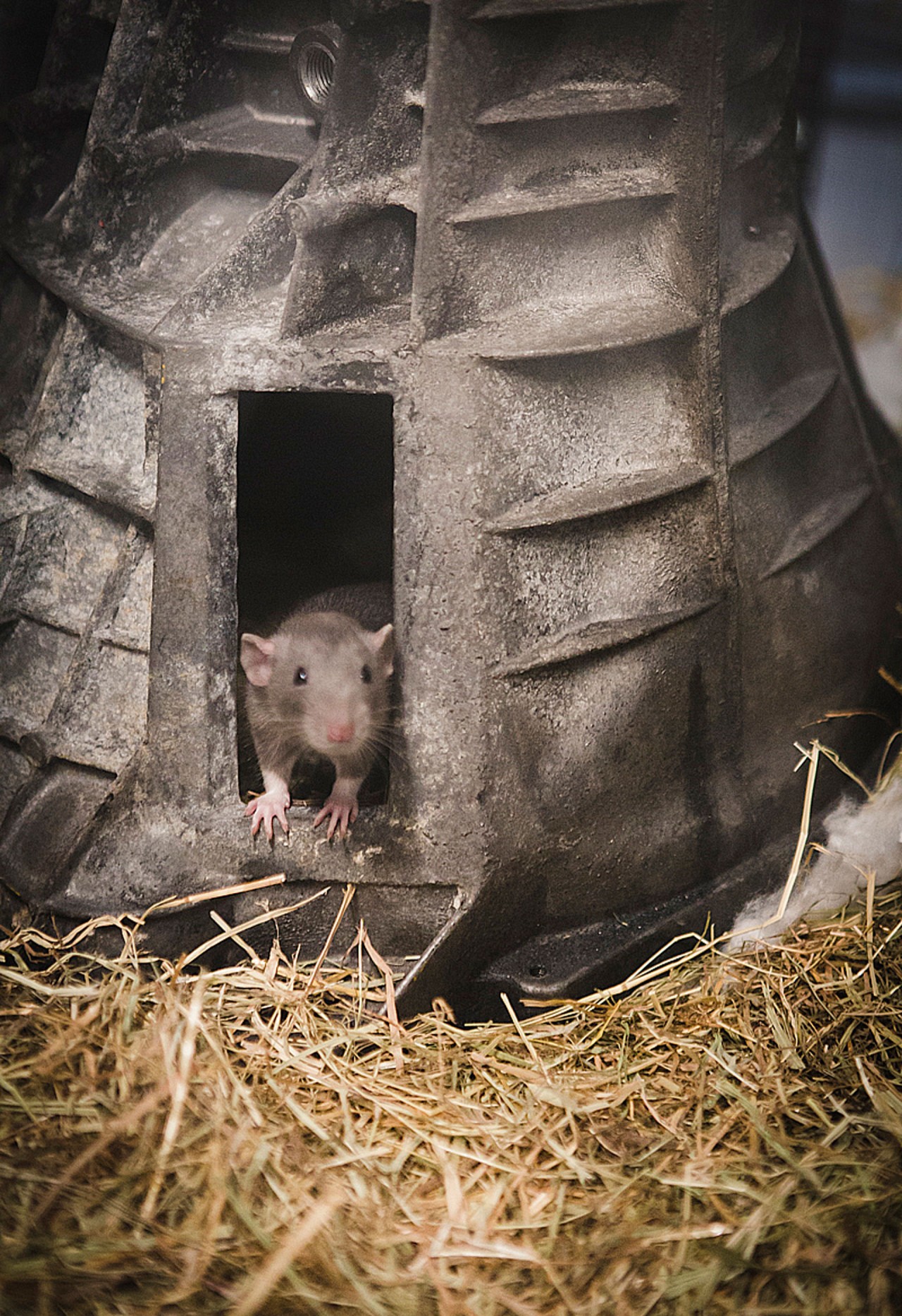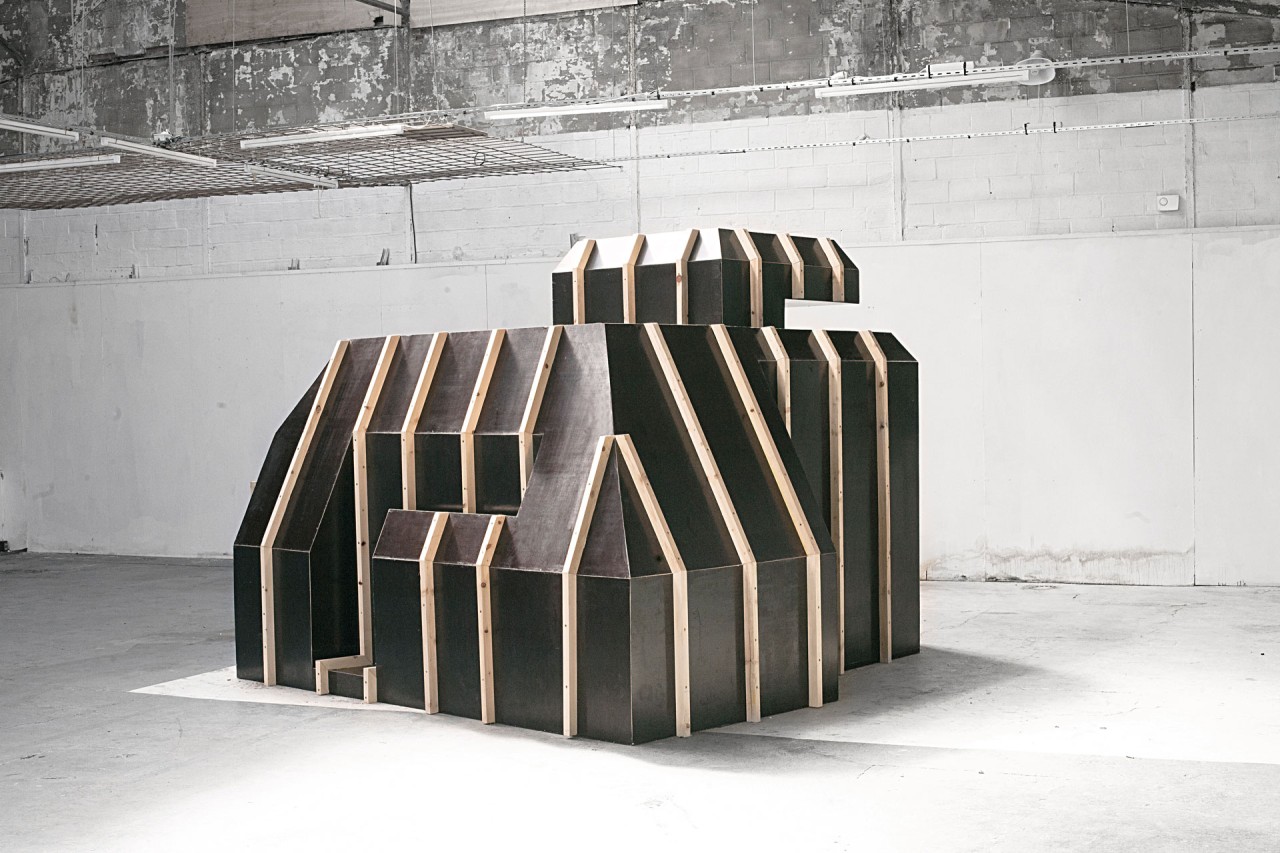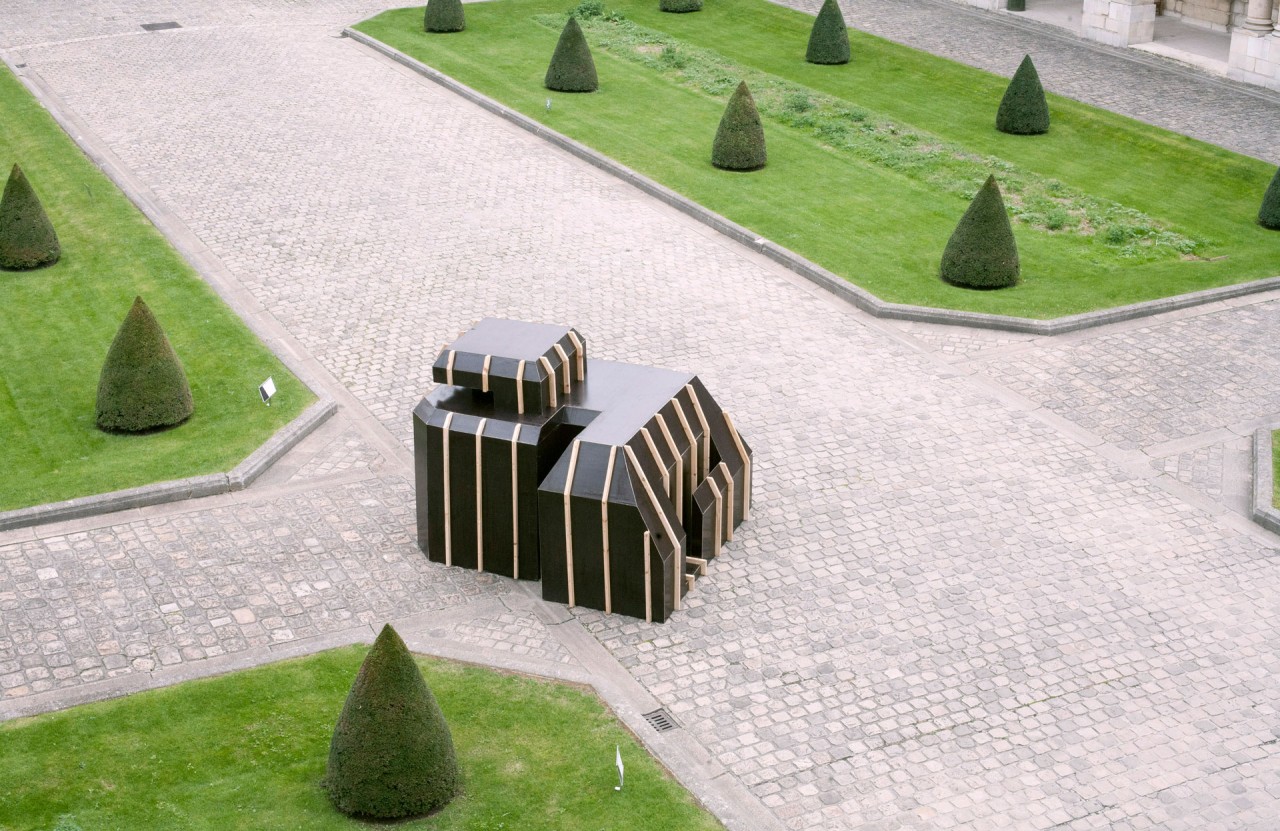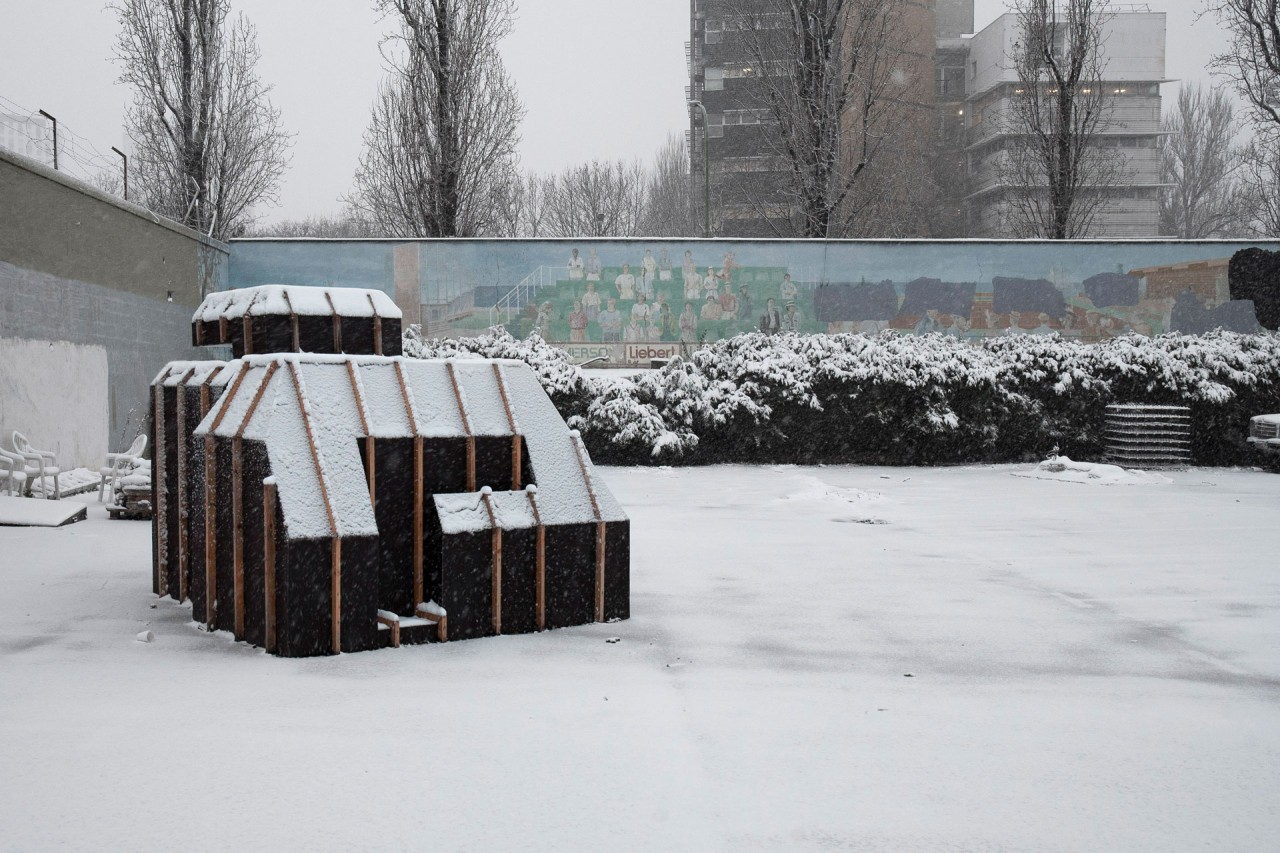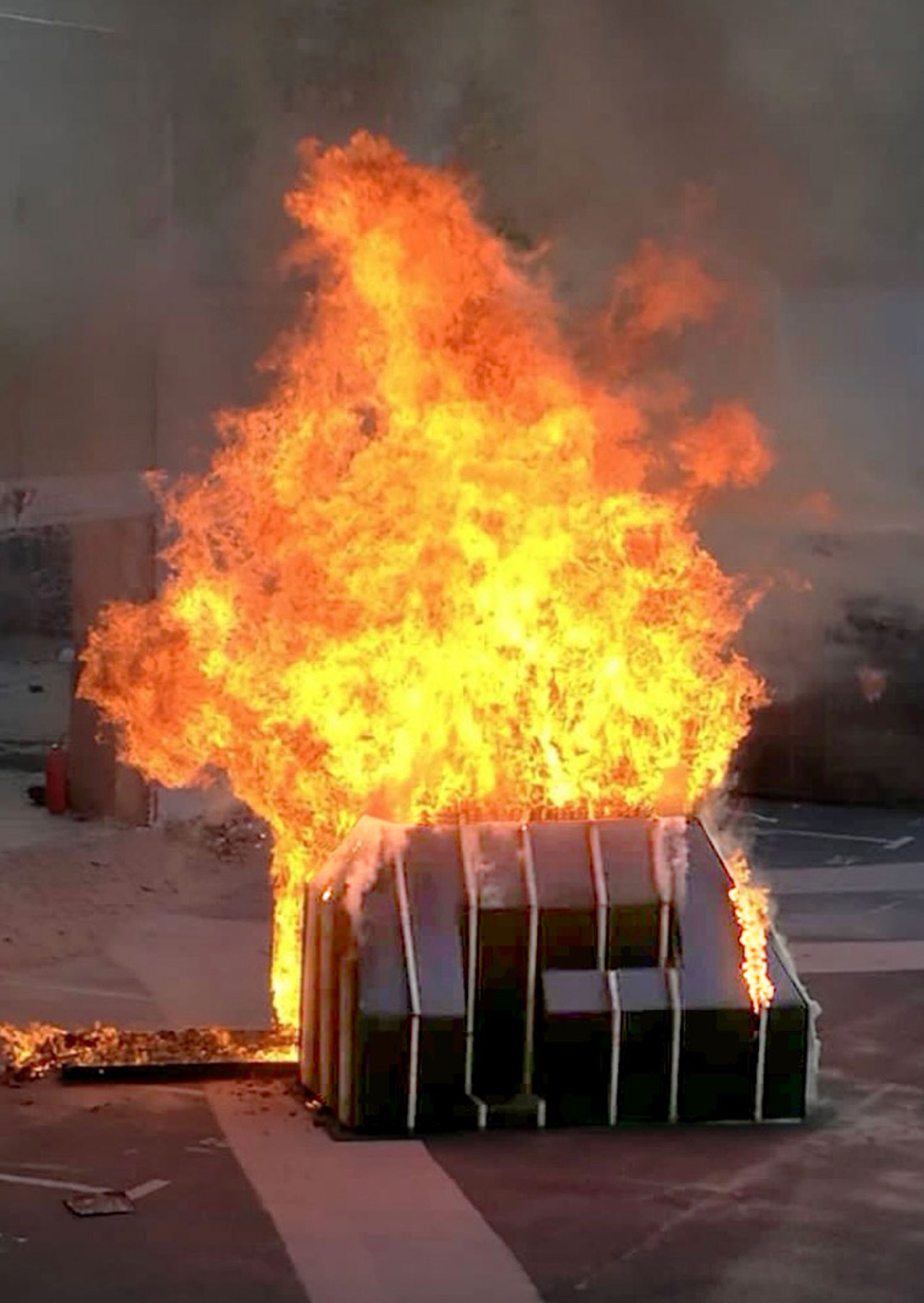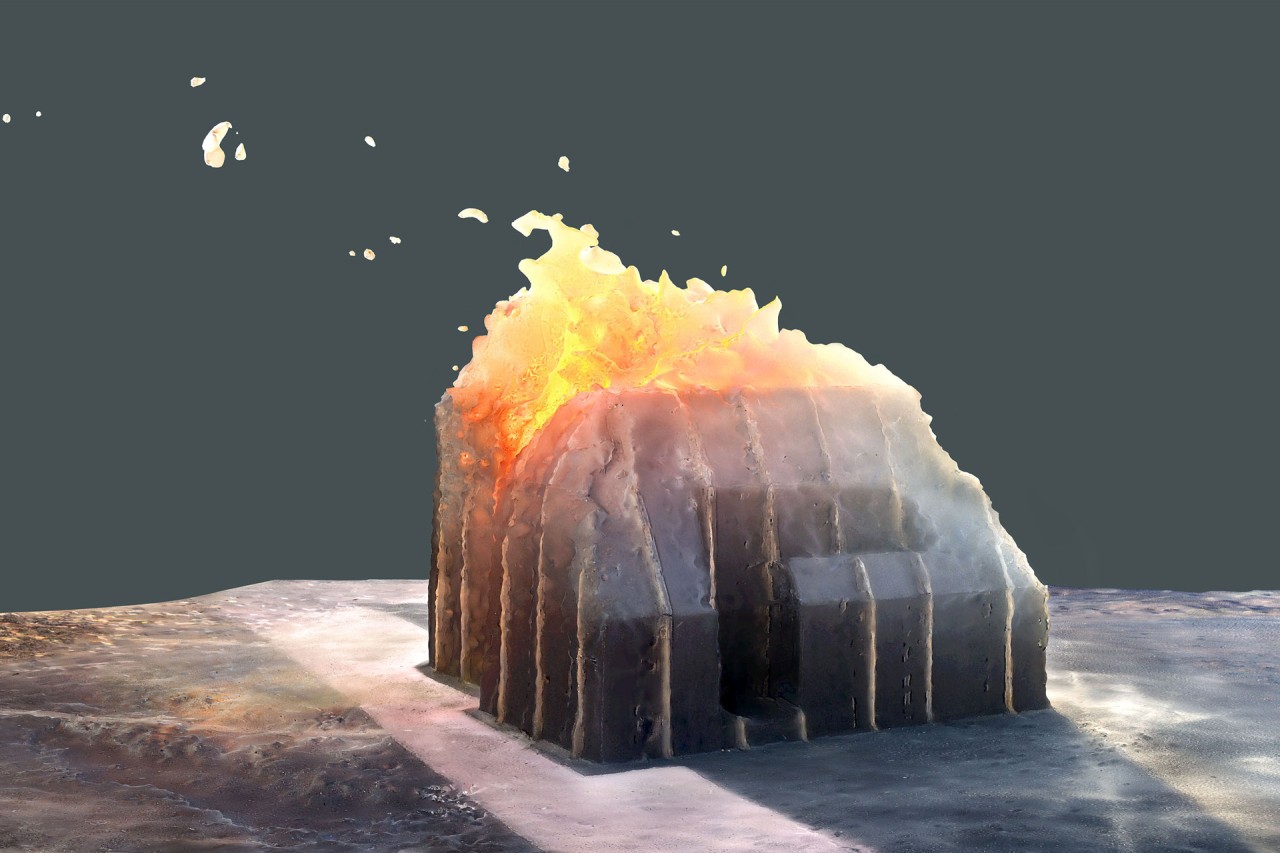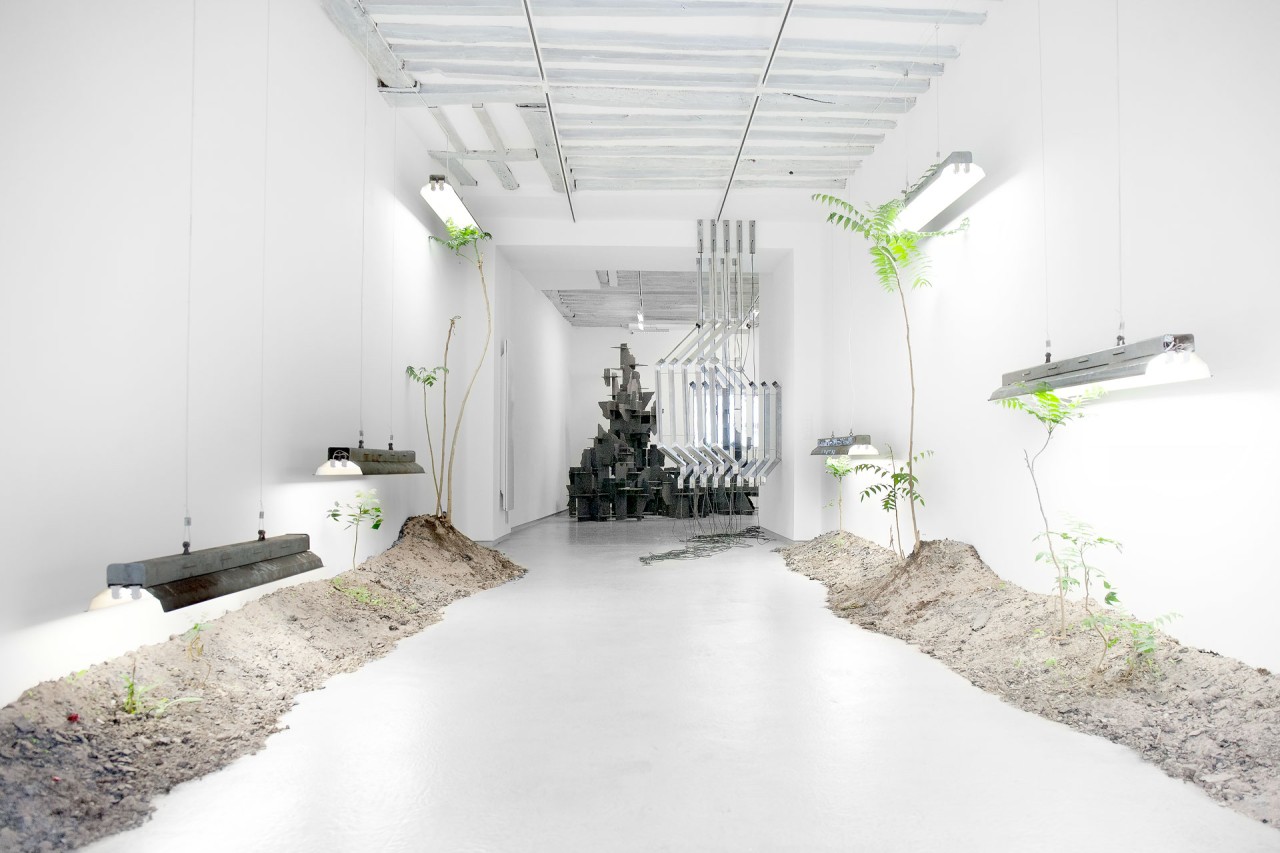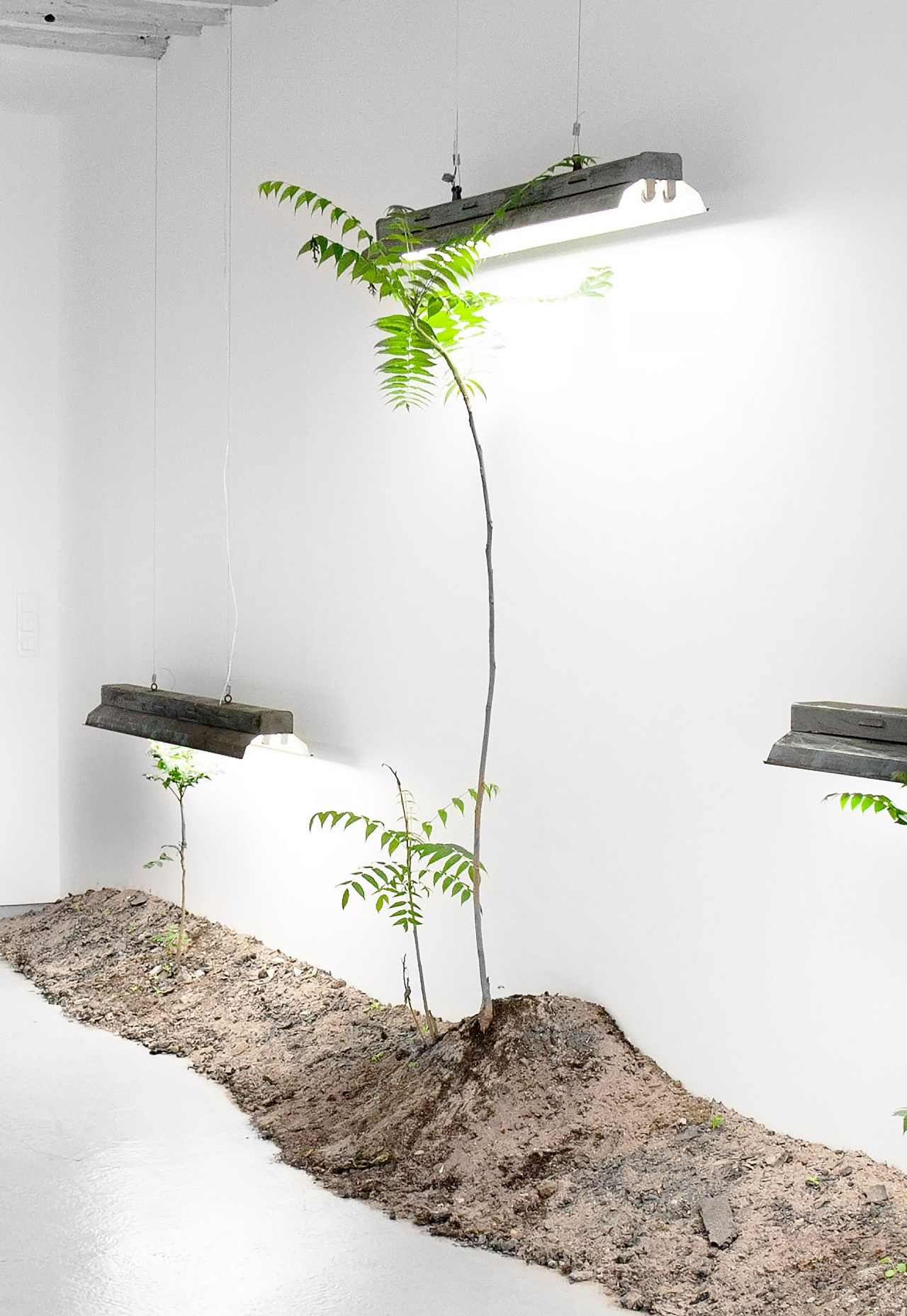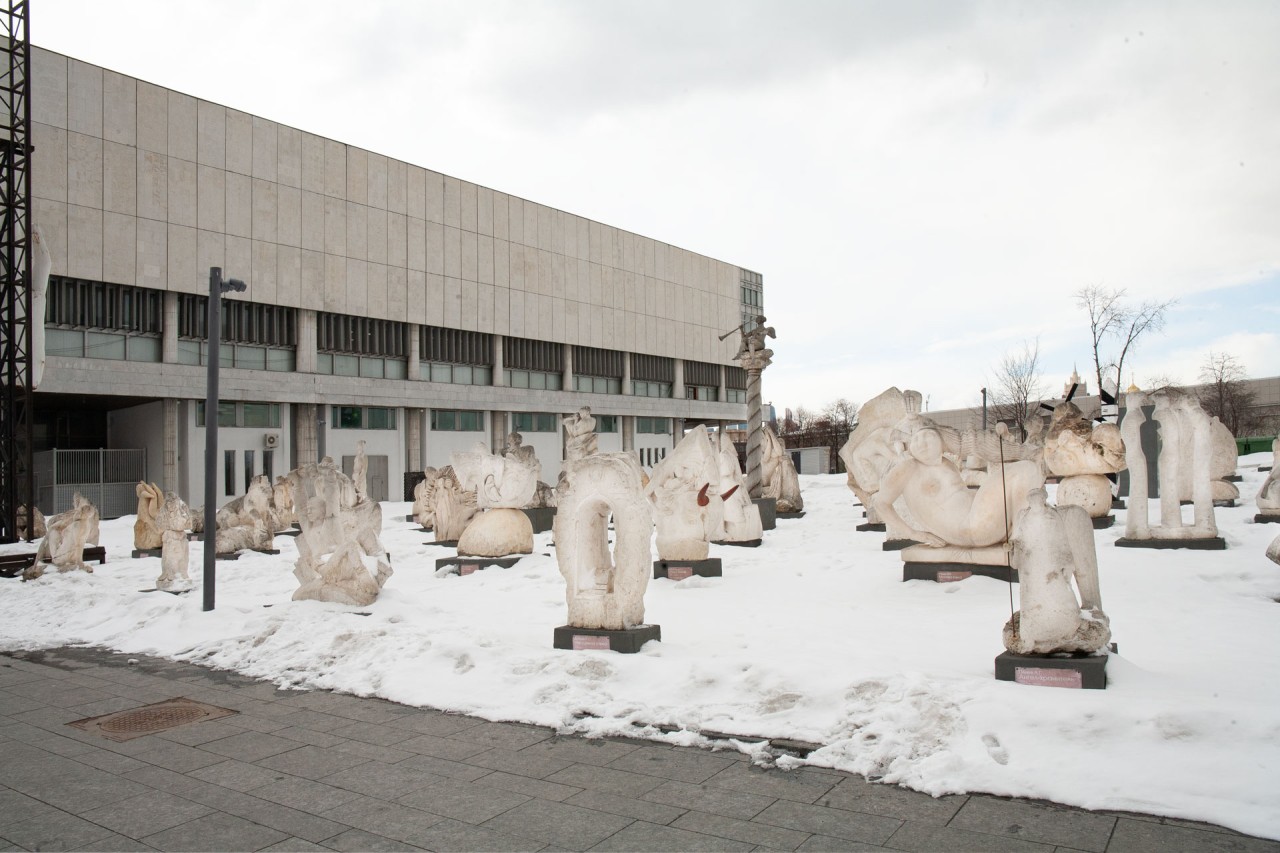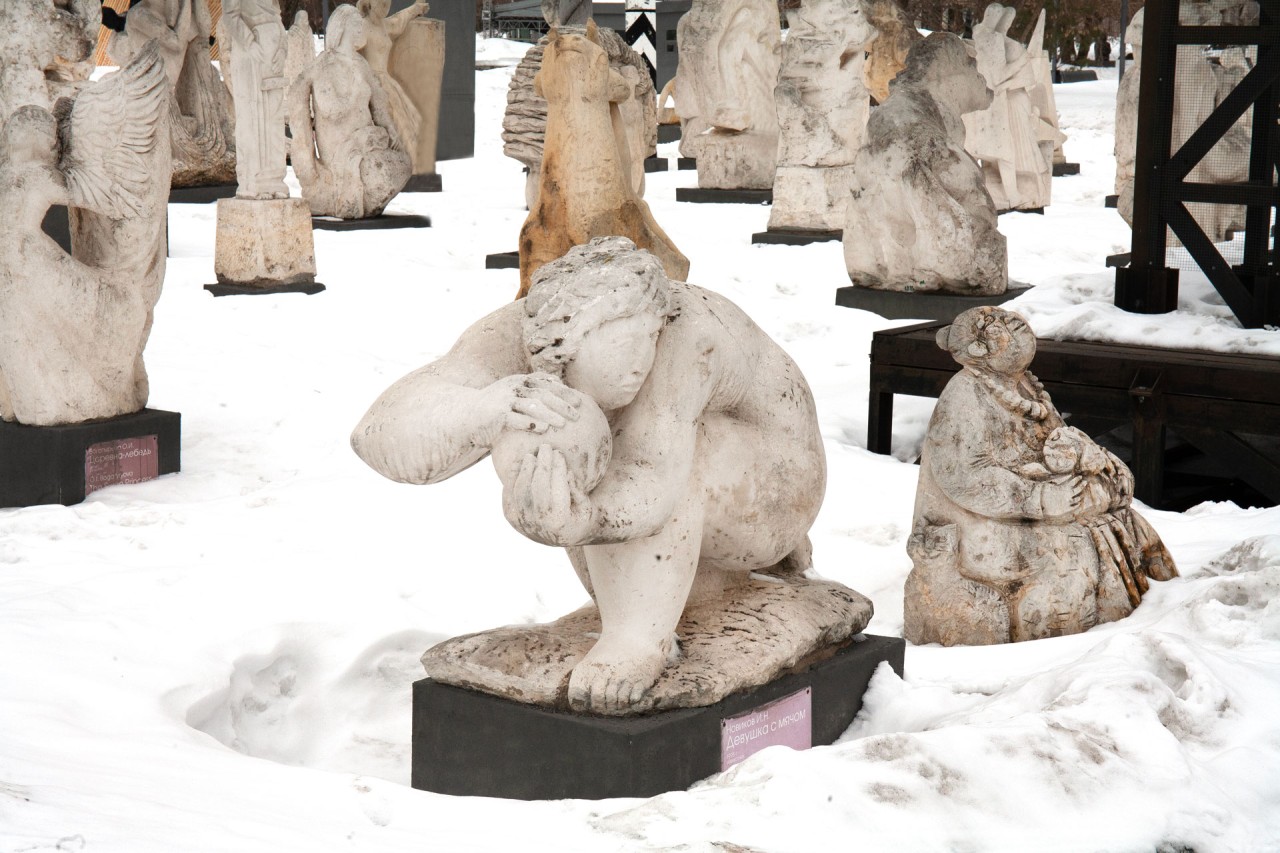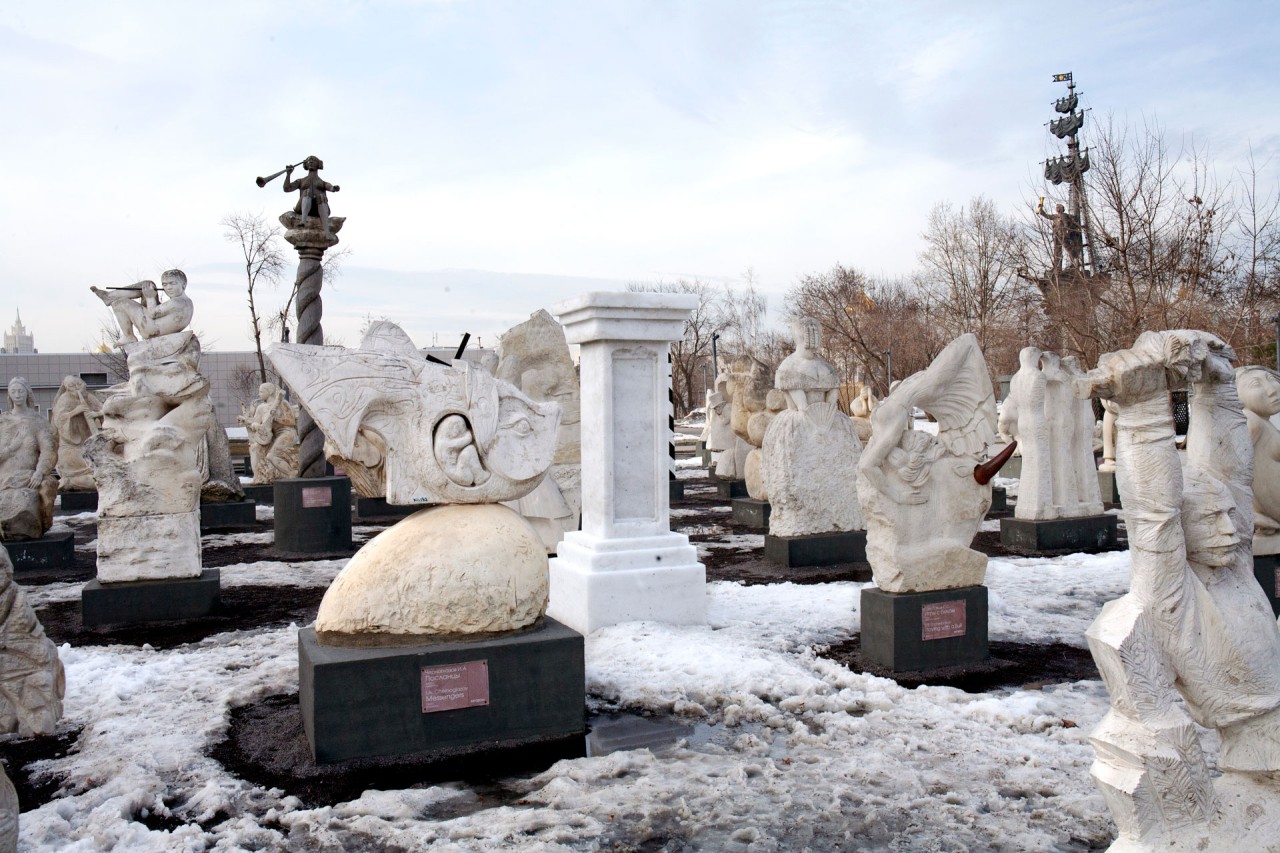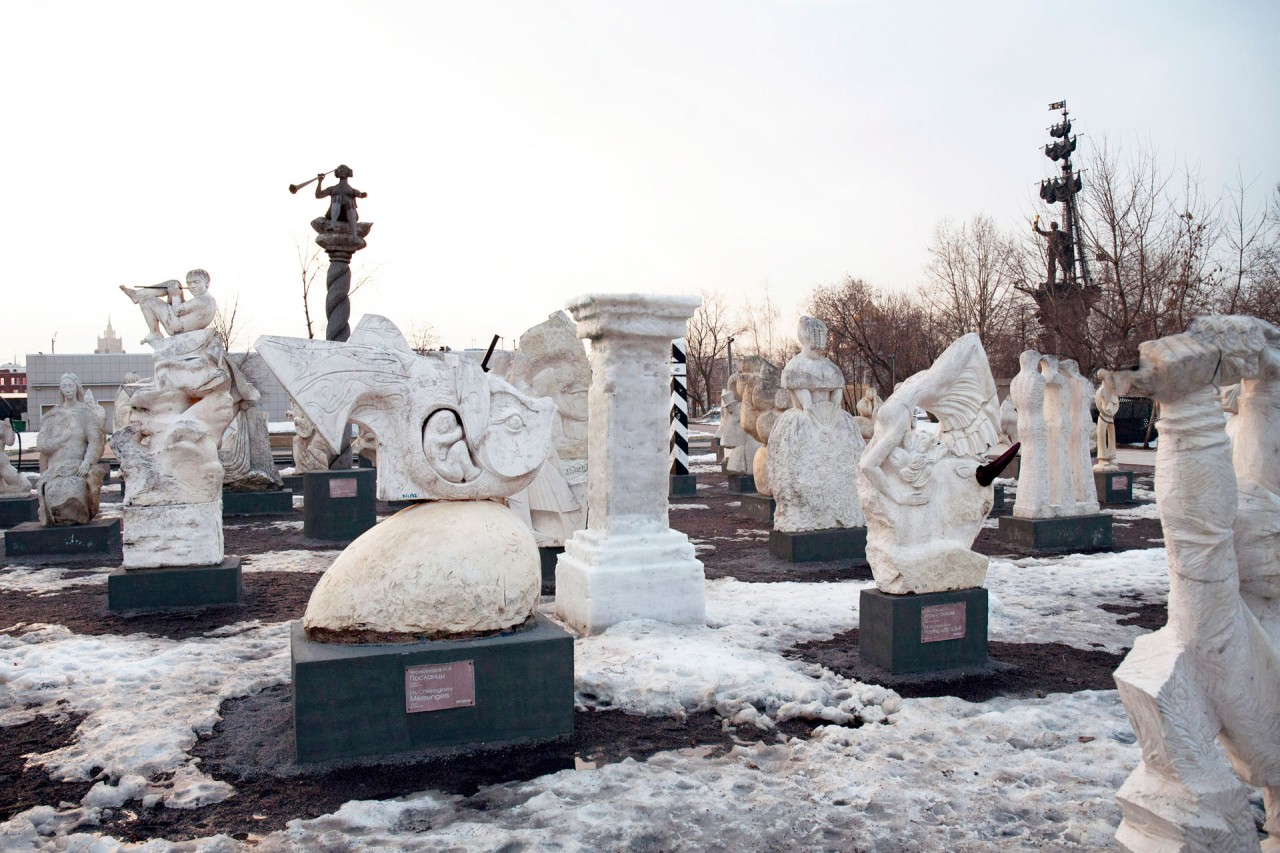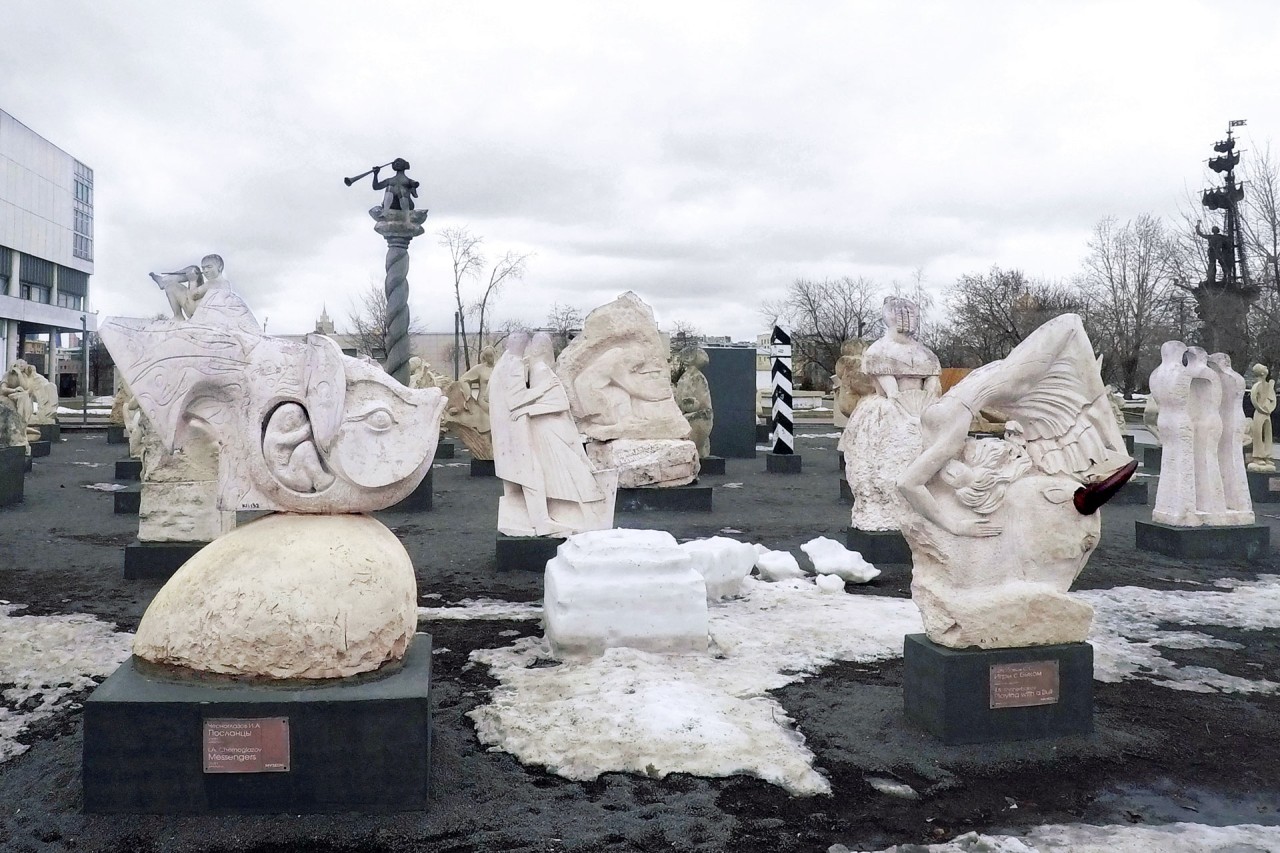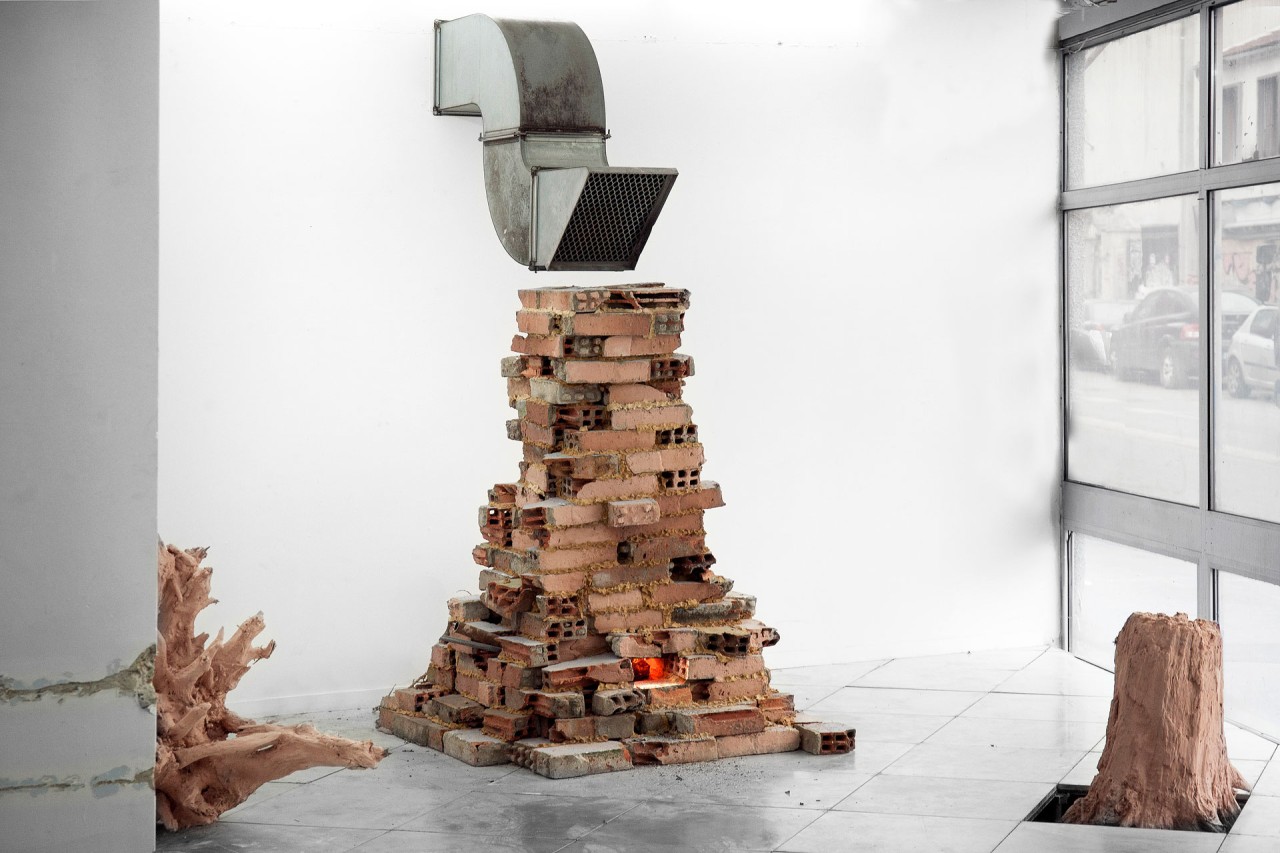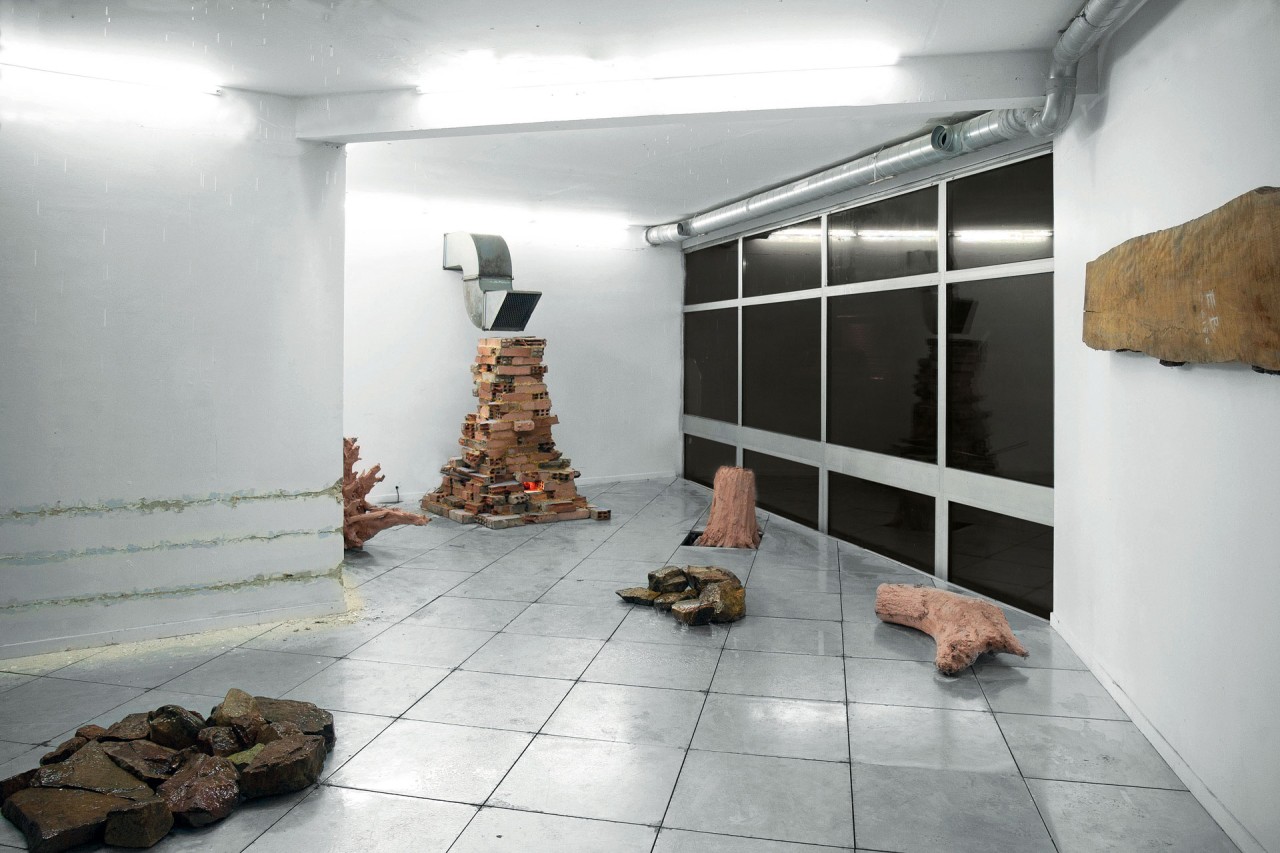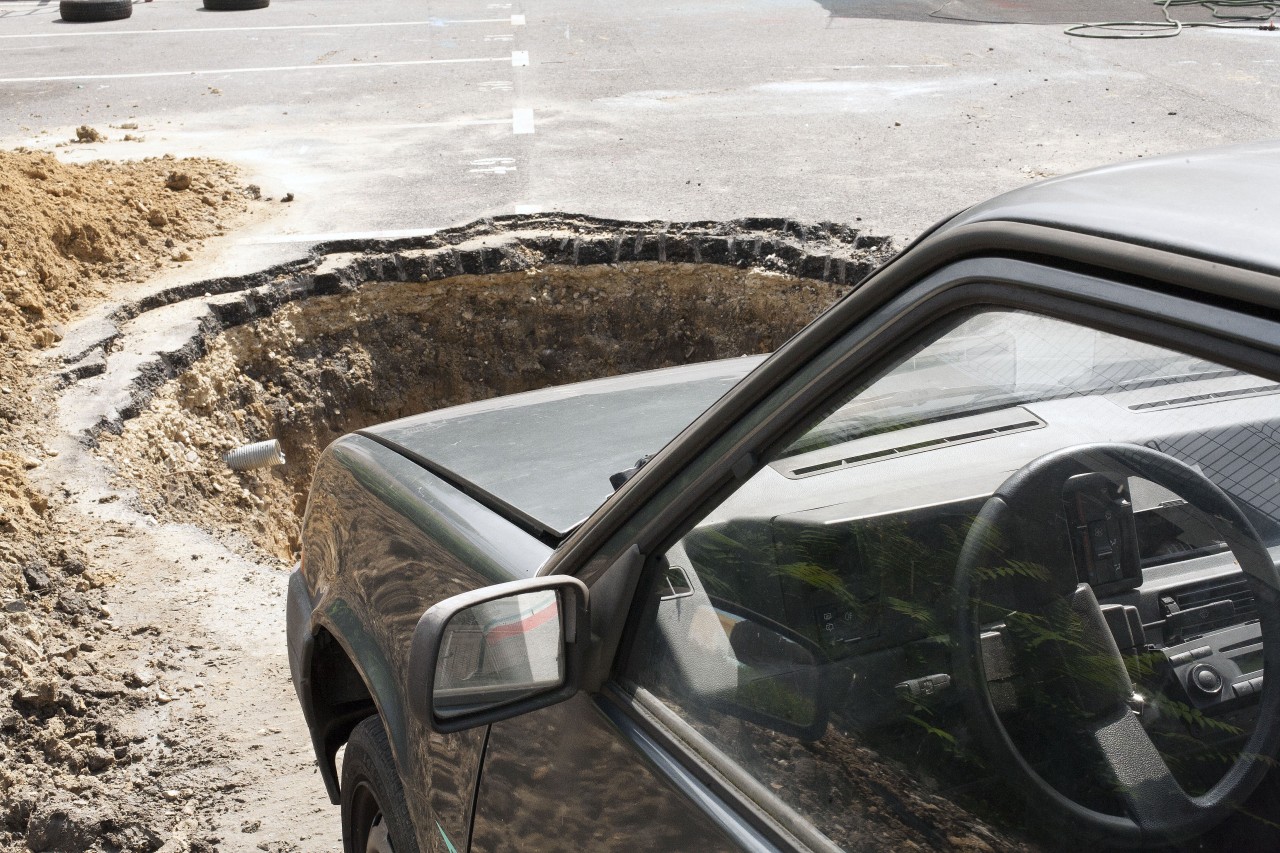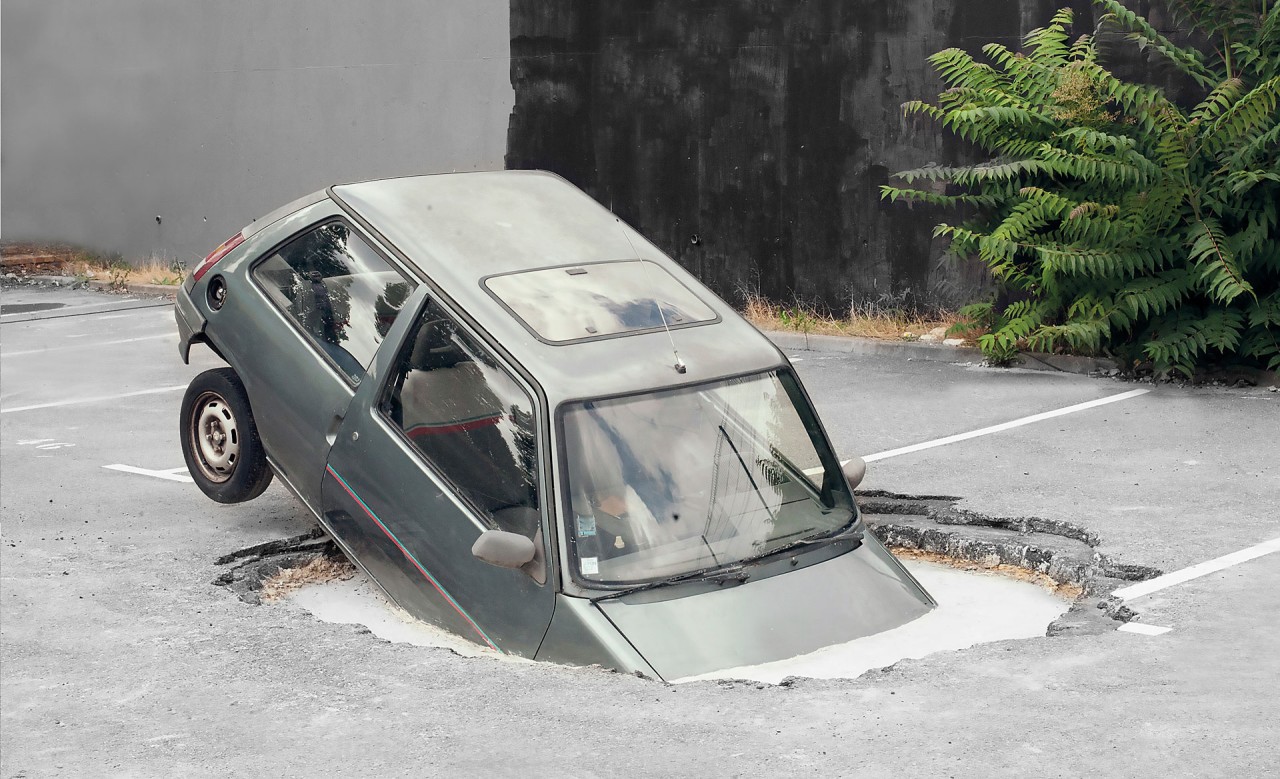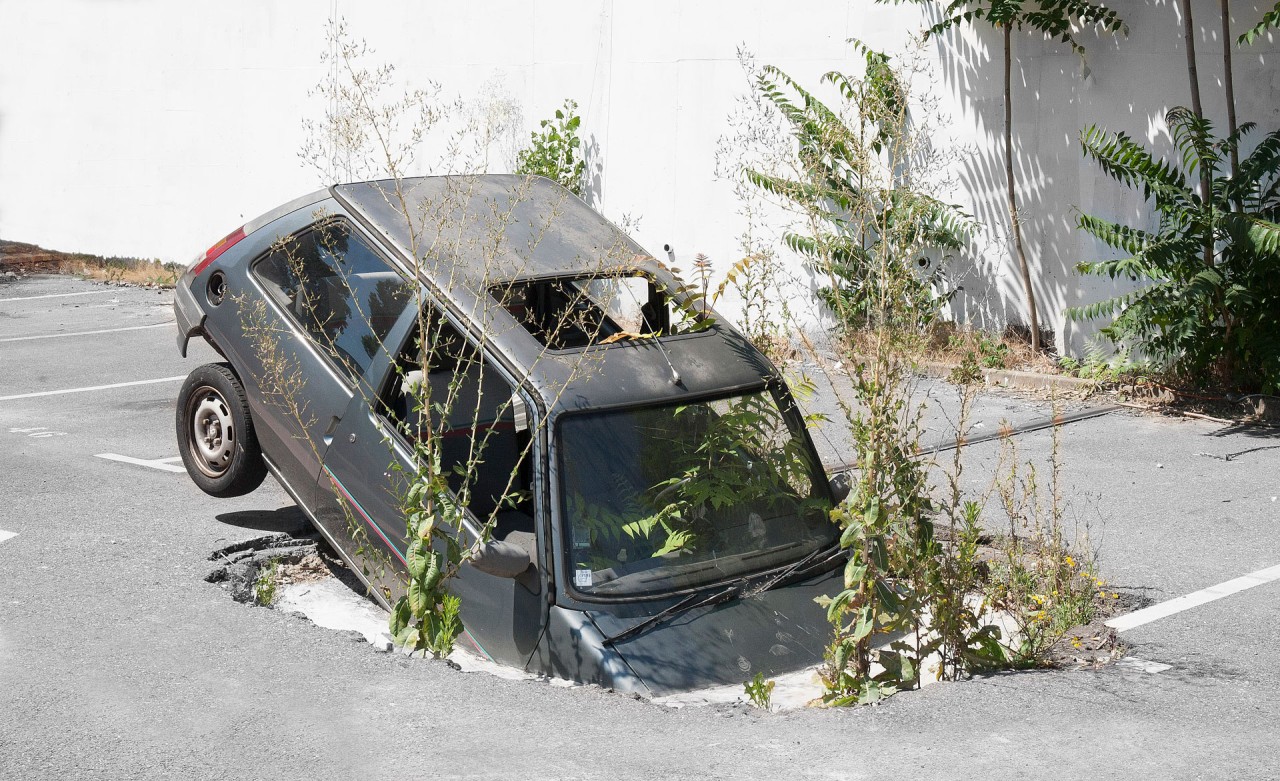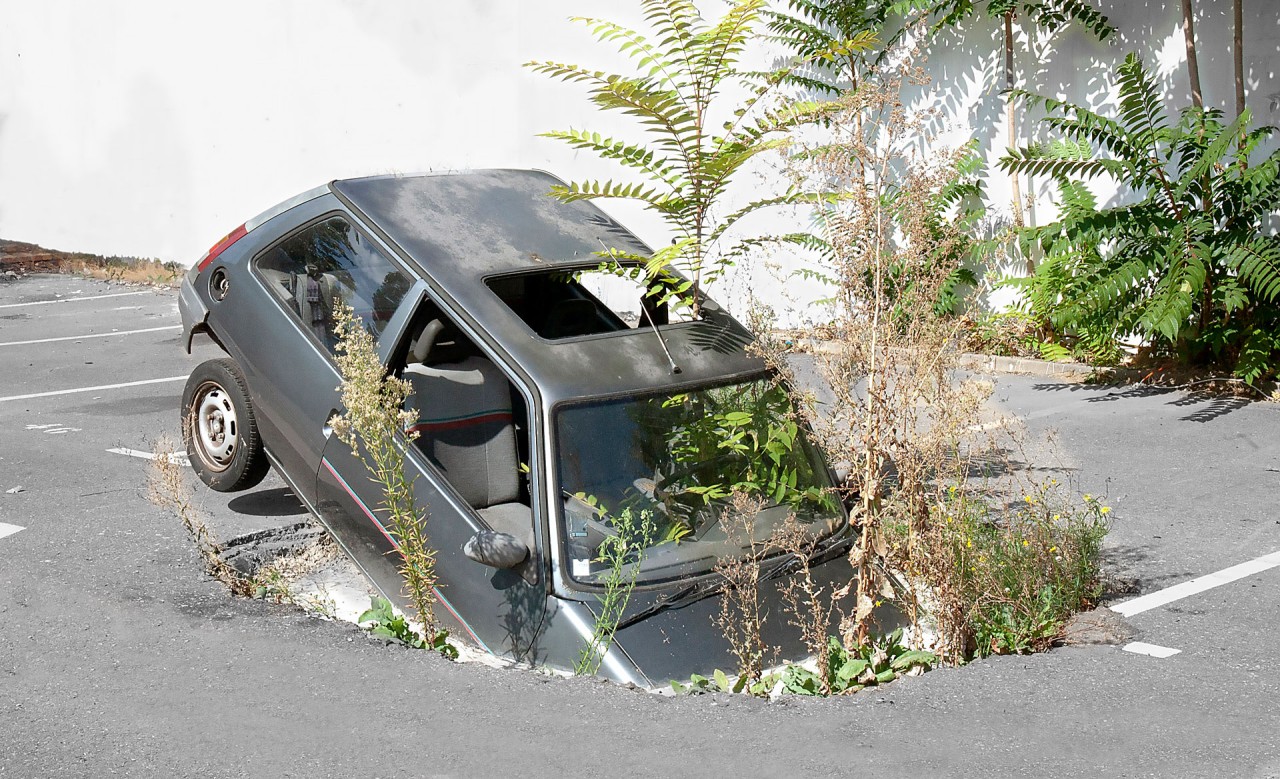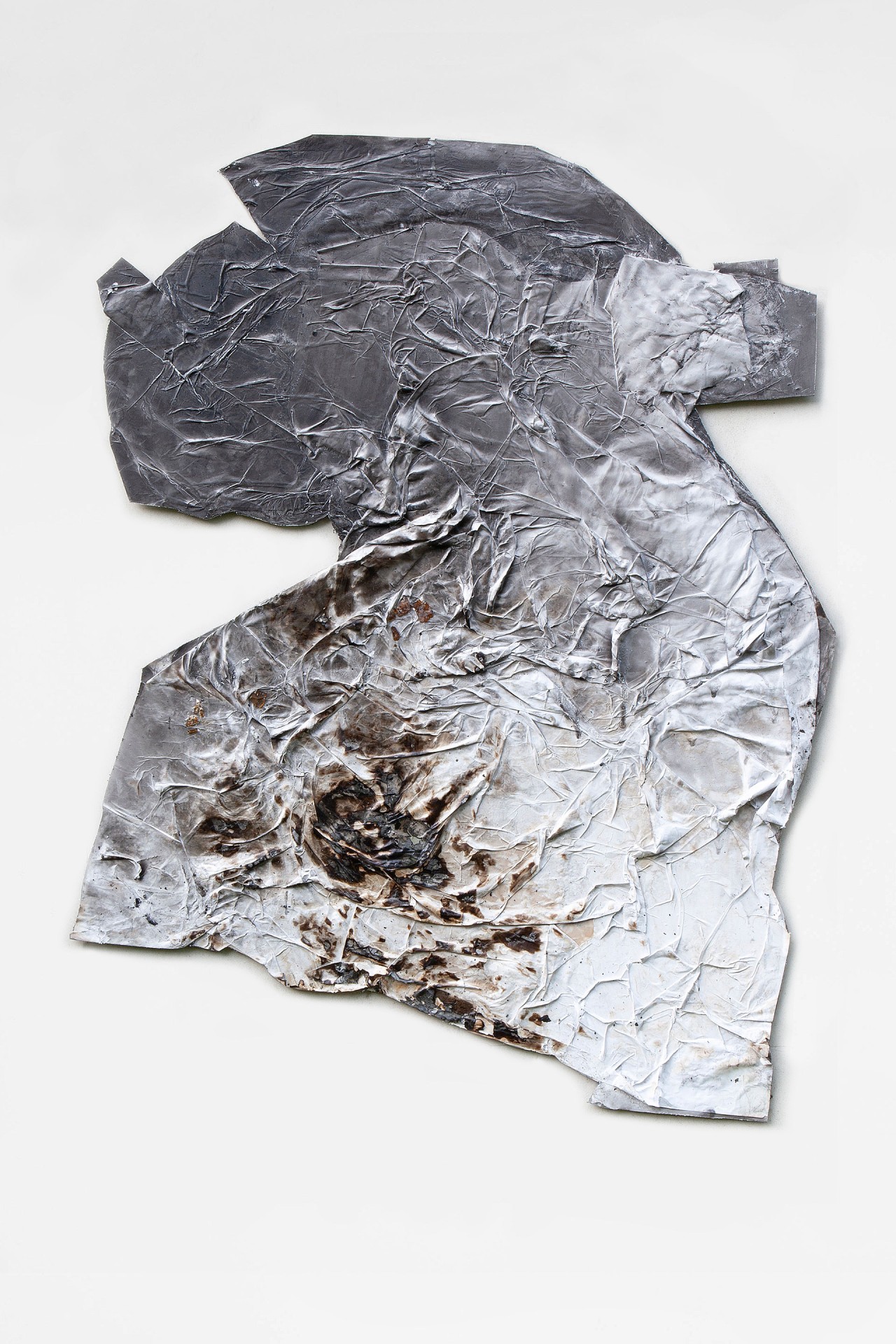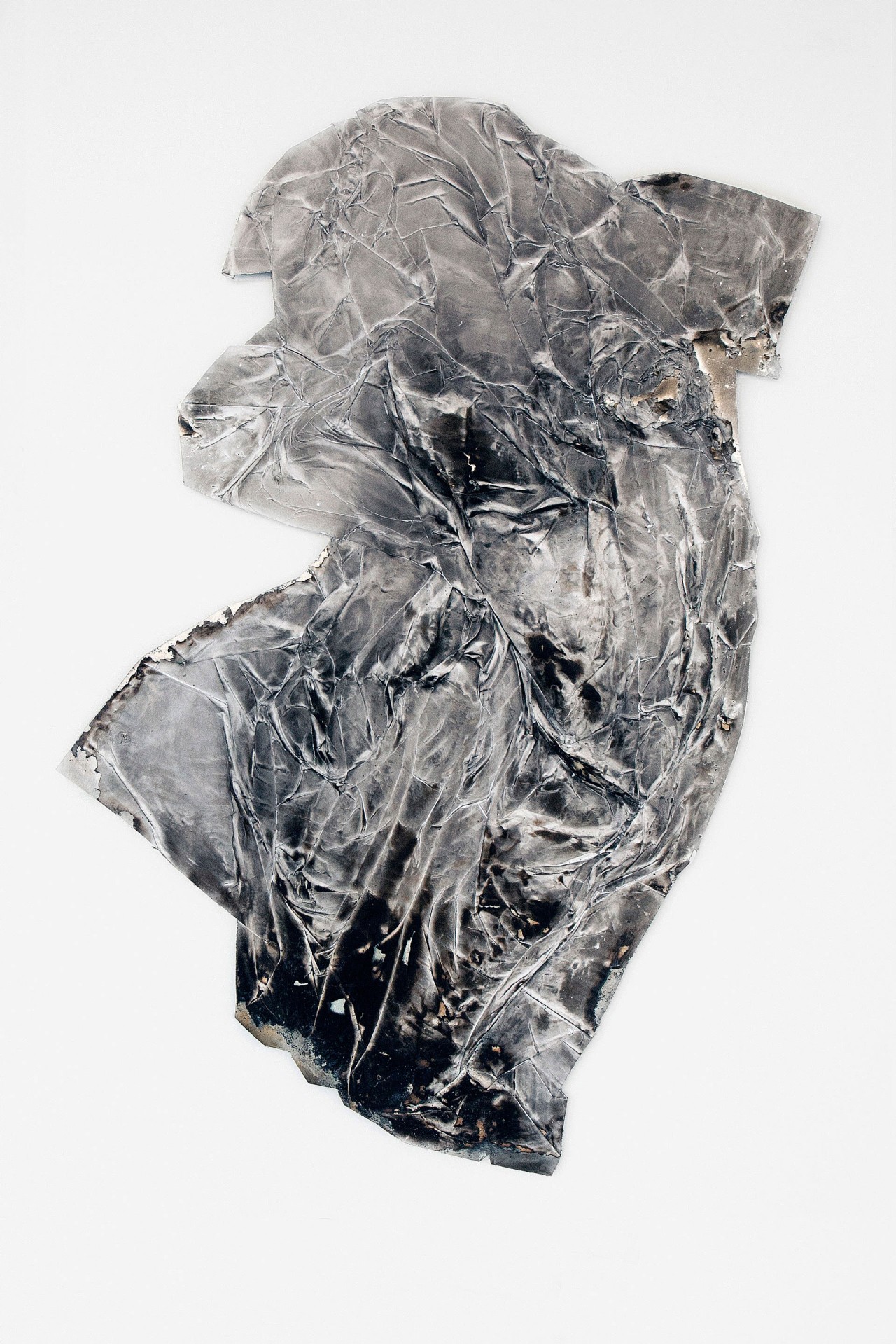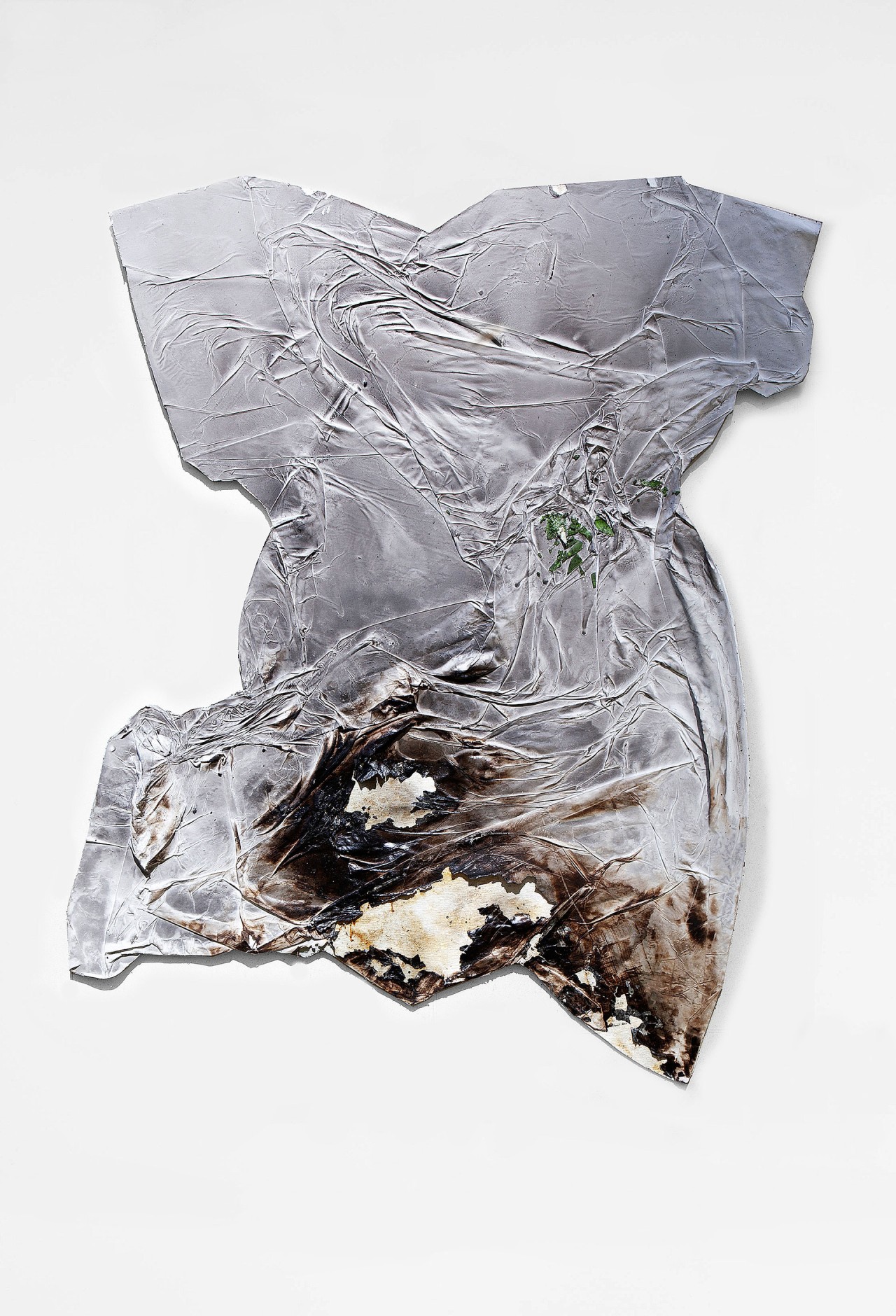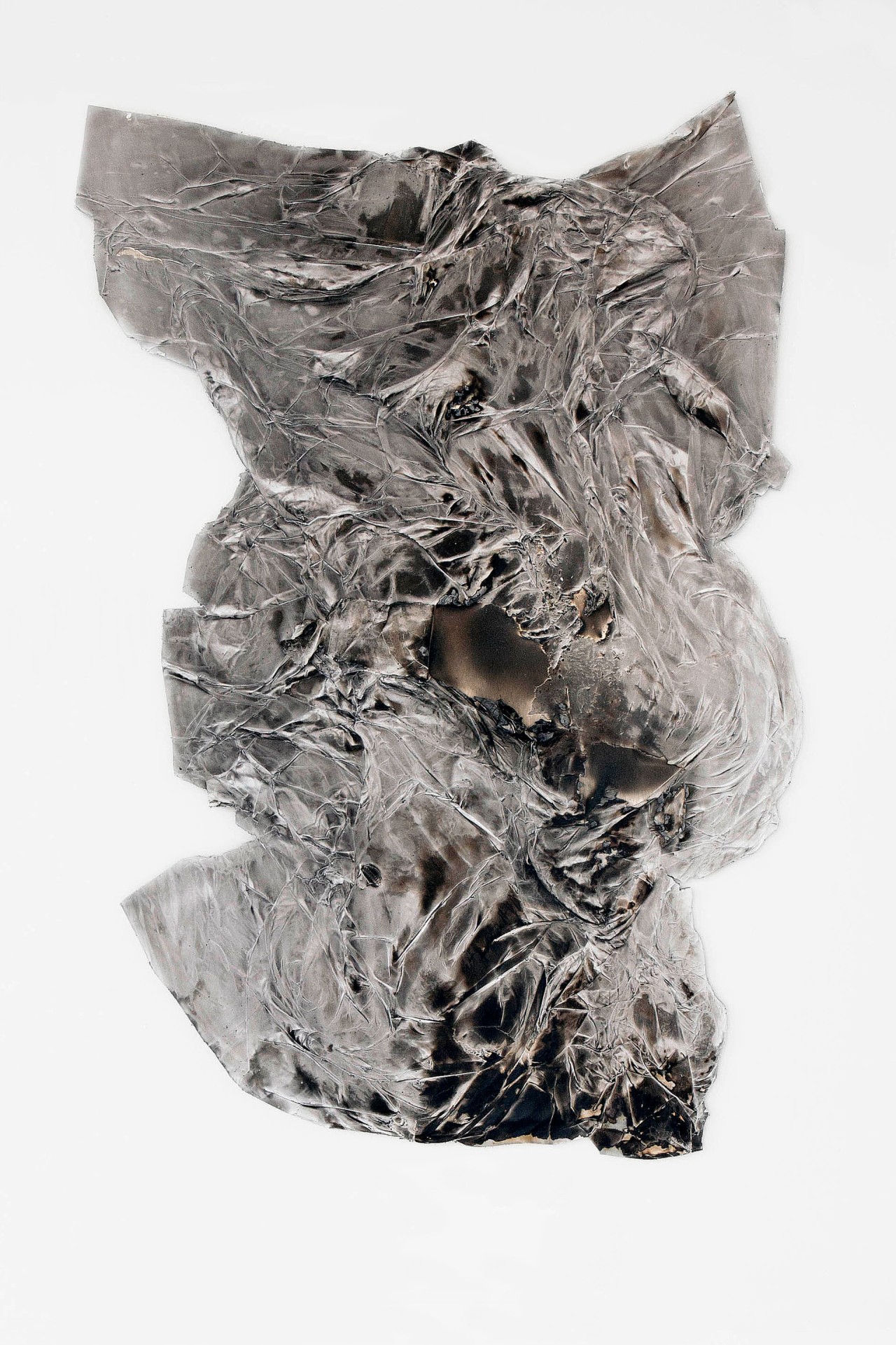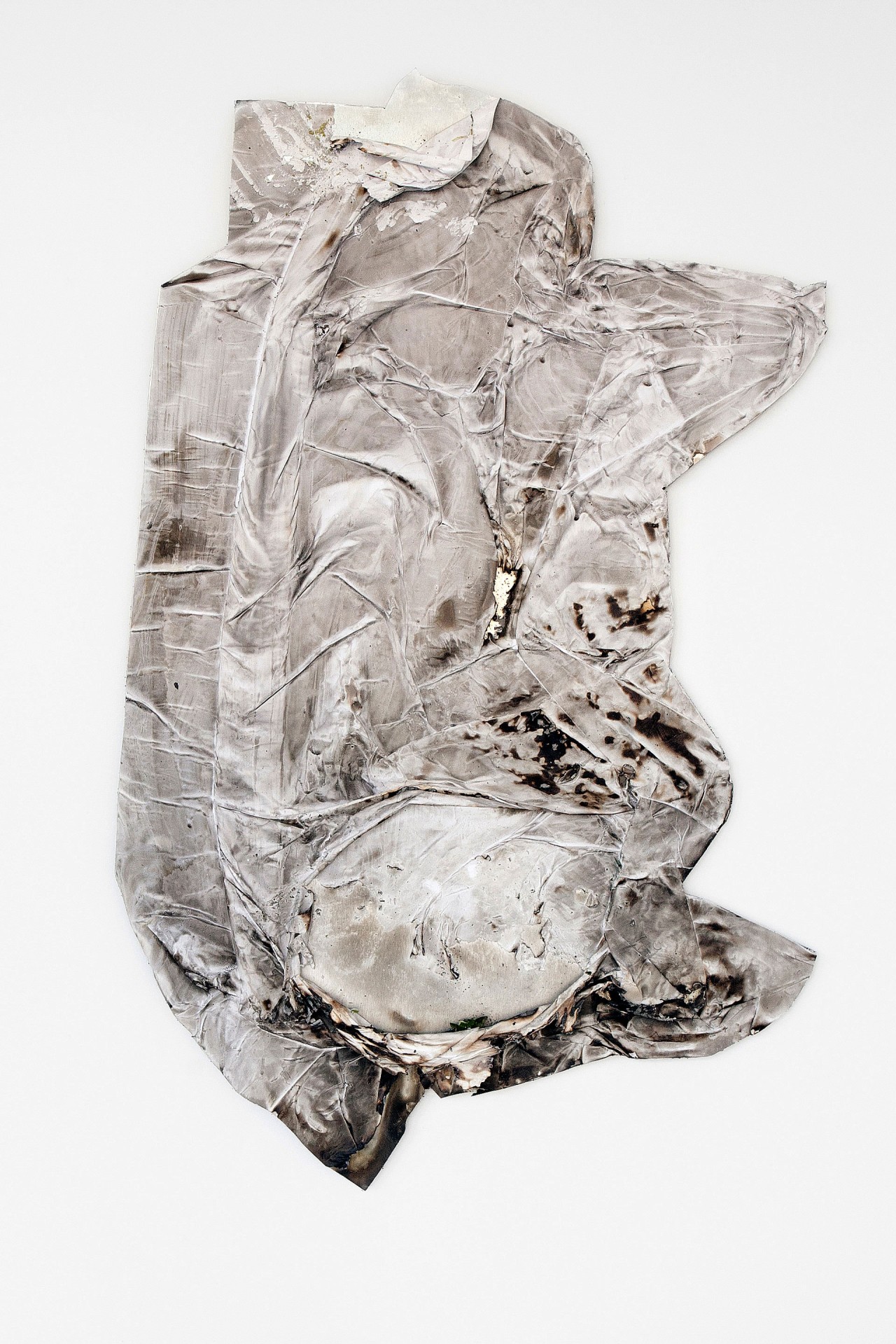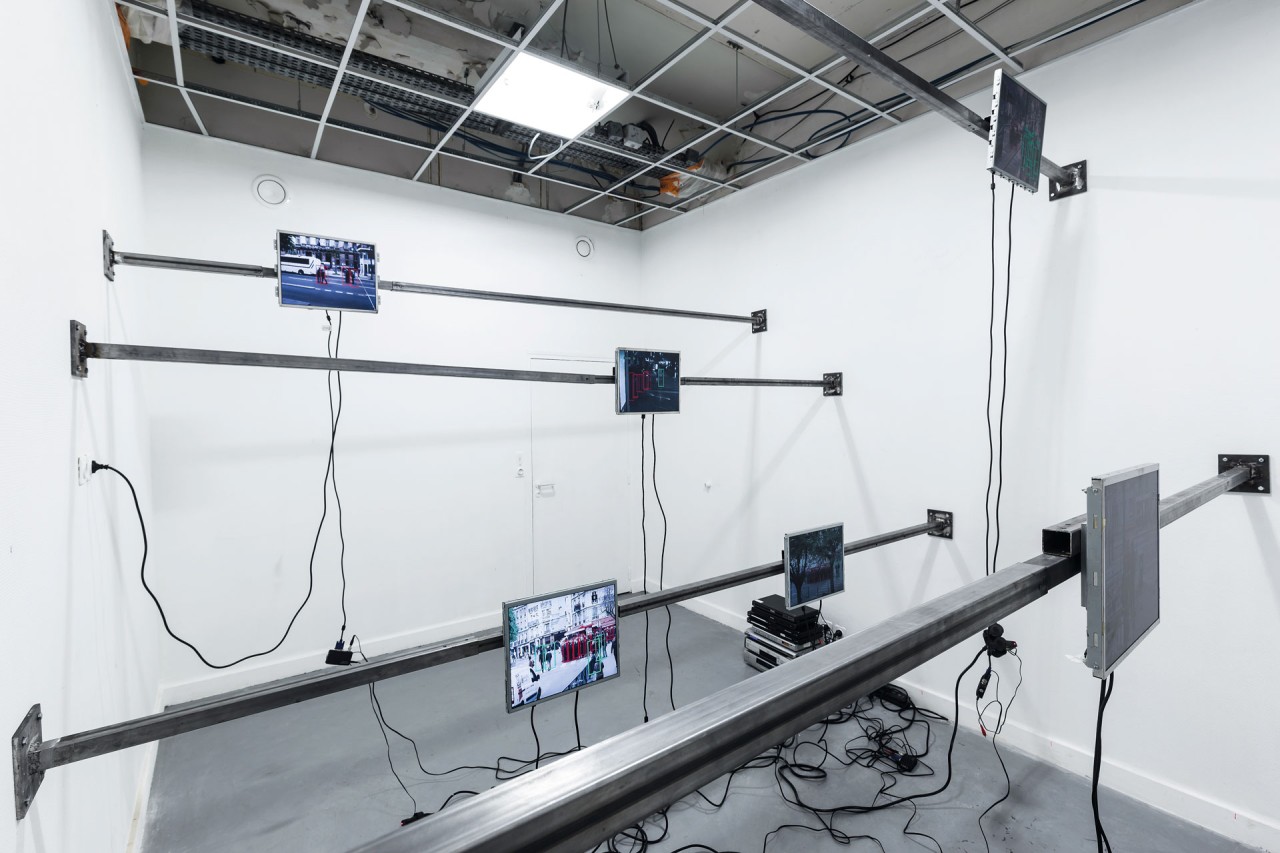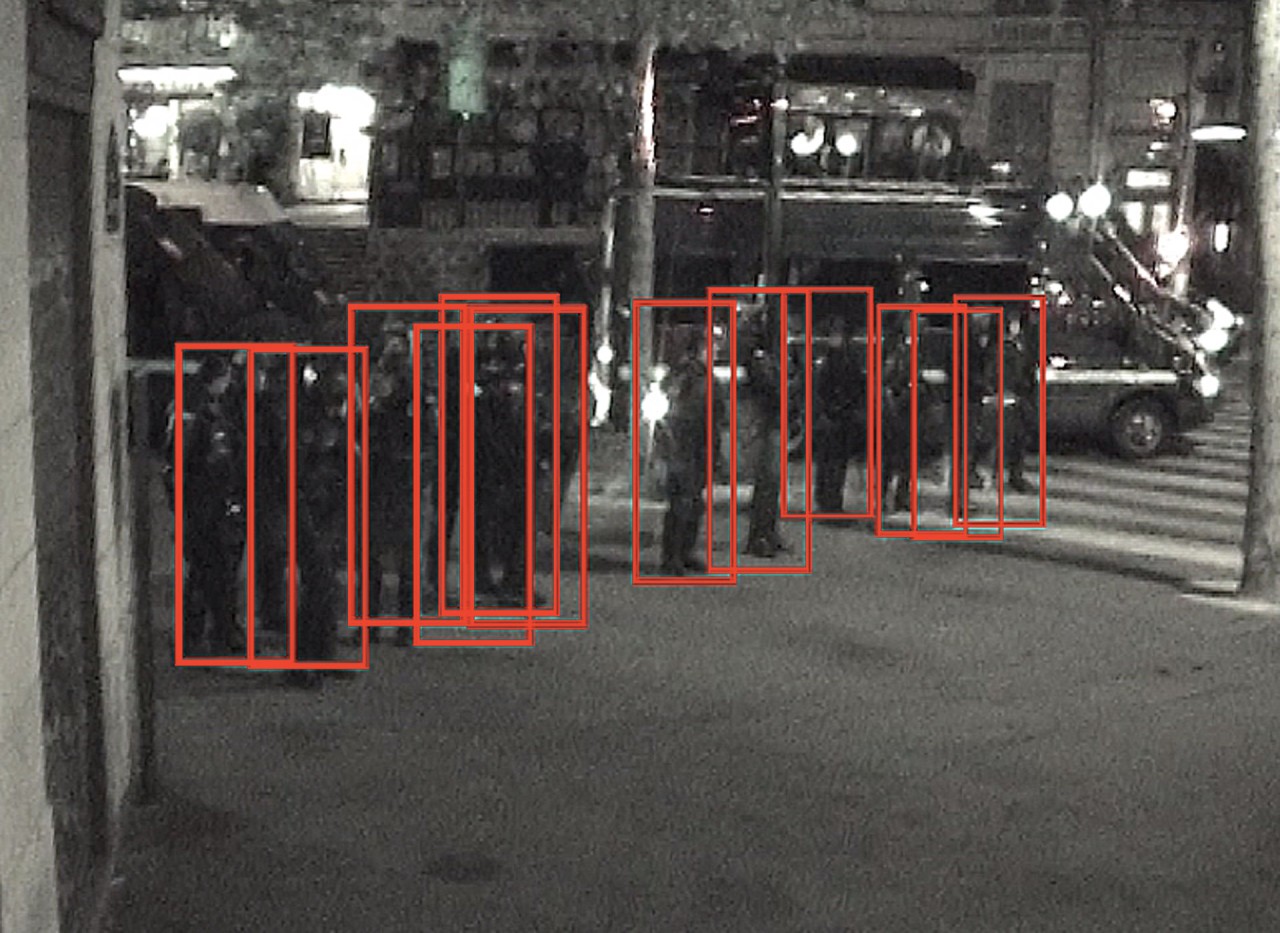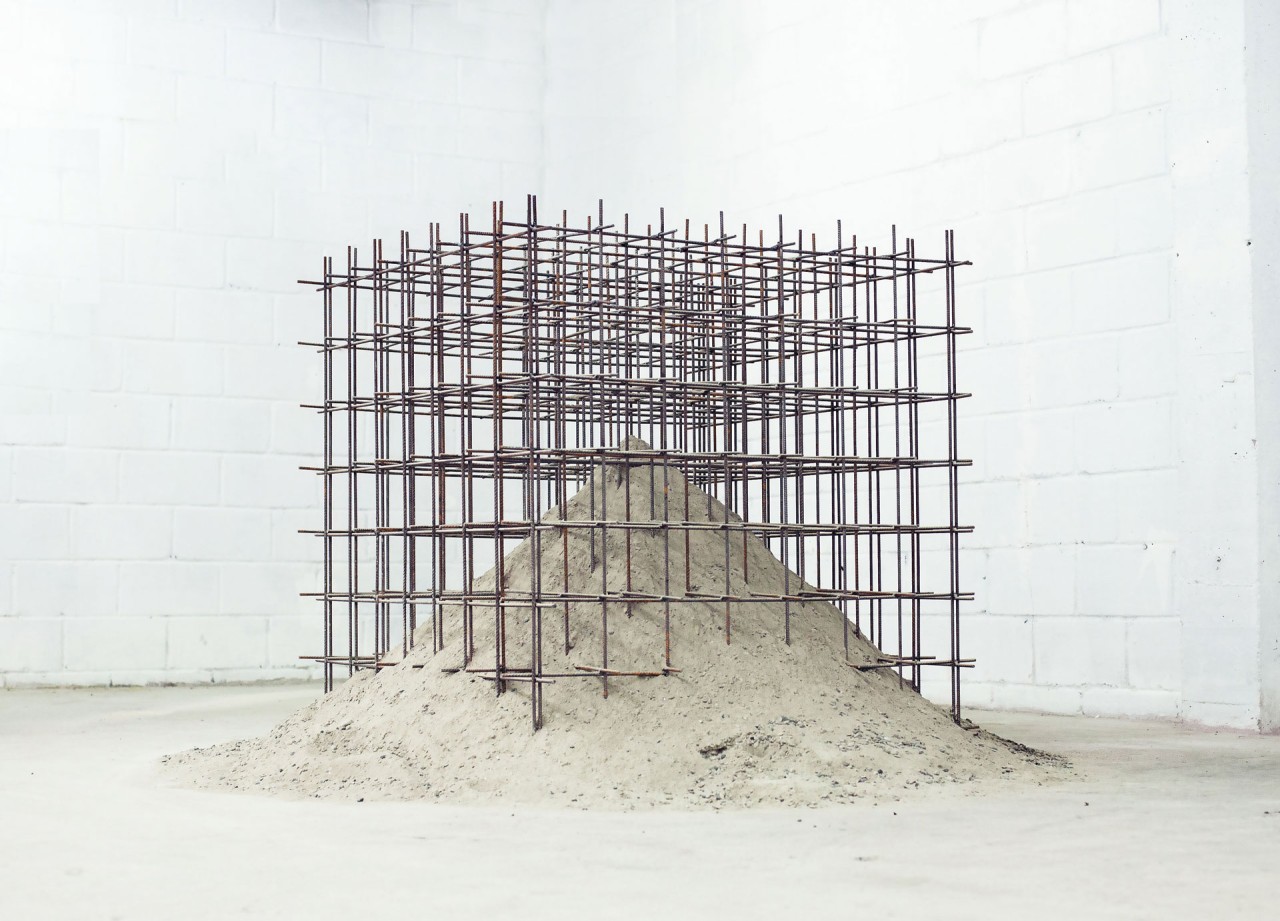-
Everywhere at the End of Time is an immersive installation built on the scale of a dilapidated apartment, somewhere between a haunted house, a post-apocalyptic shelter, and an inhabited sculpture. Inspired by real-life locations — homes of marginal artists, interiors marked by Diogenes syndrome — it stages a world in retreat, where collapse becomes a material for fiction. Inside, torn walls, collapsed furniture, and accumulated objects trace a cartography of chaos. Twelve hidden screens — inside an oven, behind a mirror, beneath a toilet seat — play a fragmented film the viewer must actively search for, room by room. Shot in the deserts of the American West, between Roswell and Area 51, the film follows a masked figure, part-skater, part-alien, wandering through a hallucinated world of sacred landscapes and UFO-themed souvenir shops. Along the way, we encounter obsessive characters like Gerry, a Colorado conspiracy theorist, or a desert artist creating works for extraterrestrials. The installation draws on collective narratives and their contemporary mutations: here, aliens and zombies have replaced ancient gods and mystical visions. These new figures name the invisible, structure our fears, and challenge our grasp on reality. Where religious apparitions once revealed the Virgin, today’s stories speak of encounters with beings from outer space. These new epiphanies emerge from the margins — desert edges, social fringes — and carry a quasi-mystical mission: to create not for God, but for an otherness from elsewhere. In a world where old myths have crumbled, the alien becomes a paradoxical figure of belief — the messenger of a world where faith still exists, but takes on new forms.
-
For the deep eye that sees, dens are cries, I love how all caves sound. For me, the caves are places of beliefs and trances. Deep inside our collective imagination, these caves shelter monsters, brigands and, even more clearly, the very doors of hell. I wish these fantastic spaces, burrowed by time inside the mountain, were the tools used to build the stories bearing the first artistic traces. I can glimpse their authors, how they were inspired by them and into what kind of altered state of consciousness all this carried them away. I travel inside my body. At the edge of my unconscious, I look for the origin of spirituality. I get acquainted with it in an asymmetrical part of the brain, called the pineal gland. Among other qualities, the pineal gland tells me that it has the weird function of secreting DMT, the chemical compound behind the psychedelic trance journeys of Ayahuasca ceremonies. I then see these men anew, making paintings in the caves. They know this journey. They turn to ask me how many beliefs engendered by these substances still hold true today. They confide in me: he who speaks in the original image expresses himself, in a nutshell, through thousands of voices.
-
One day, a scrap dealer from whom I came to collect material told me that aluminum is only found in rock at purity levels never exceeding 99.4 or 99.5%. In spite of this, it is said that 99.9% pure aluminum was found in the Sahara. It is said that it came from a meteorite named Hypatia.
-
As far as possible, I try to follow deep intuitions rather than trying to generate ideas. These are like buried images, archetypes from our collective memory, significant forms that at first glance go beyond the need to justify themselves. They appear at unexpected moments, starting me on a journey of exploration to discover what they really are. Over the course of many months, these archetypes accompany me, taking shape and evolving, moving from a gate to a carousel, from a kiosk to a house on stilts, from a pontoon to a suspension bridge. These images rarely emerge all at once; I have to let them rest to refine. But deep down, they’ve been there all along, waiting. All you have to do is go down inside yourself to reach them.
Conversely, I perceive ideas as detours, indirect means of expressing a deep intuition, almost artifices of the soul to seduce or conform. In my opinion, we are all conduits for an unconscious consciousness that manifests itself in the tangible world, using veiled strategies to inscribe itself there. By learning to listen to these inner voices, we can fluidify this channel and give free rein to those associations of ideas - those images - that define us, condensing both what we are and what we become under the influence of others and the outside world. So, if everything is already there, all that remains is to know how to listen to allow these inner voices to express themselves without polishing them too much, conforming them, and altering their raw essence. These images are rich in their strangeness, their uncertainty, and their inadequacy in the face of the ephemeral fashions of the times in which they appear. -
My work regularly features doorways. Whether it’s an homage to the gateway to the underworld at Bomarzo, a Dionysian portal, deformed subway gantries, or those black holes painted in ink on newspapers collected in Japan. On a deeper level, I’m also exploring the symbolism of volcanoes and their fearsome craters, which I see as passages leading both to the heart of the earth and to the depths of the soul. To my mind, these passages are an invitation to explore and discover boundless, wondrous worlds, blending raw matter and the collective unconscious. Perhaps it would be more accurate to speak not of “doors” but of “passages” or even intermediate spaces, such as those designated by the term “Bardo” (བར་དོ་) in The Tibetan Book of the Dead. This interval designates both a place and an instant, a suspended state between life and death, but also between death and rebirth.
-
At night I can’t sleep anymore. To lull me, I dream that I’m flying over the Paris ring road. I see this battery factory’s roofs anew, whose white outlines are erased by invasive plants, able to grow in the concrete. They play the score supposed to crack the ground, they open wooden crates and reveal huge plaster Jesus, or heavy disassembled church stones. Narrow alleys turn into tunnels of green light, slide down to the deepest cellars, where mechanical treasures remain lost. The plants transform the concrete buildings into an adventure playground where each abandoned space offers used things, like a supermarket. They run along the wires the rats follow, like the current that switch on the lamps and switch off the sky. Up there, they take me into the vast, silent space. Crossed by rectilinear movements, debris of matter traveling at an inconceivable speed, where a human body is nothing, without gravity, nor density of existence.
-
For me, extraterrestrials are the last refuge of the fantastic. Like the ancient gods, they embody both our present fears and our dreams of the future. They absorb our metaphysical anxieties and our visions of chaos. Where forests and night once offered a fertile ground for the invisible and for fruitful unease, that role now falls to these figures from elsewhere. They have become the mediums of a world where belief still exists — but in other forms.
Just as epiphanies once revealed the Virgin, many contemporary accounts now describe encounters with beings from space. I gathered several of these stories during my travels in the United States, especially from roadside artists who found in these apparitions a kind of mystical calling: to create, not for God, but for the extraterrestrials.
-
In 2022, I ventured into the crater of a volcano in Sicily. Equipped with a telescope transformed into a video camera - which I’ve become accustomed to using in broad daylight like a huge microscope - I climbed the island of Vulcano, which gives its name to the burning mountains. This reasonably-sized volcano gathers numerous outpourings of sulfur, a fluorescent, incandescent and fascinating yellow matter, which I wanted to capture with my device, to fill the image with this malodorous color. As access to the volcano was forbidden, I took the initiative of climbing without authorization.
Once at the top, a kind of trance mixed with excitement drove me down the crater’s slopes to its center, like Professor Lidenbrock in Jules Verne’s famous tale. As I advanced, anxiety grew: what kind of ground awaited me at the bottom of the crater? Was I in danger of sinking and disappearing into the bowels of the earth? Arriving at the center of the volcano, I set up my device and approached the sulfur-smoking vents.
To my amazement, my telescope revealed the mineral structure of this fluorescent material: thousands of indescribably beautiful sulfur needles, whose existence depends on the elements and the extreme temperatures generated by an active volcano. -
The night justifies all kinds of candor: those of the real child or those of the one we are trying to become. I’m used to travelling with a telescope that I have motorized and turned into a camera lens. Together we learn how to observe the sky, and read the constellations. We make important discoveries, of planets, that are sometimes just dust on the lens. Every evening we curse the city lights that empty the sky of its stars. This light, which invites men to withdraw not only from the metaphysical questions that guide existence, but also from this strong feeling of belonging to something greater. So we measure ourselves, as many times as possible, to the sky’s vastness. Like the first men, we scrutinize this vault, as if to orient ourselves, build or redefine the notion of time. We try to explain what we observe, by populating this sky with gods and demons. And as soon as we can, we let our imagination climb to the cosmic level which rewards us each time with a happy consciousness, a demiurgic consciousness.
-
The Avalanche exhibition brought together 110 artists, all of whom were invited to entrust us with a work that we destroyed and ground into powder. We then hung what was left of the works on the wall in separate transparent bags. The gallery offered these materials for retail sale. All the artists were sold at the same price: 100 euros per gram.
-
In Beijing, there is an old observatory where ancestral astronomical tools are exhibited. They rest outside as if forgotten there, almost abandoned. It is said that such heavy and massive cast iron objects were made to allow our ideas to untie themselves from the earth’s force and explore the cosmos. About the sky, these objects nowadays don’t tell us much anymore, in terms of science, but their profuse ornamentation of dragons and other chimerical figures remind me of those ancient times when the stones in the bowels of earth and the plants in the celestial vault still cared about human destiny.
-
Haunted houses, ghosts, vastness and animist universes, so many beliefs of the day that preserved man from the nightly anguish of chaos. It is increasingly rare to meet people who know how to tell a story. This is allegedly due to the art of storytelling being lost. The fact that thinking of death has lost its omnipresence and suggestive force in the collective consciousness would have distanced us from everything that nourished the tales of yesteryear. It is said that the idea of eternity is slowly fading away in human minds. Our contemporary society, by allowing men to no longer witness the death of their fellow men, would have removed death from the focus of the living. In the past, there was hardly a house, or even a room in the house, that wouldn’t have witnessed someone’s death. However, when one dies, surely, it’s not only knowledge or wisdom that can be shared in some form or another, but above all the life this person has lived, that is to say, the very stuff that stories are made of.
-
Located in the heart of Belfort’s historic center, a town with European borders, the Cantine d’Art Contemporain has occupied, since 1997, one of the military buildings issued from the Vauban architecture. With the help of forty students from the city’s art school, we invested the art center with 40 000 kg of sand. During two weeks, we built ephemeral constructions, using a vocabulary of military architectures that I provided them. Like children on the beach, who, very early on, are led to believe that war is only a category of adventures stories, we erected these ramparts without adding any substitute to this sand to prevent it from collapsing as it dries.
-
I remember my encounter with small bronze figurines discovered at the Archaeological Museum of Athens. They had been retrieved from the seawater after hundreds of years. Their arms and legs had been attacked by rust, had swollen and opened up in surprising ways, giving mutant shapes to these small metal figures. I then thought that if I could invent some device that would replicate the effect of a river by perpetually flooding a metal object, the latter would eventually turn into something unrecognizable and become an element of nature, like a rock. To do so, I would have to design a rust and concretion process, programmed over hundreds, if not thousands, of years.
-
The workshop was encountering some rodent problems, so I decided to make sculptures that could work as traps to catch the rats. Then it turned into an environment dotted with spare car parts. A large mechanized rodent wheel allowed them to turn an industrial propeller, or another time, to water a plant at the other end of the space. After negotiating a peace agreement, I finally decided to release the rats.
-
In Otsuka, Japan, it is said that a museum permanently exhibits more than a thousand copies of iconic works from the history of Western art. Da Vinci, Bosch, Dürer, Velasquez, Caravaggio, Delacroix, Turner, Renoir, Cézanne, Picasso, Dali, Rothko, all the stars would be there. The paintings would be reproduced on ceramic plates, supposed to remain intact until the year 4014, thus surviving the originals that were their raison d’être. These ceramics would not simply be duplicates, but substitutes; they would aim at freezing in time fragile images and ephemeral histories, by permutation. Otsuka would even take it a step further by now working on the resurrection of the disappeared. The latest acquisition of the permanent collection would be the first copy of a work that no longer exists. A painting of sunflowers in a vase, by Vincent Van Gogh, destroyed in 1945. Like its surroundings, the painting was reduced to ashes during an air raid over Ashima on August 5 and 6. Yet, according to the dazzling colorful ceramic plaque now on display in this museum, its destruction never took place.
-
In 2018, I burned my previous exhibition from The Time I Am Made Of and used the ashes as fertilizer to allow invasive plants to grow through.
-
In the center of Moscow, there’s a promenade called Fallen Monument Park. It’s now a resting place for many statues removed from parks and public squares following the communist bloc’s collapse. Here, one can meet by chance a Stalin with a broken nose, and a little further, one will recognize Lenin, in a version a little too stocky to be installed in the public space. Then follow all kinds of sculptures, in a style that has not been able to seduce the various regimes that have succeeded. This cumbersome past, which has been dragged out of public places without, however, daring to destroy it entirely, now takes the form of a mysterious walk through the various rewritings of Russian history.
-
In the I-Ching Book of Mutations, there’s a definition trying to explain how the world works through an epic of the elements. In this text, fire, earth, water, wood and metal are viewed in a general movement called 五行 (Wu Xin - five actions/movements). They can interact through a cycle of destruction or generation. In the cycle of generation : Metal can be melted by high temperature and turns into a liquid: water. Water waters and grows trees: wood. Wood can be lit and releases fire. Fire can burn plants which become ash, a kind of earth. Earth contains minerals, the source of metal.
Conversely, in the cycle of destruction, metal can slice wood. In turn, wood can draw out the earth. Earth can absorb water. Water can extinguish fire. Finally, fire can melt metal. It is also said that flow processes pertain to the nature of water. Fire is related to the process of combustion, wood to the process of construction, metal to metallurgy, earth to agriculture. The term 行 (xing) is used in Chinese to denote these entities. It means: “to walk, to go, to act”, thus confirming their dynamic nature, while establishing chains of correspondences between the macrocosm and the microcosm, between nature and man. In the Guoyu 國語 (discourse of the kingdoms), they are mentioned as the constituents whose union forms the ten thousand things and beings of creation. -
She is always the first to arrive. My oldest acquaintance and also my best friend.
She slips through cellar grates, breaks fences, sneaks in between boards and piles of abandoned garbage. And that, in almost every country in the world. She always arrives between the moment people leave and return. She’s the measure of the time passed since a space has collapsed. The more she’s cut, the better she grows back. She’s excessively tolerant of pollution, so has made the city her playground. She’s an opportunist, she spends her time sunbathing. She’s been following me for more than ten years. Everywhere I go, I run into her. Some people call her the Tree of Heaven. No matter the conditions, she’s adventurous, and I think I admire her for that. No matter where the seed falls, she always strives to reach the sky. She’s able to survive without sun, without water and apparently maybe without land. Scientists, they call her Ailanthus Altissima. She appears in the oldest Chinese dictionary for her medicinal virtues. She’s used in the treatment of mental illness. But I know she got kicked out of Oriental gardens for her smell. Yes, she’s beautiful, but they nicknamed her stinking spring. I prefer her American nickname, Ghetto Palm. -
At night I can’t sleep anymore. To lull me, I dream that I’m flying over the Paris ring road. I see this battery factory’s roofs anew, whose white outlines are erased by invasive plants, able to grow in the concrete. They play the score supposed to crack the ground, they open wooden crates and reveal huge plaster Jesus, or heavy disassembled church stones. Narrow alleys turn into tunnels of green light, slide down to the deepest cellars, where mechanical treasures remain lost. The plants transform the concrete buildings into an adventure playground where each abandoned space offers used things, like a supermarket. They run along the wires the rats follow, like the current that switch on the lamps and switch off the sky. Up there, they take me into the vast, silent space. Crossed by rectilinear movements, debris of matter traveling at an inconceivable speed, where a human body is nothing, without gravity, nor density of existence.
-
As if the Molotov cocktail could facilitate the emergence of a very first “language”, shared between all the manifestations, a primitive language not really spoken, but brandished on placards. Today I’m interested in the materials used to create these scenes, glass, soot and smoke, because they helped me describe a place abandoned by men. Exactly like after a fire, in a deserted city’s atmosphere, where only the shadows of things would remain, like ectoplasms of vanished forms or outlines of human bodies vaporized on the walls of Hiroshima. Unable to freeze on a canvas the flame’s beauty, I discovered that I could capture its movement. Once the color of fire, now the color of ash, soot is like the dust of destruction, its minutest material. As if to manifest the fire one last time, it appears to me as the surviving matter. Invasive, it soils and haunts the material on which it settles, and inhabits it like a ghost. The ash carries the memory of light and brightness. It proceeds from the blaze, as if brightness could only be extinguished, as if light could only darken.
-
In 2016, during the first French demonstrations for the social movement Nuit Debout, I shot images of police officers with a camera screwed onto a very, very large telescopic stand. Using this ridiculous tool, I got images with a security camera angle. I then applied to these images an algorithm of abnormal behavior detection equivalent to the ones used to monitor public places. The police officers, amassed and static, came out surrounded by beautiful little red squares.
-
Committed to a collective workshop project that forced us to move on a regular basis, we started this adventure by occupying a very large complex of a former battery factory in the northern suburbs of Paris. We were like embalmers, come to give the kiss of death to these architectures, already abandoned several times. We certainly repaired them, but our passage systematically meant an upcoming demolition. In these spaces, one could find everything: objects, materials, ghosts. All of them bore the mark of time in a significant way. In the course of these occupations, living between building site and ruin, I often tried to describe this moment of matter where you don’t know anymore whether something is beginning or ending.
Nelson Pernisco, 2025
